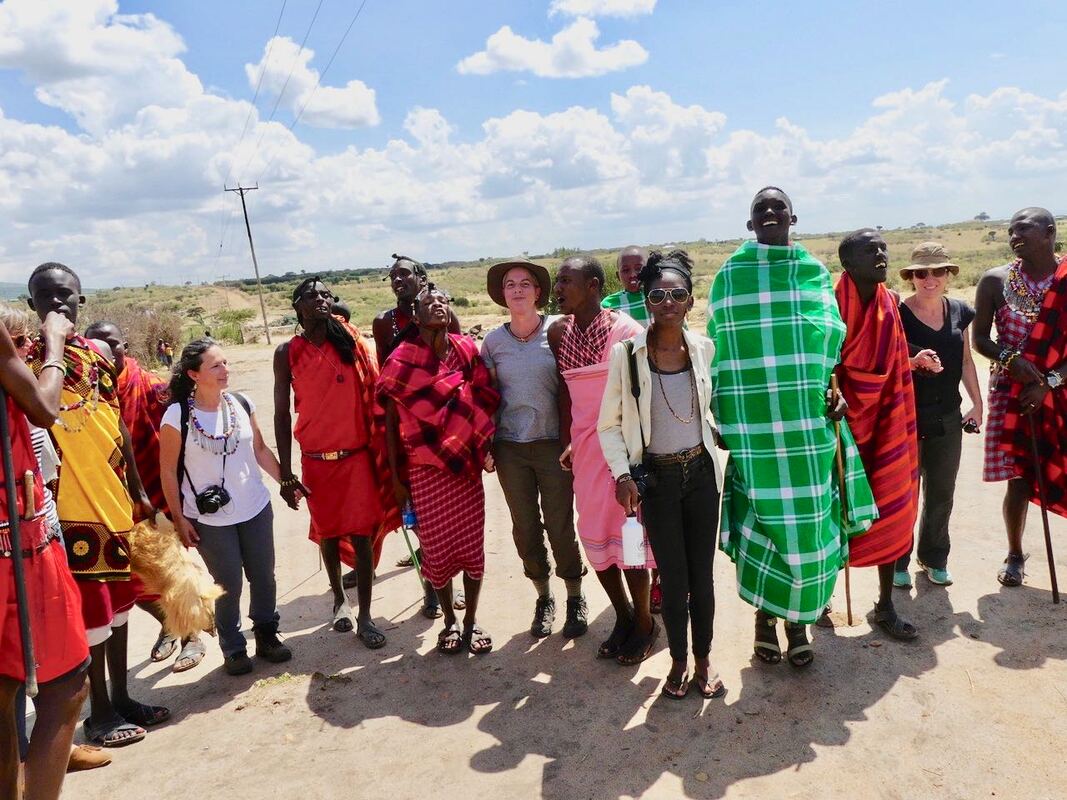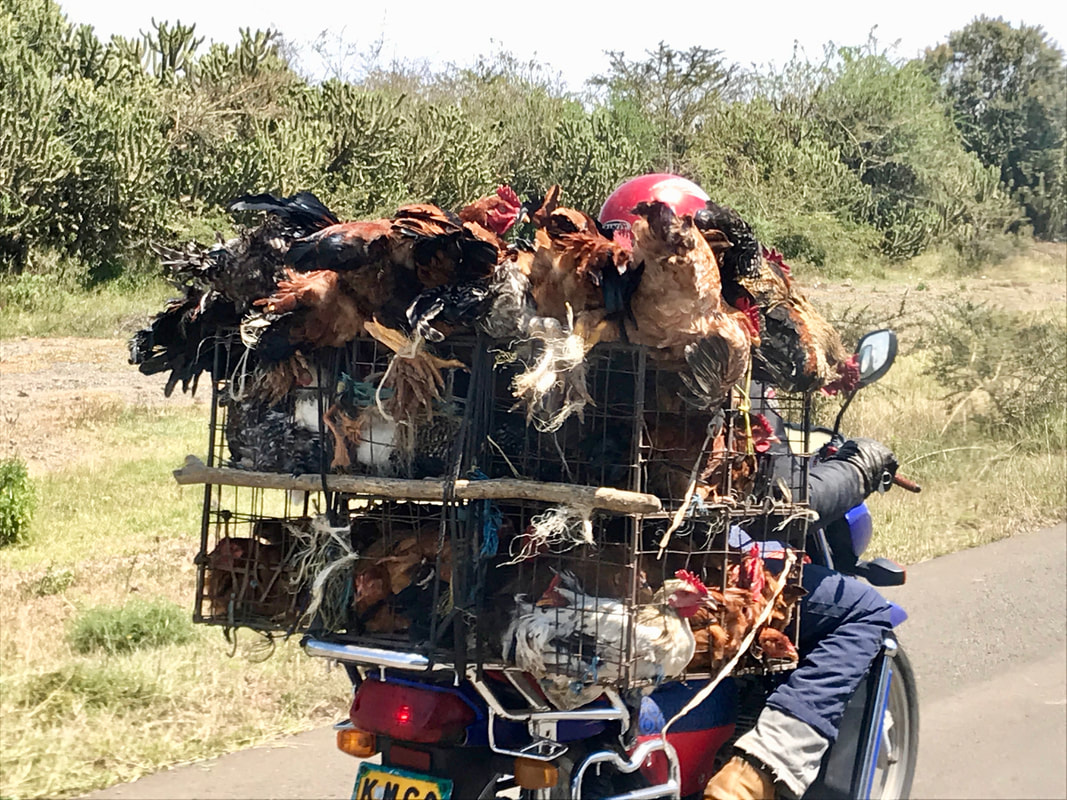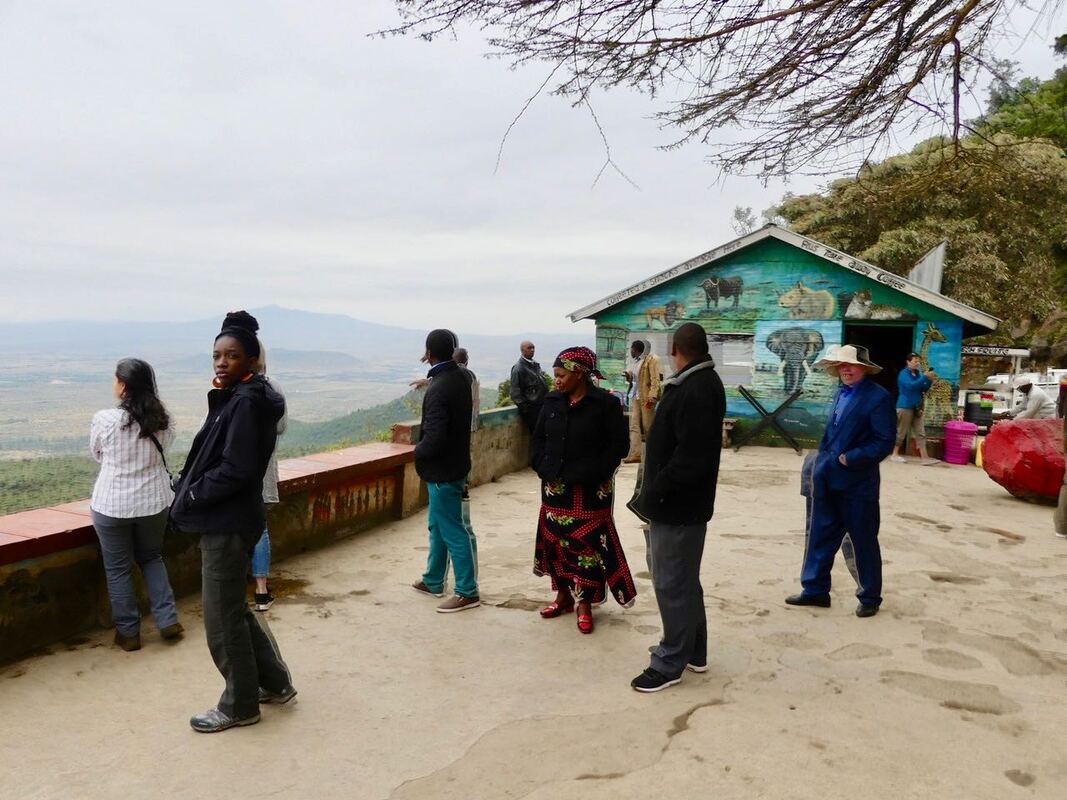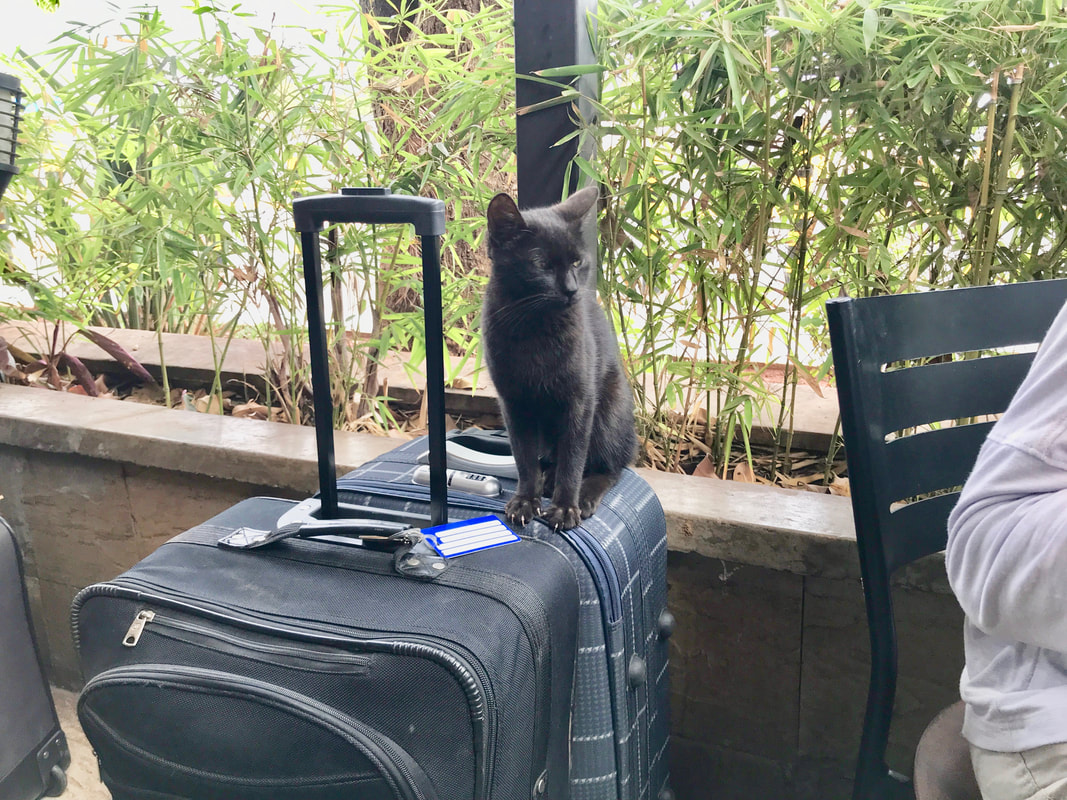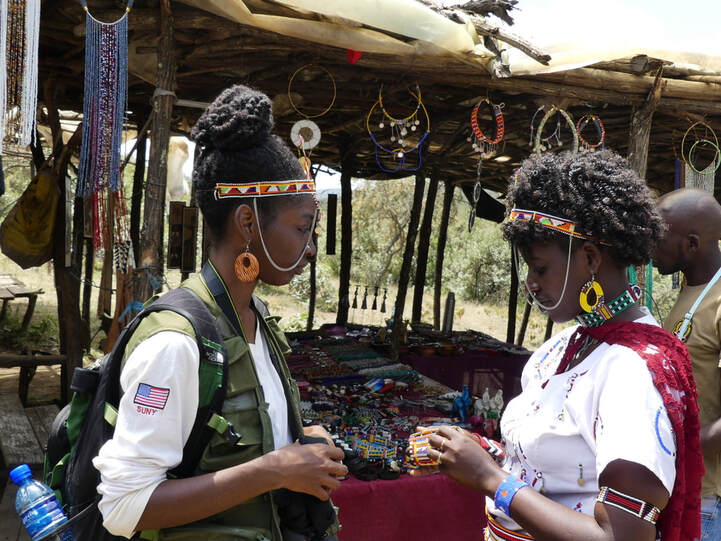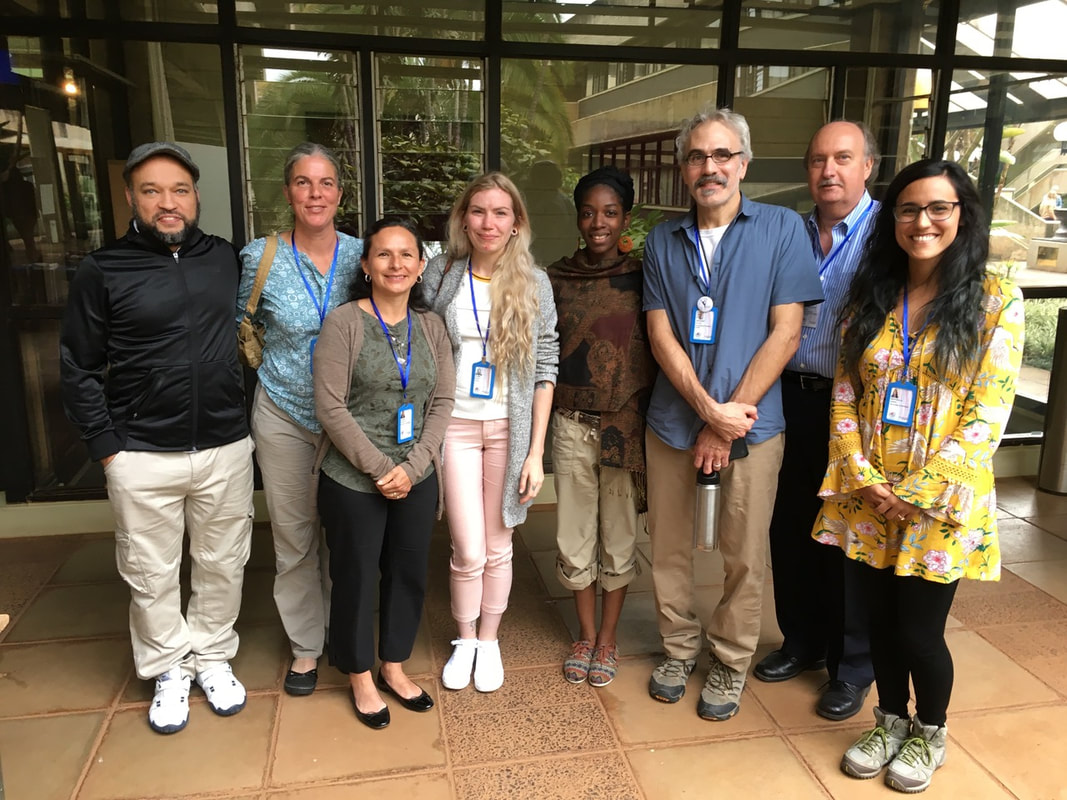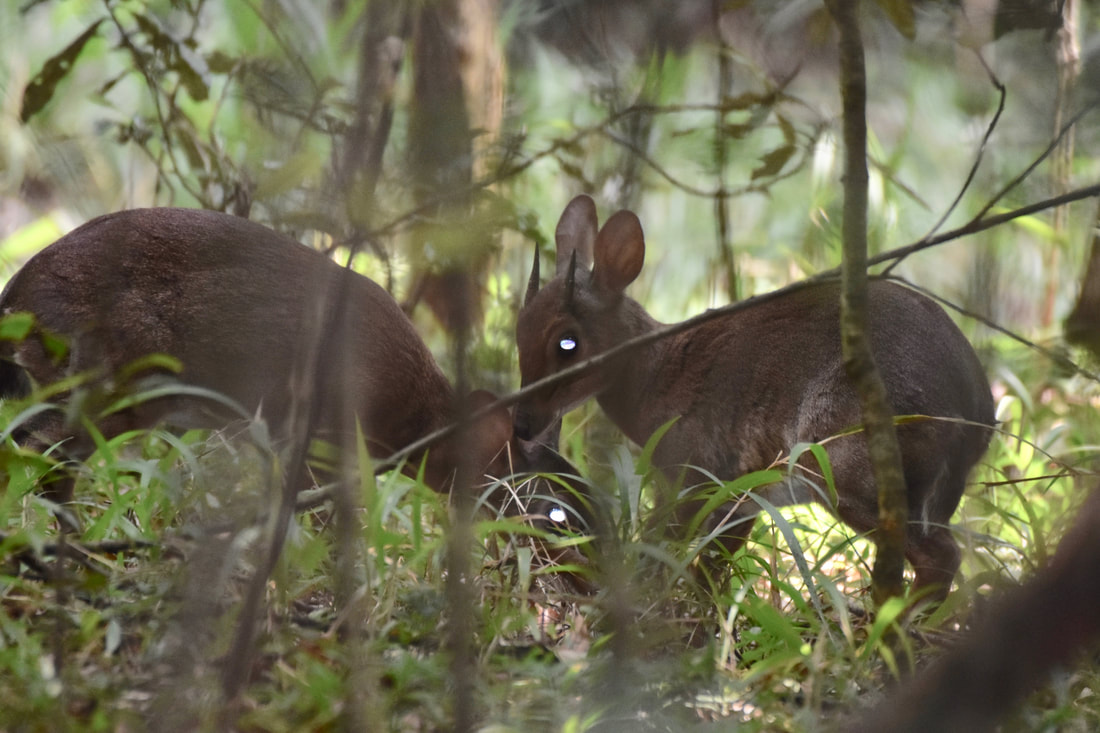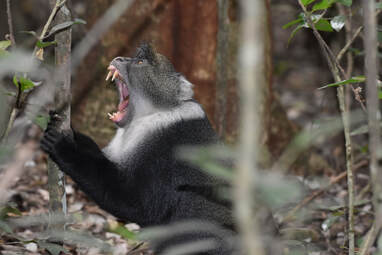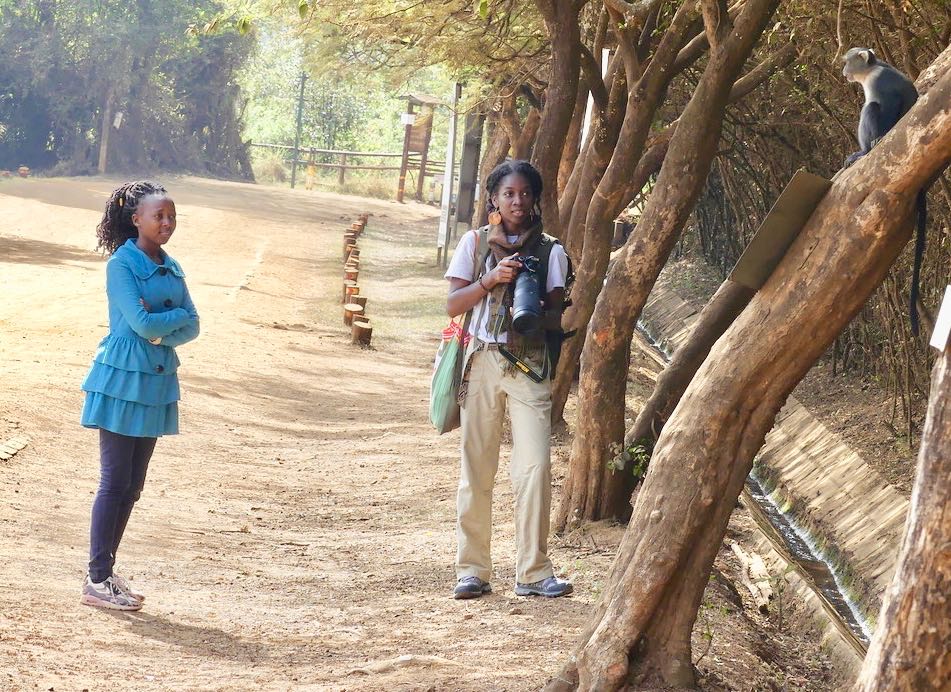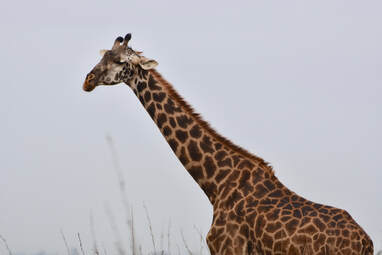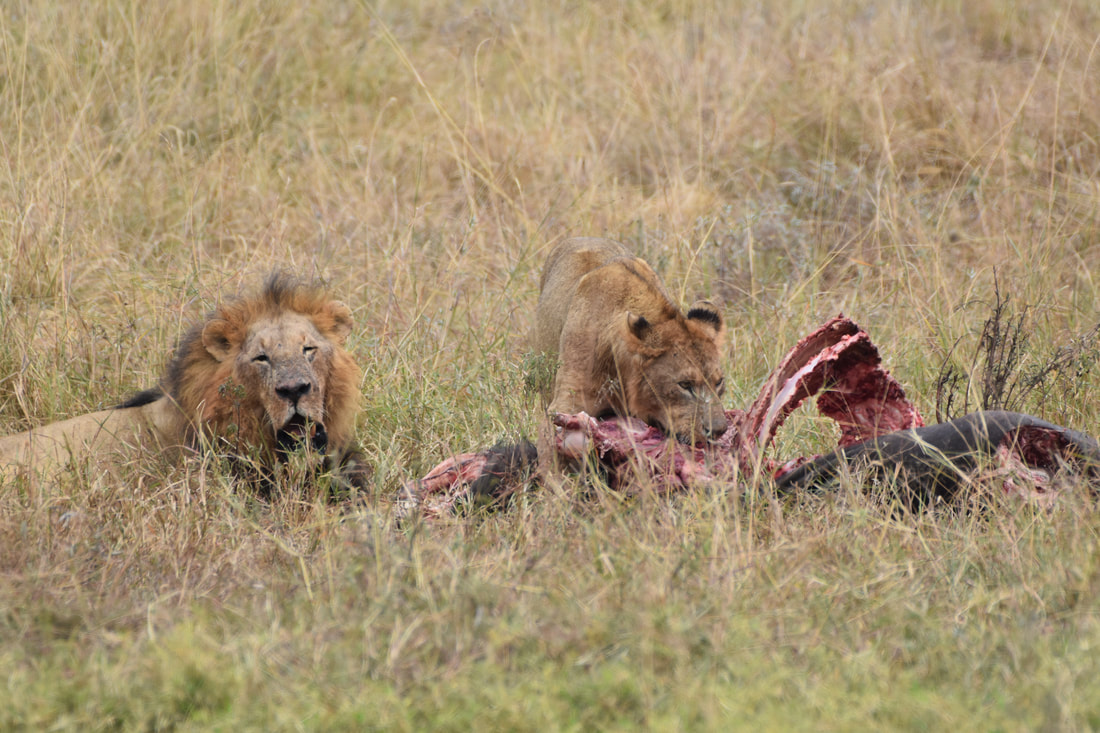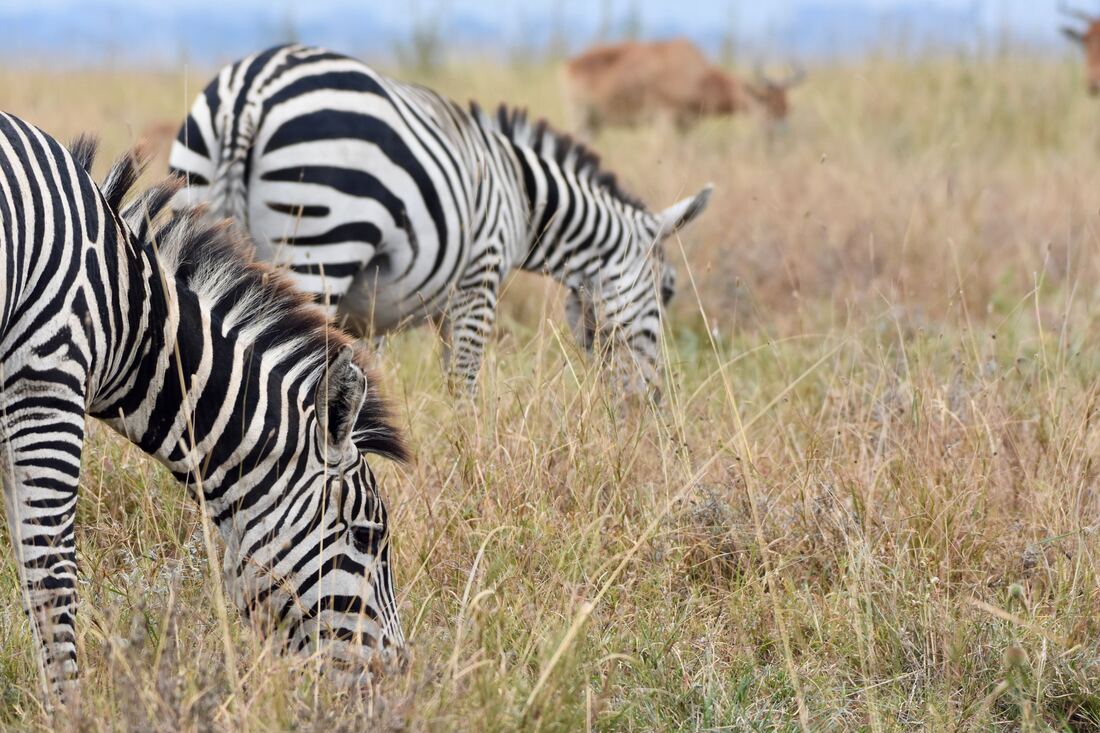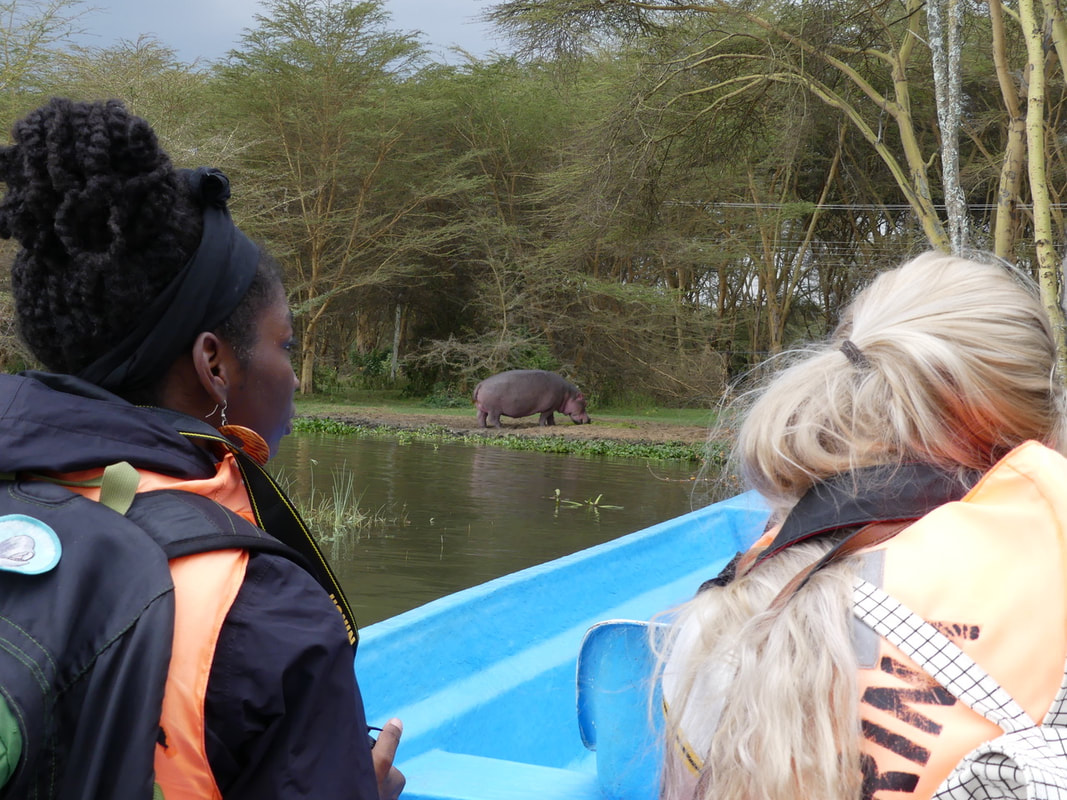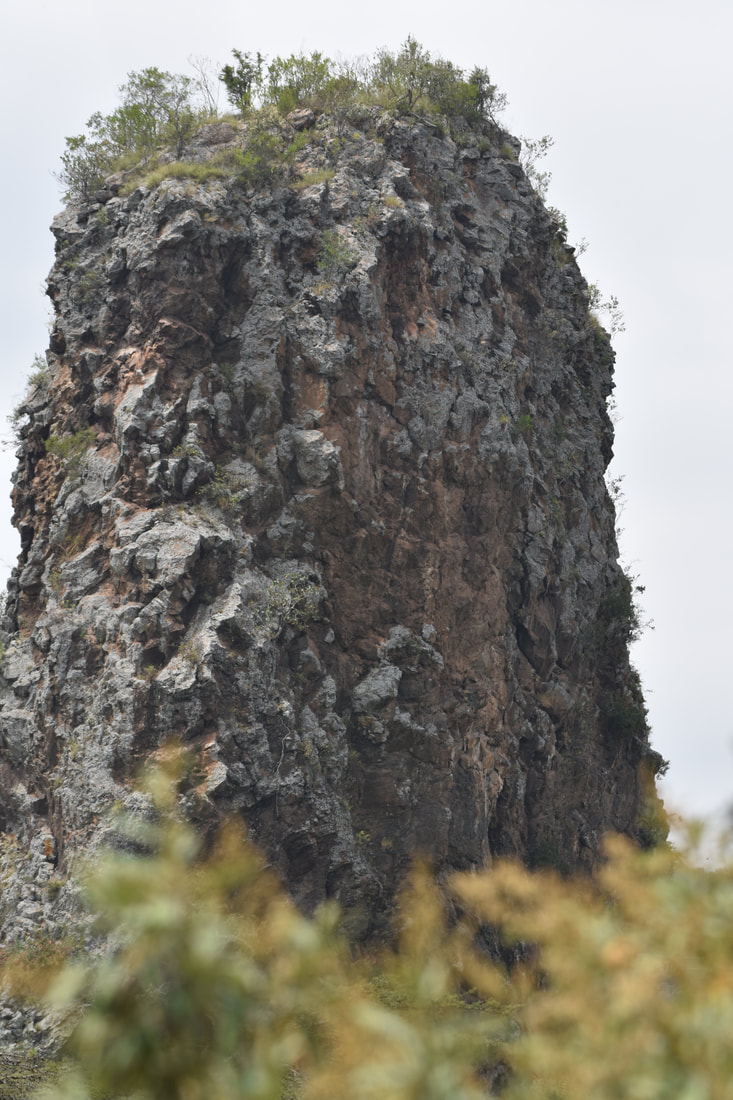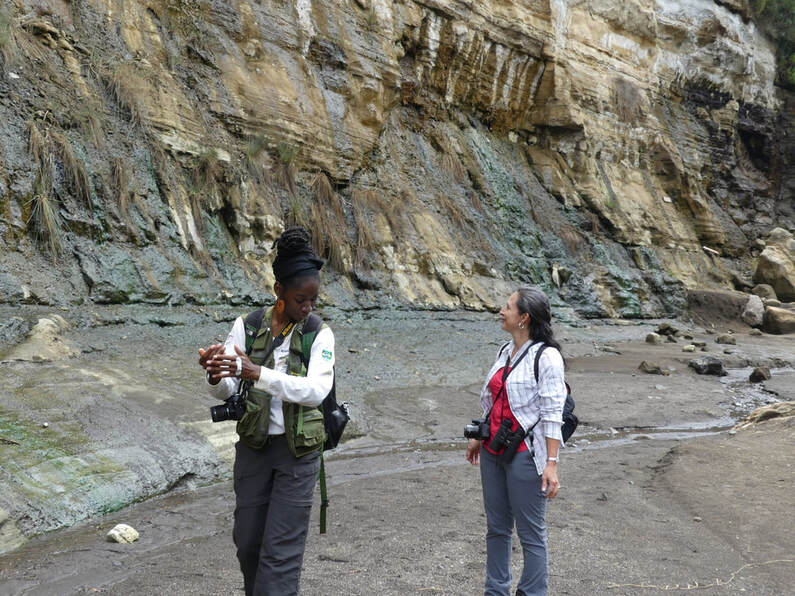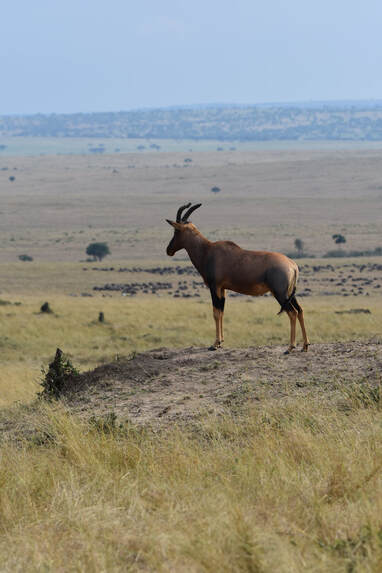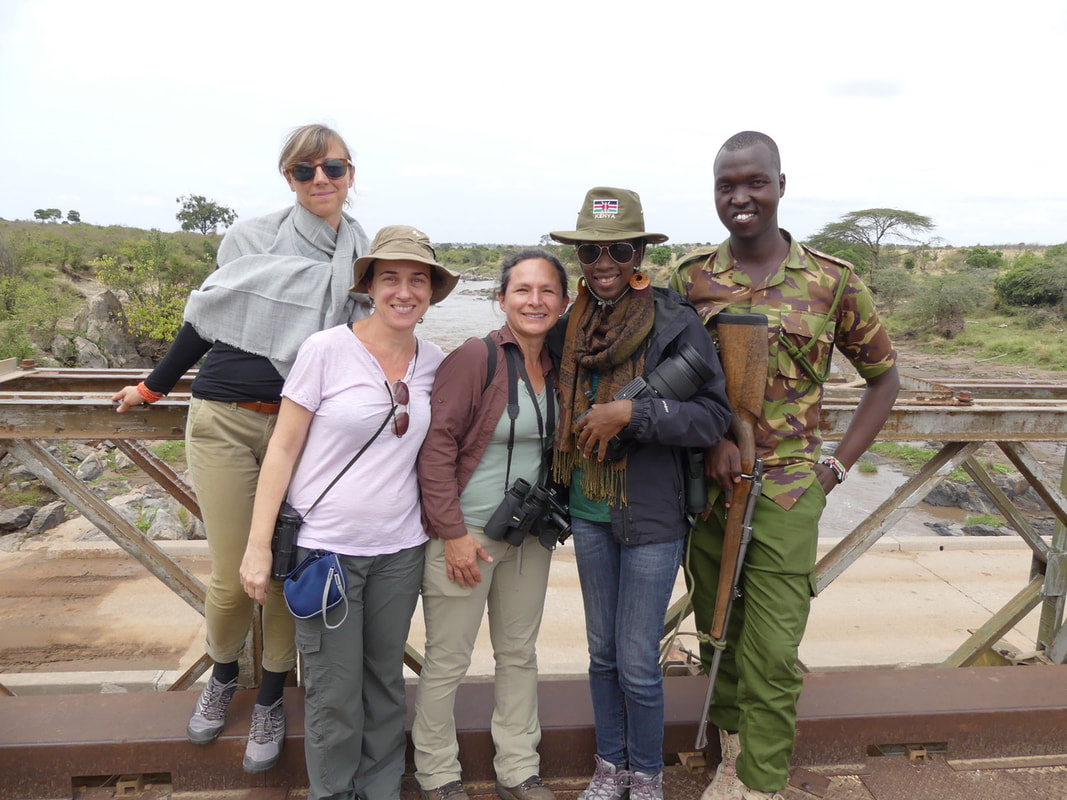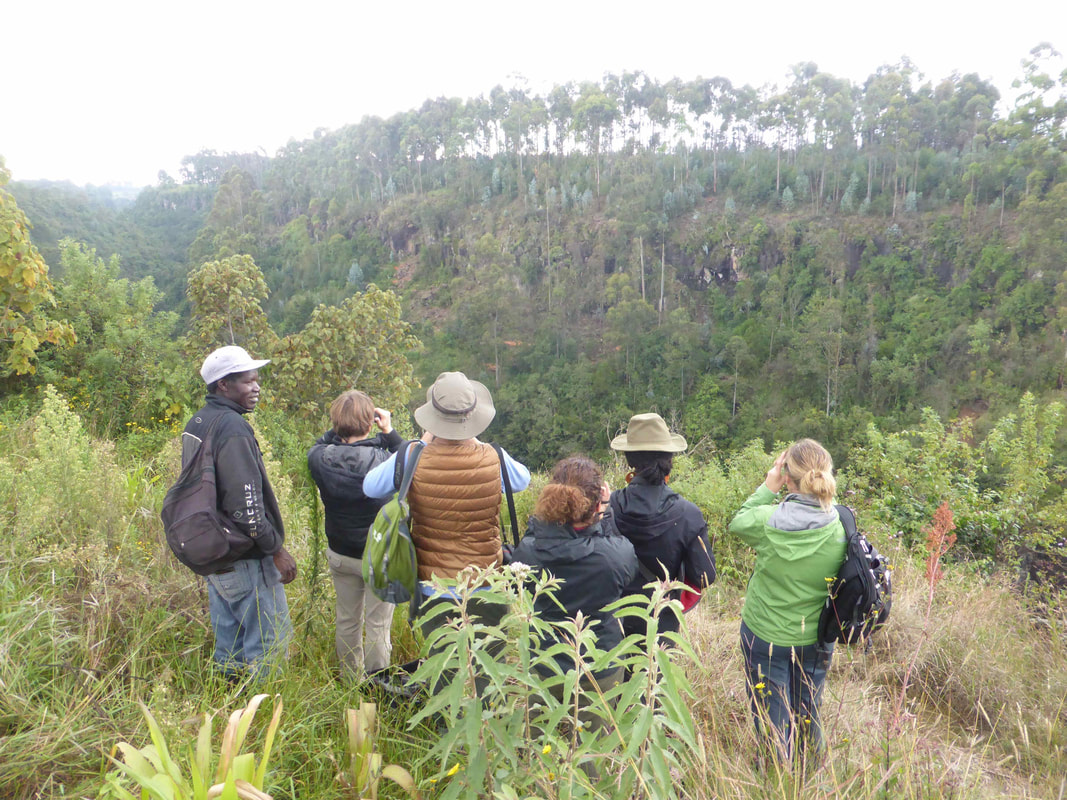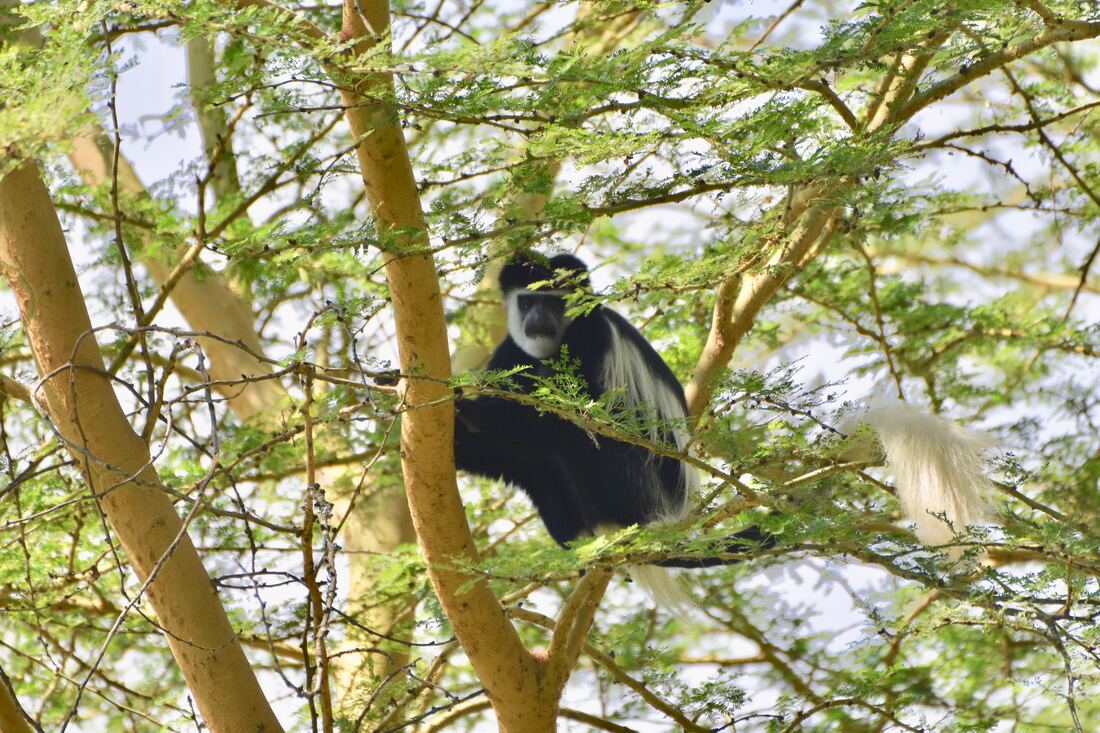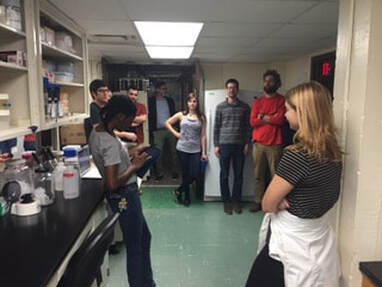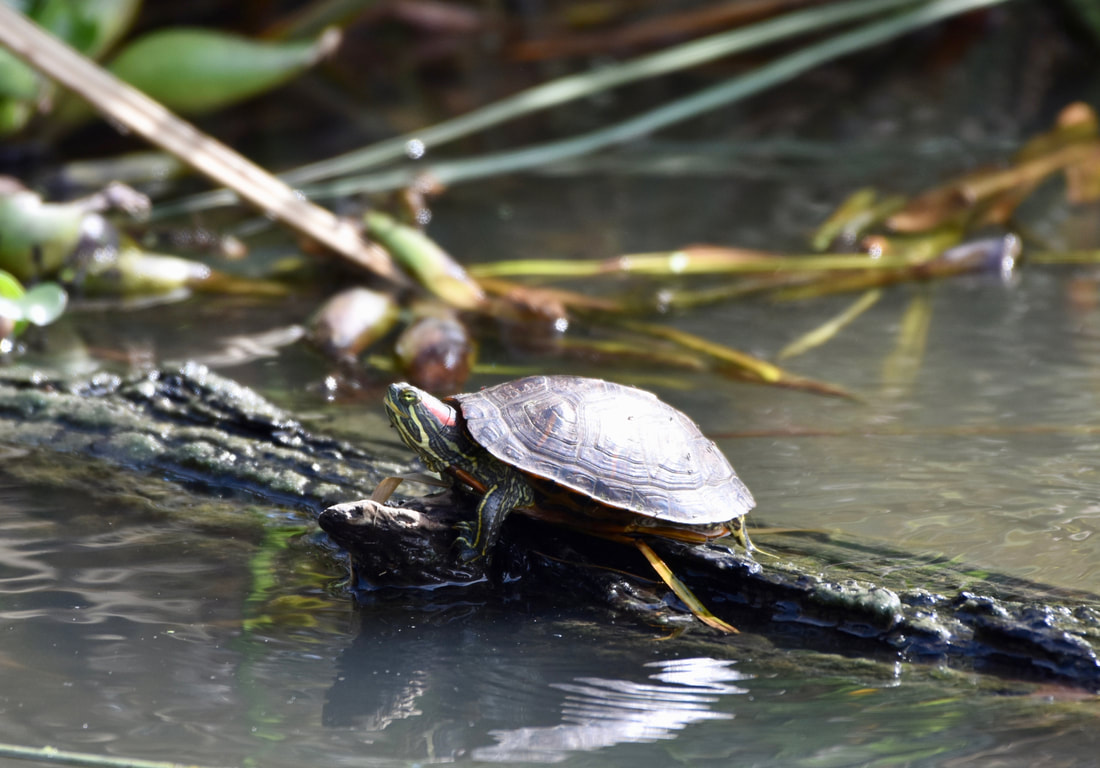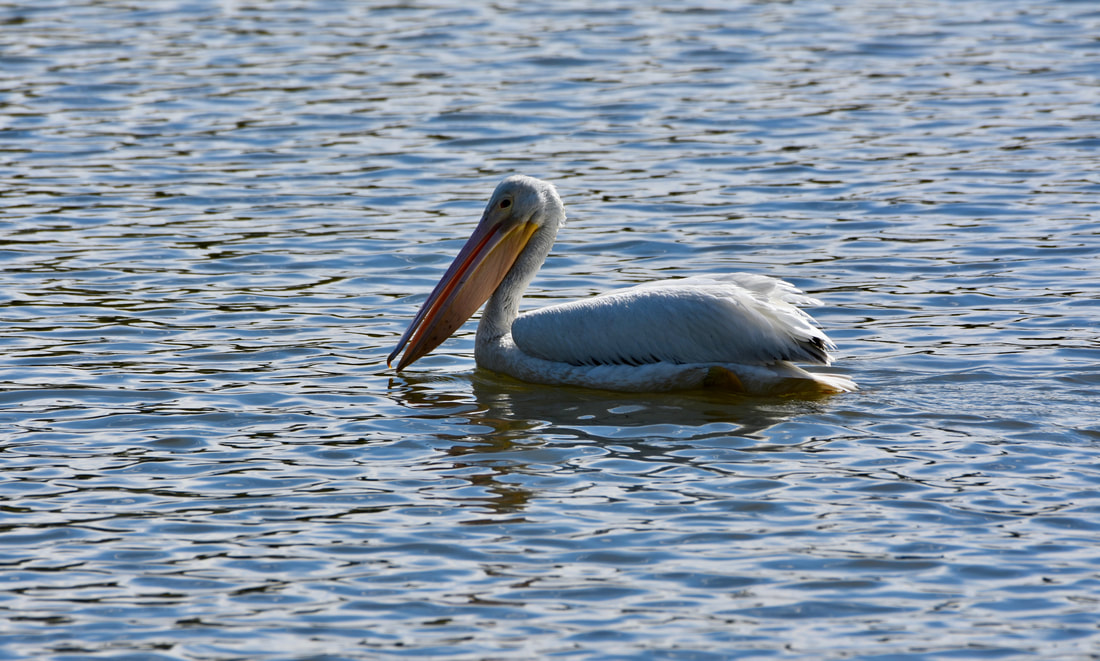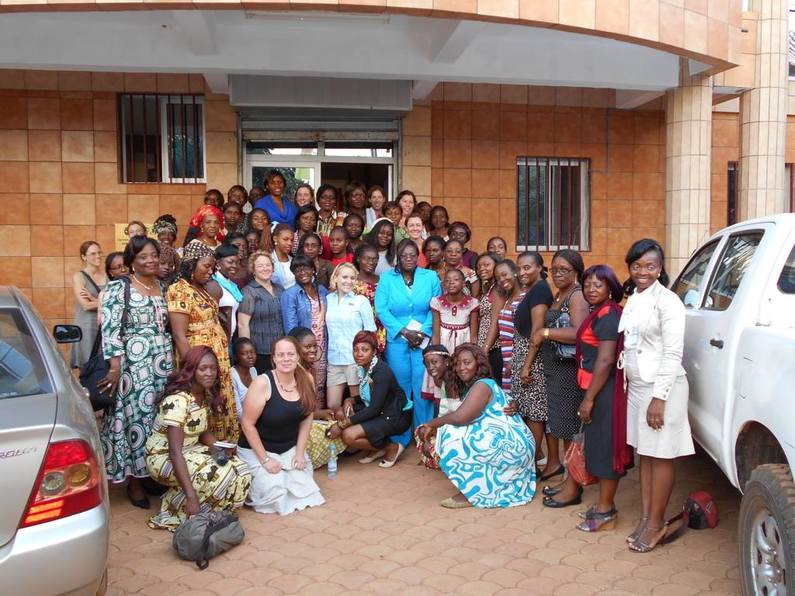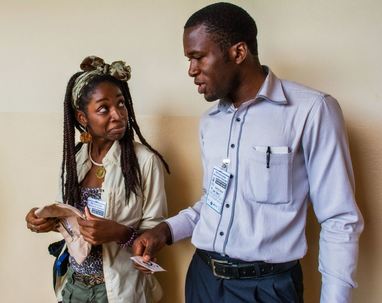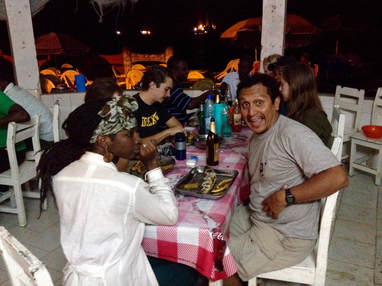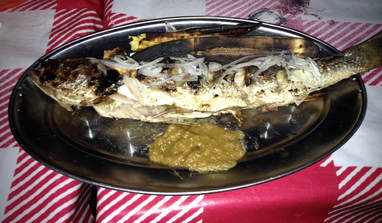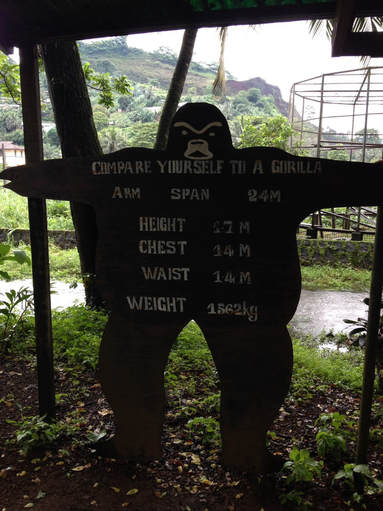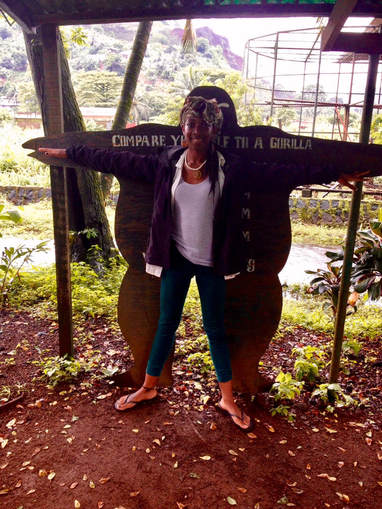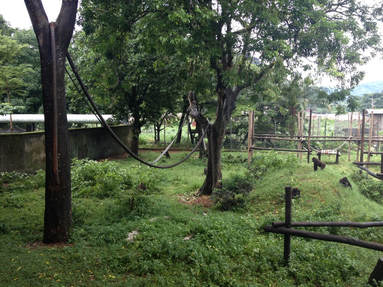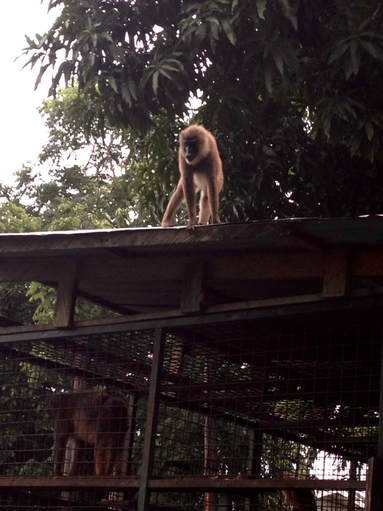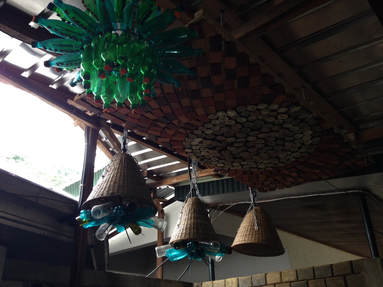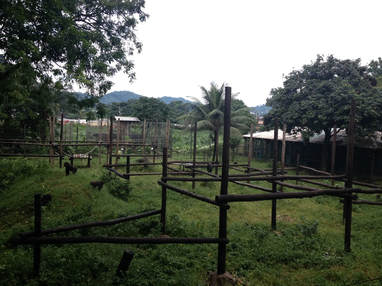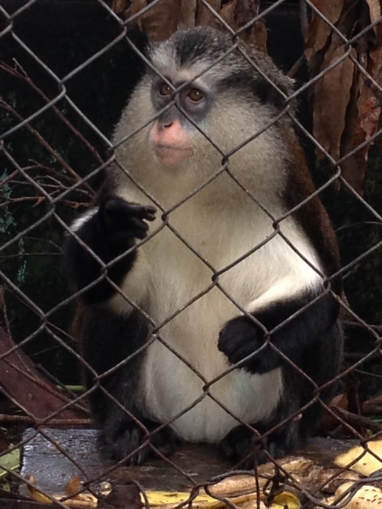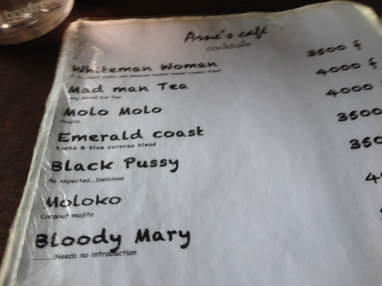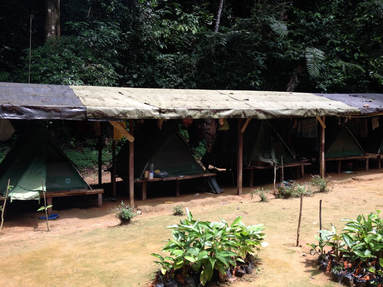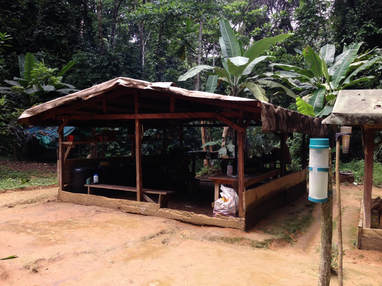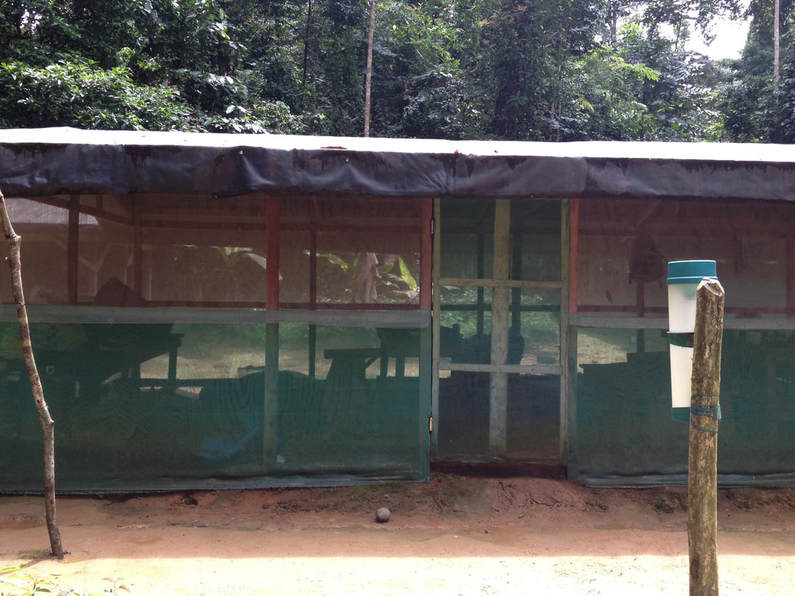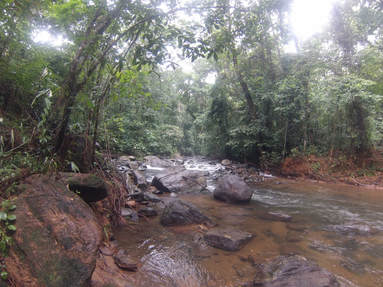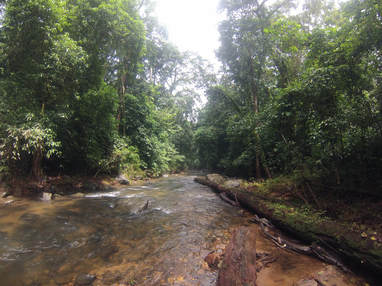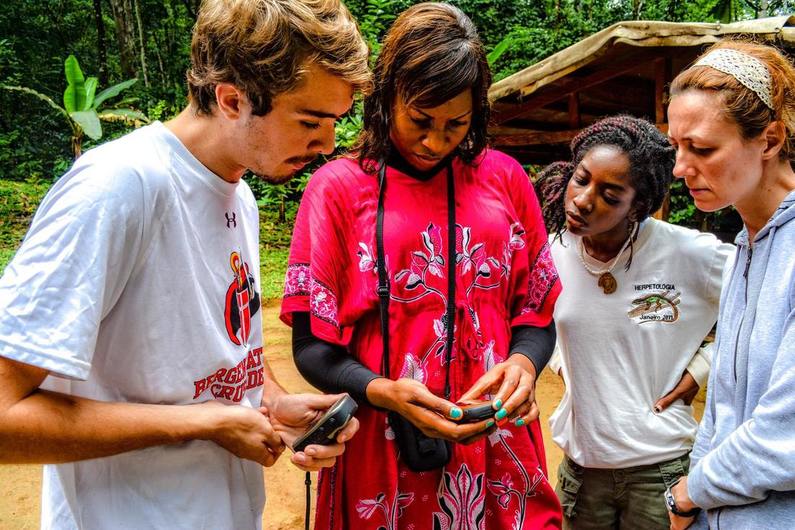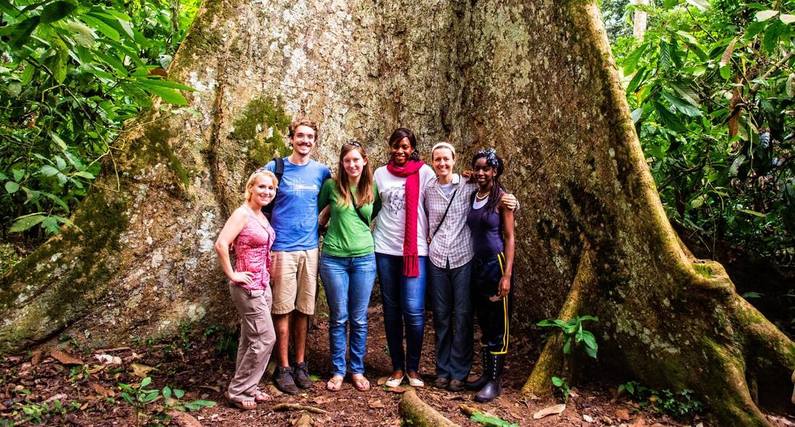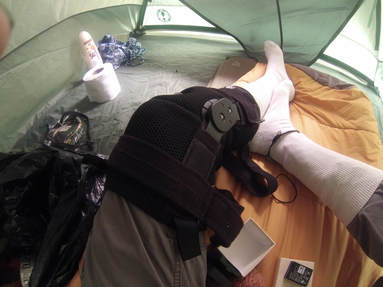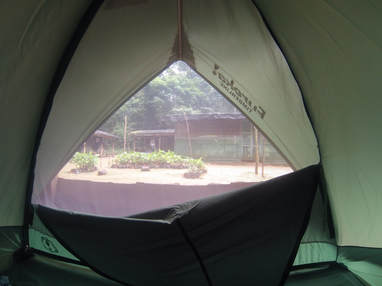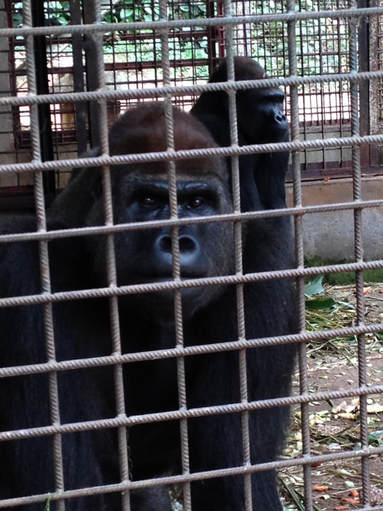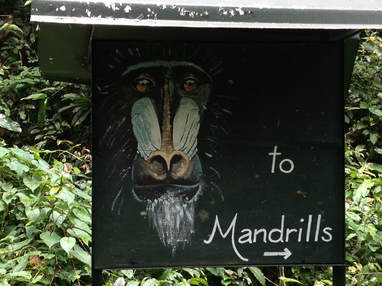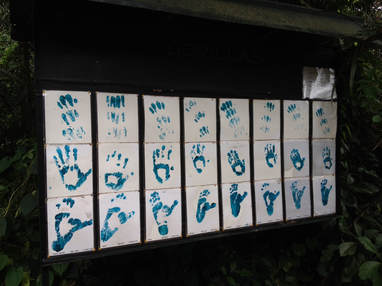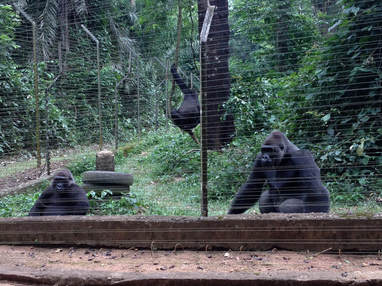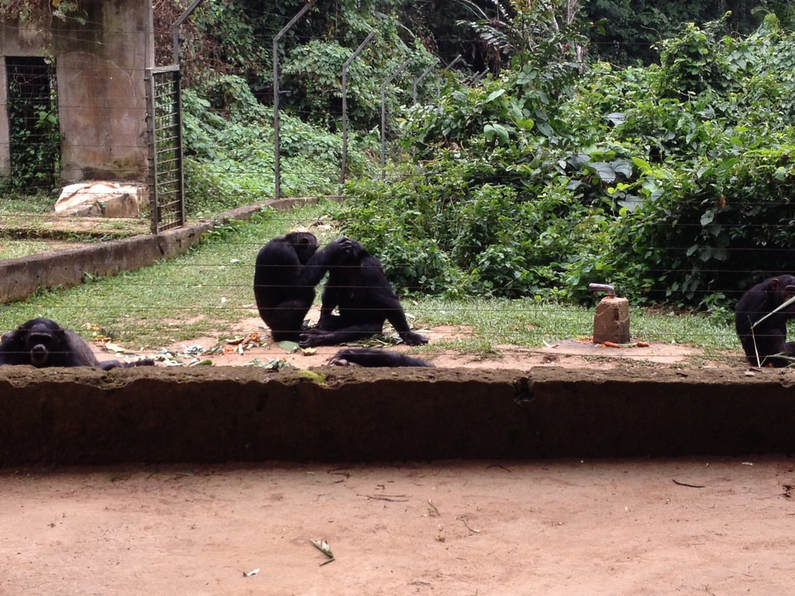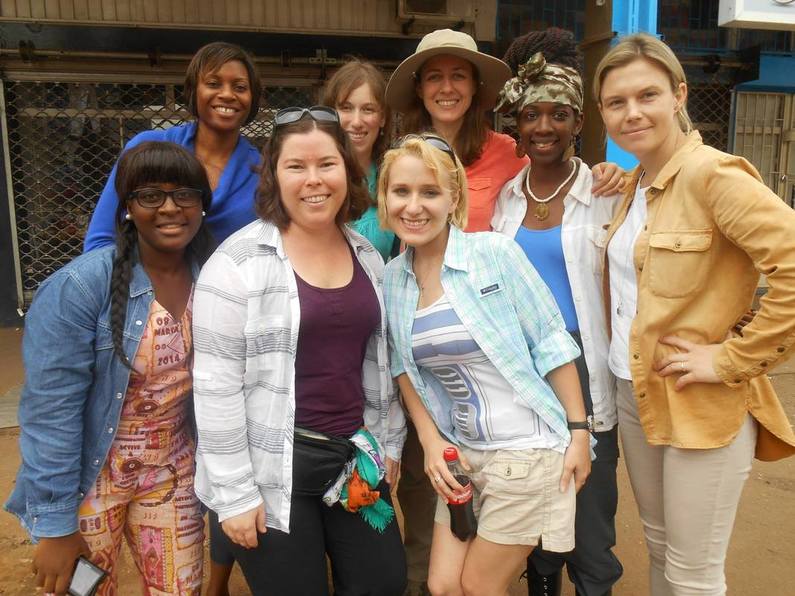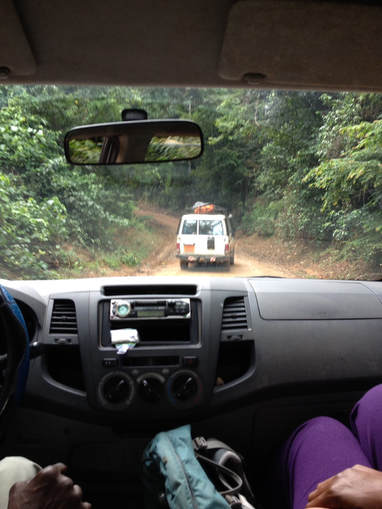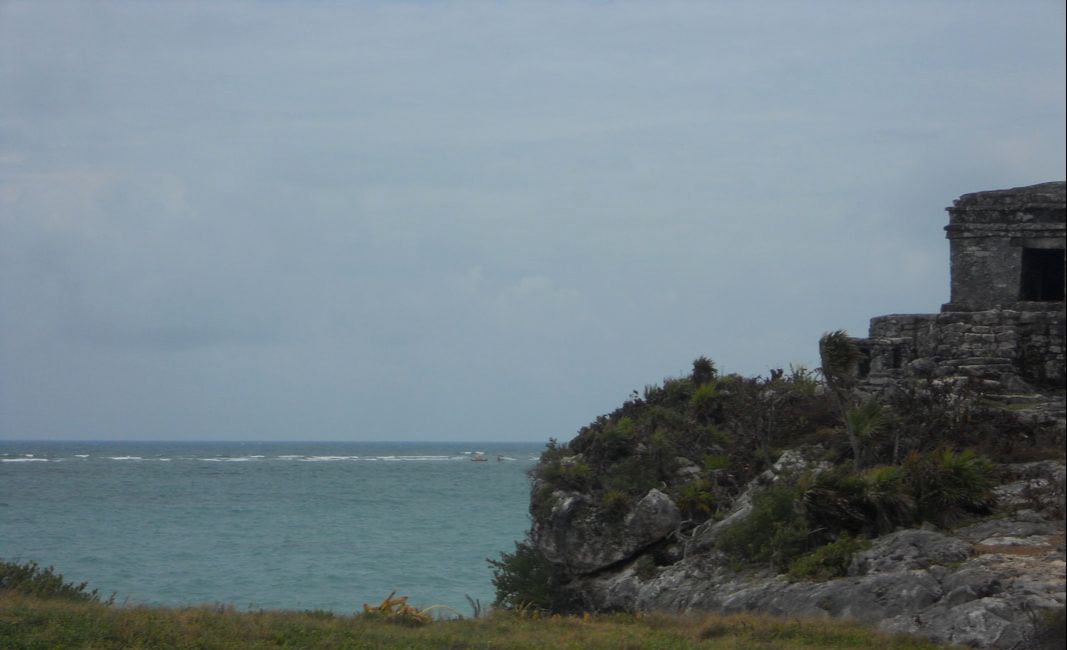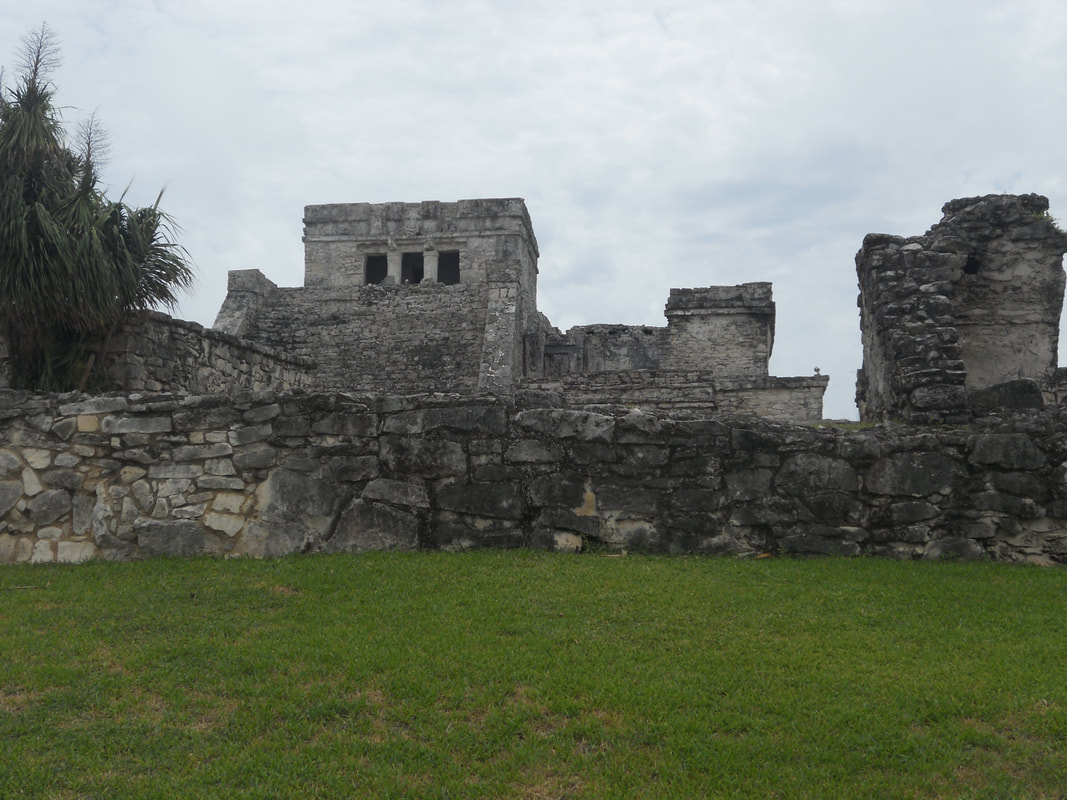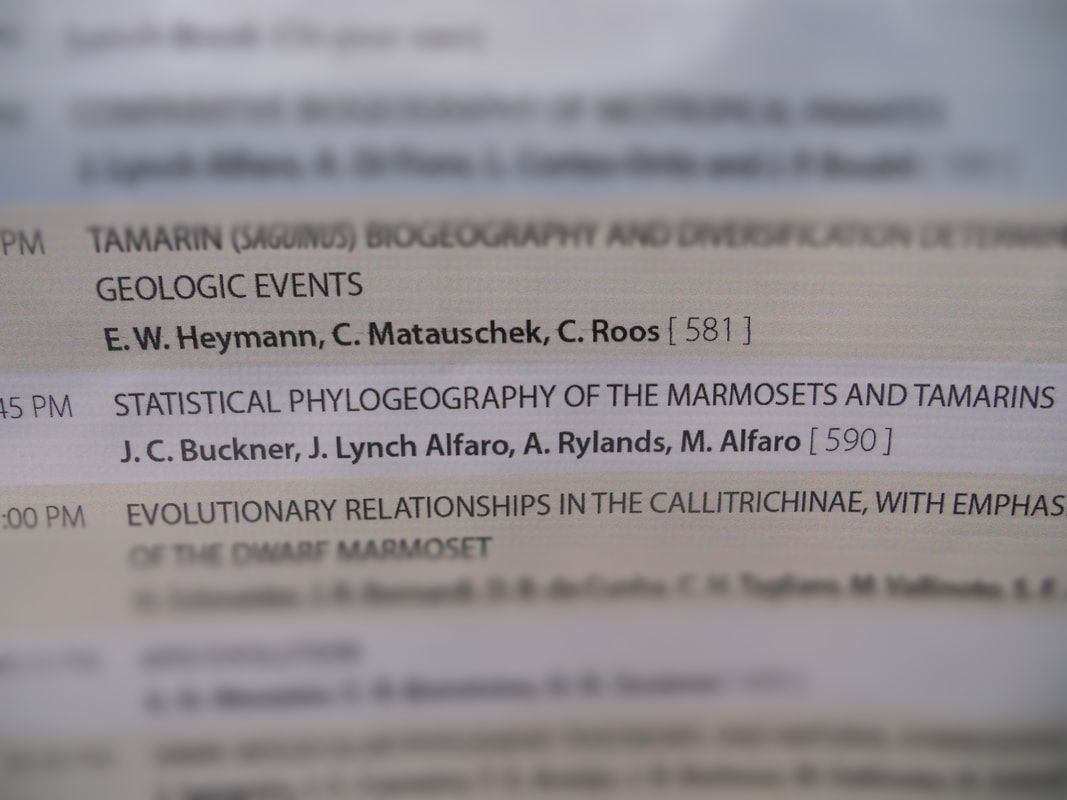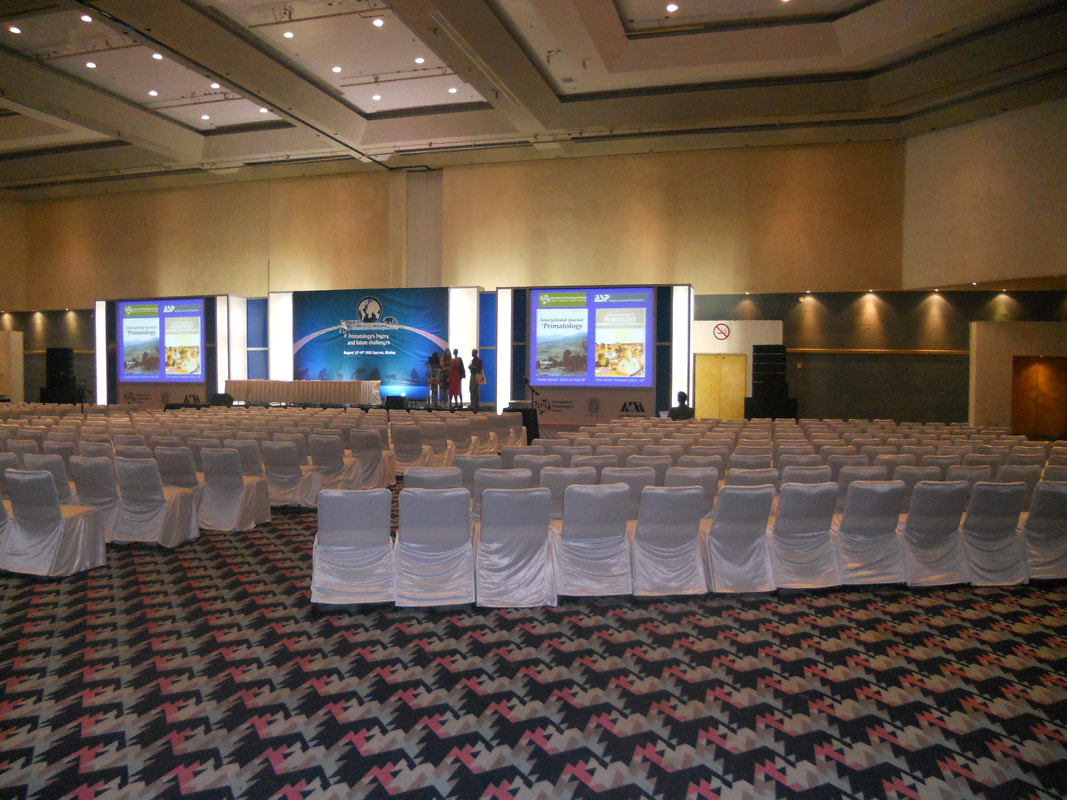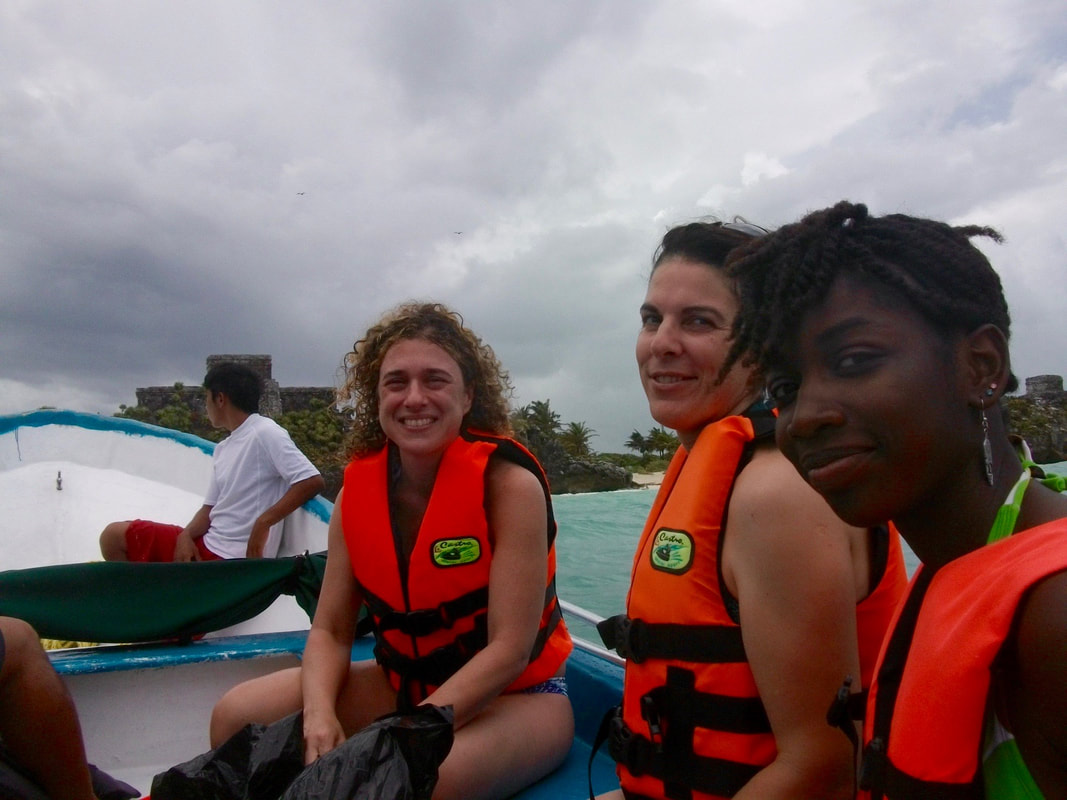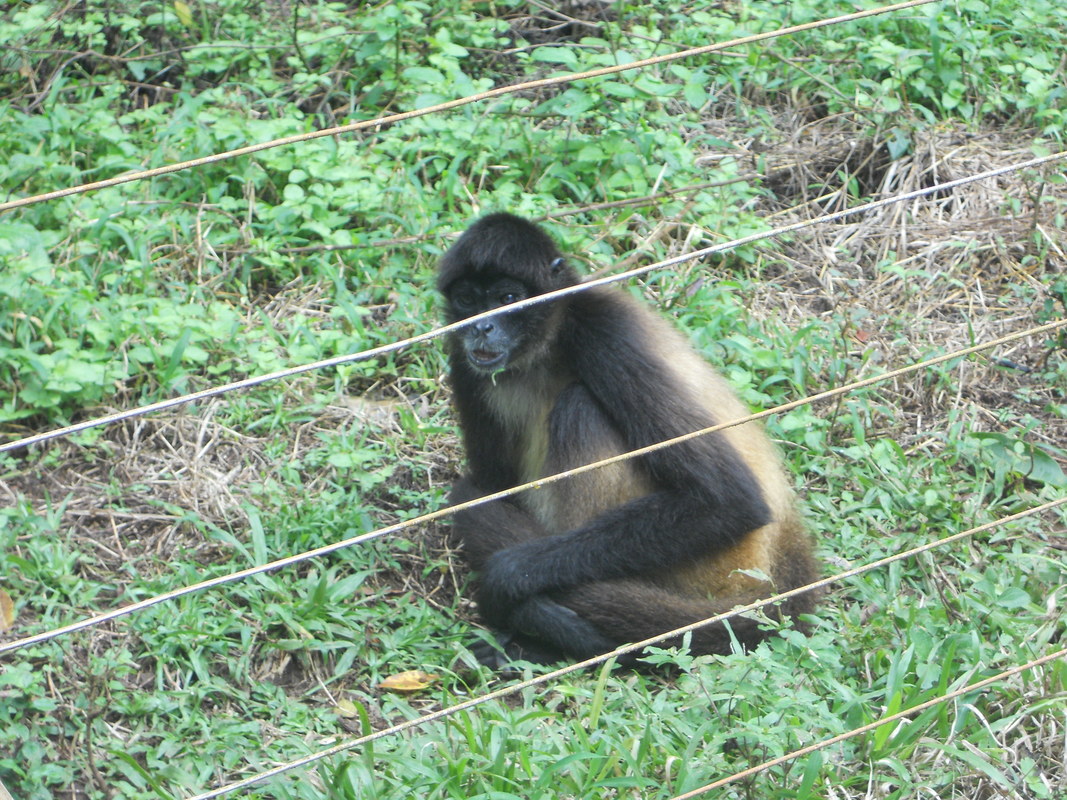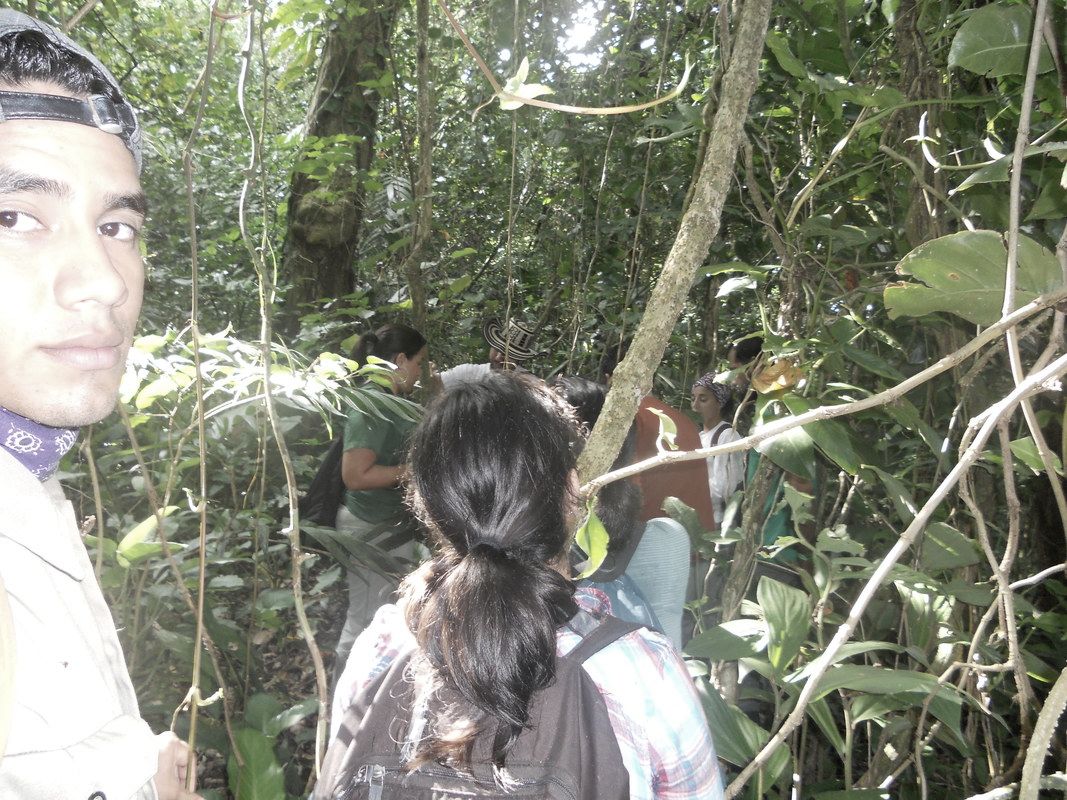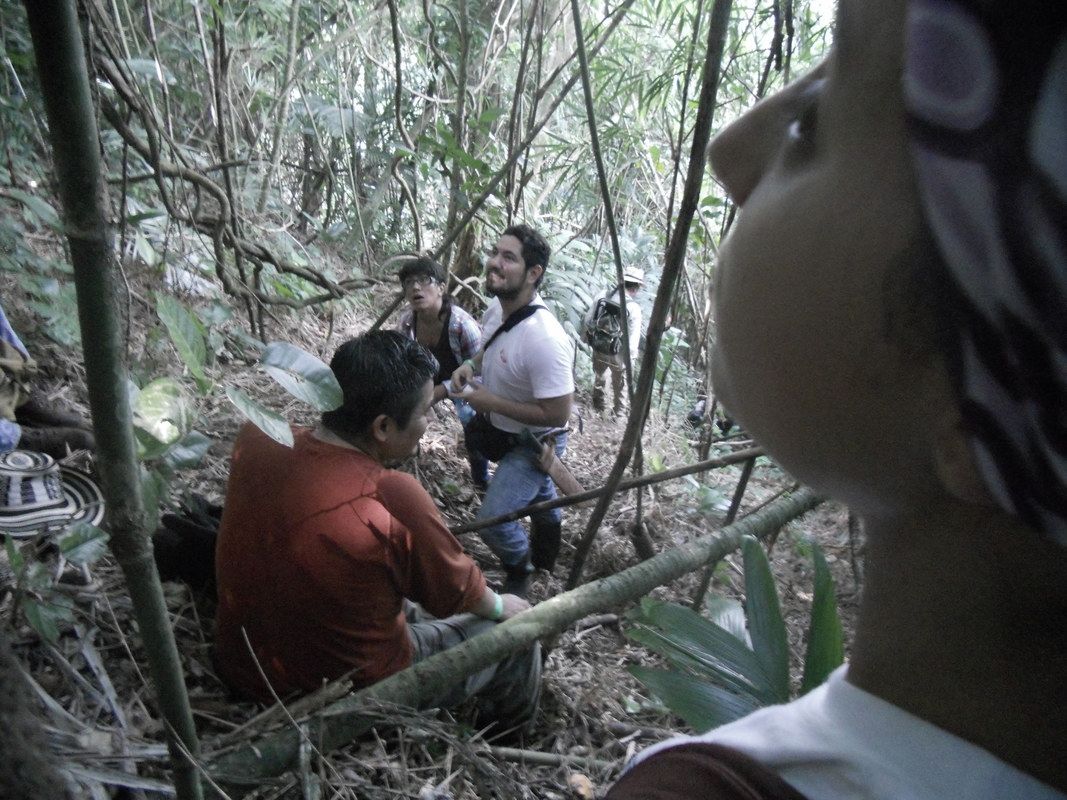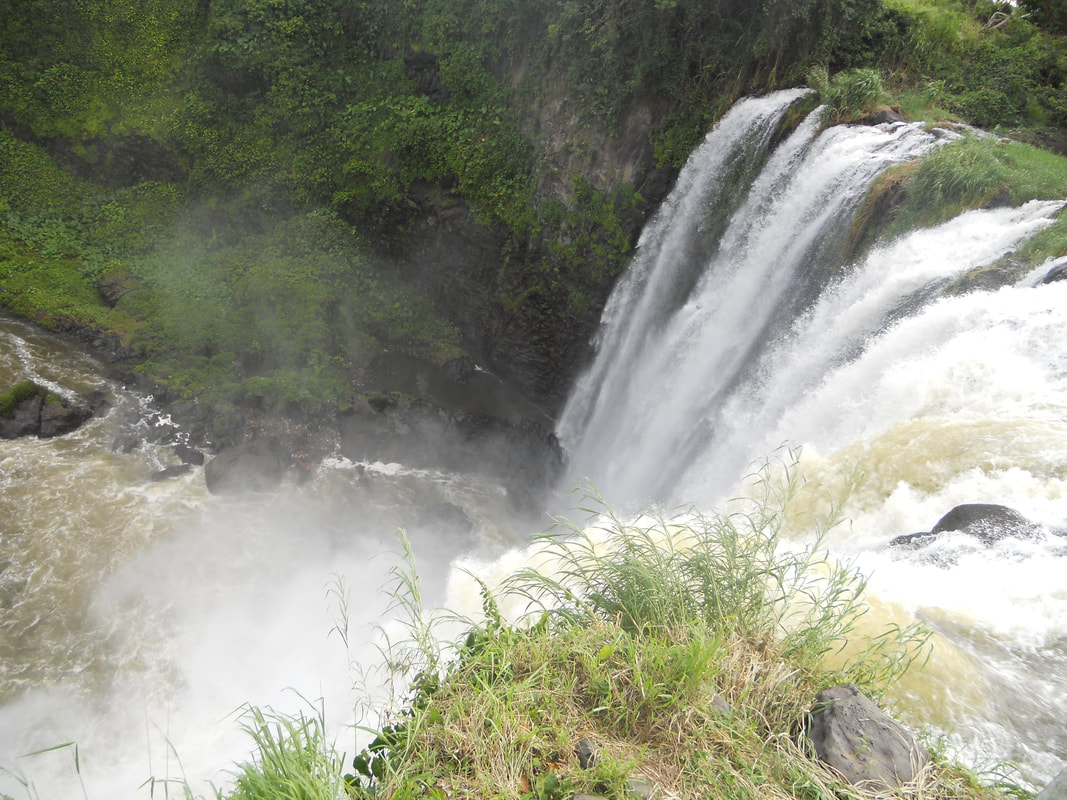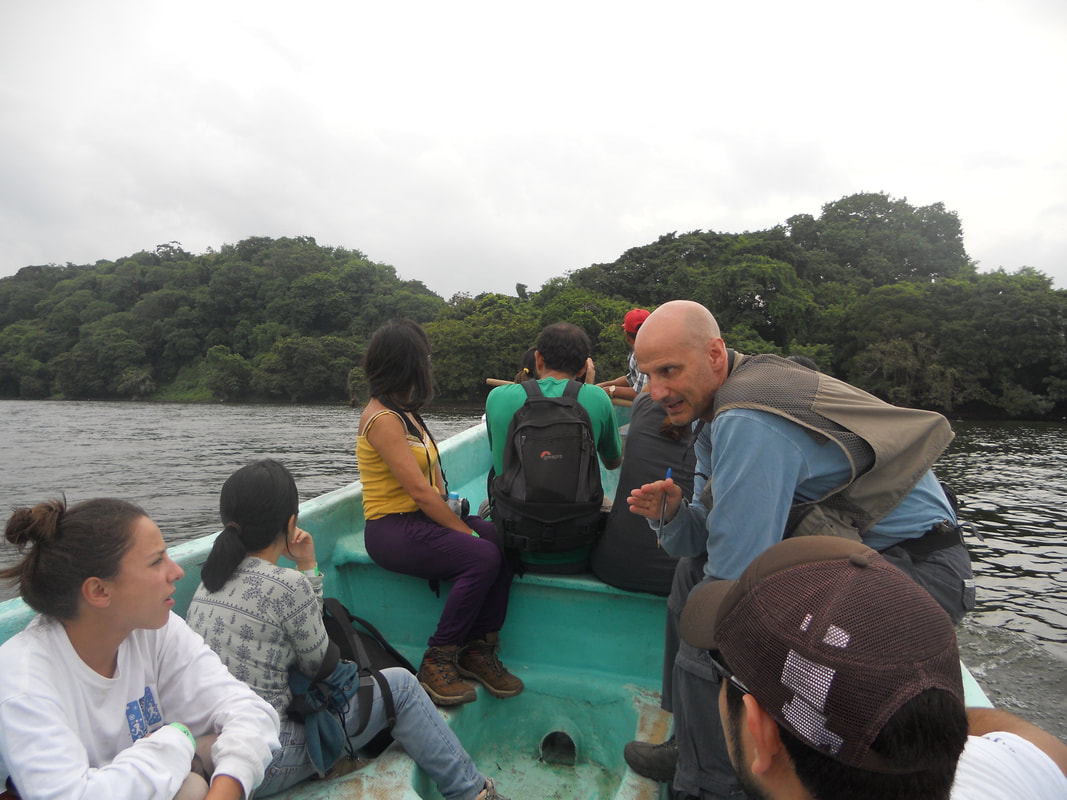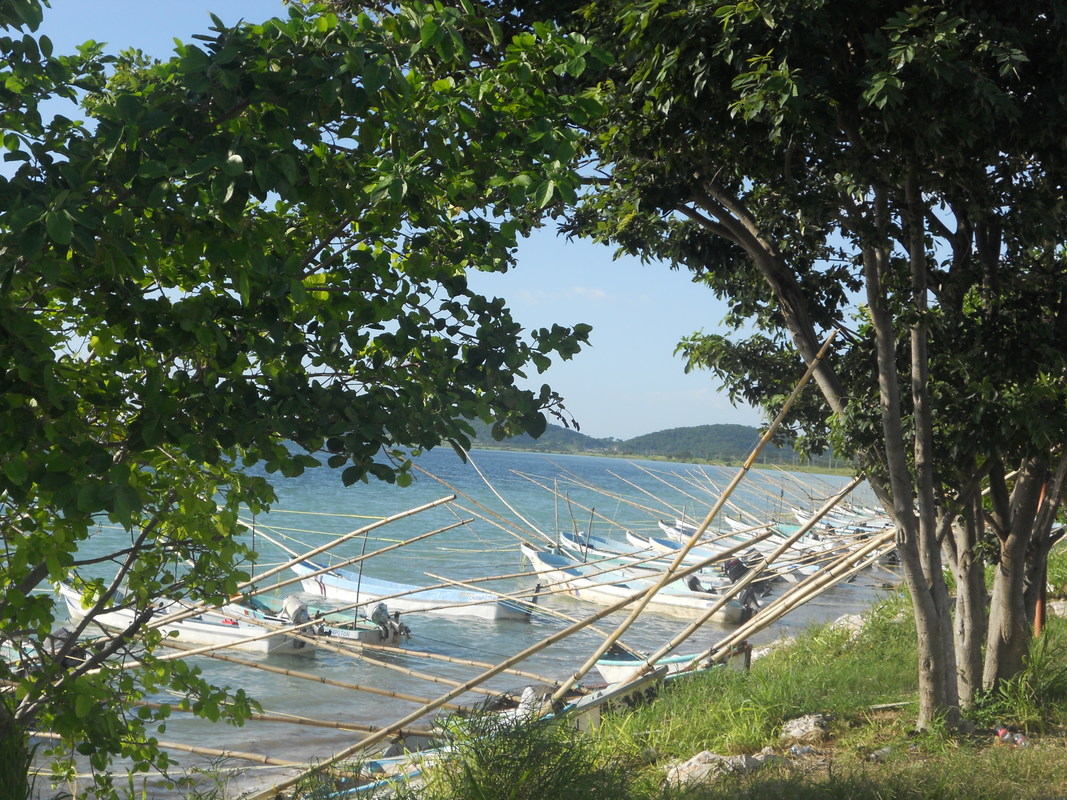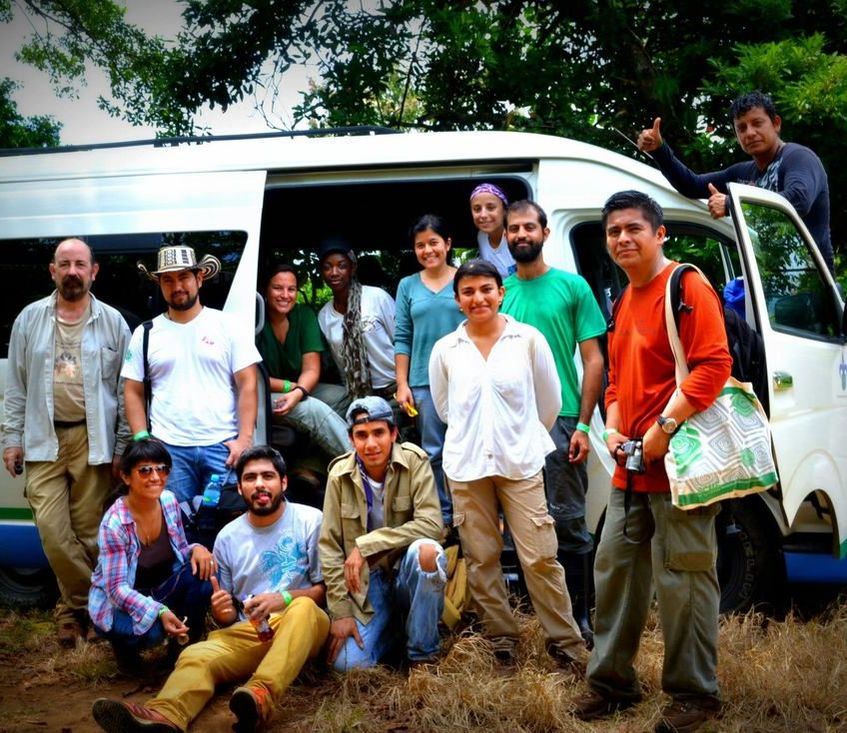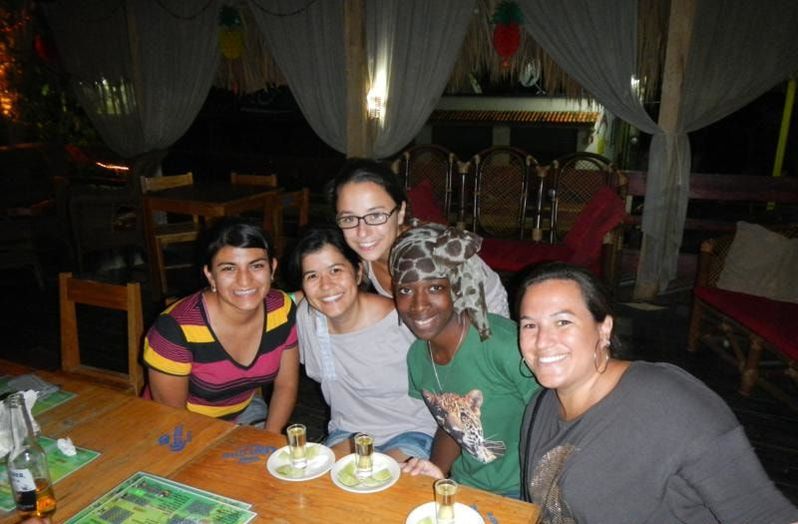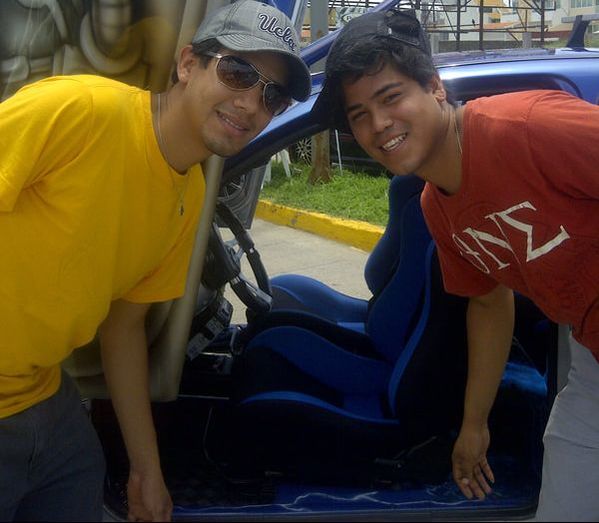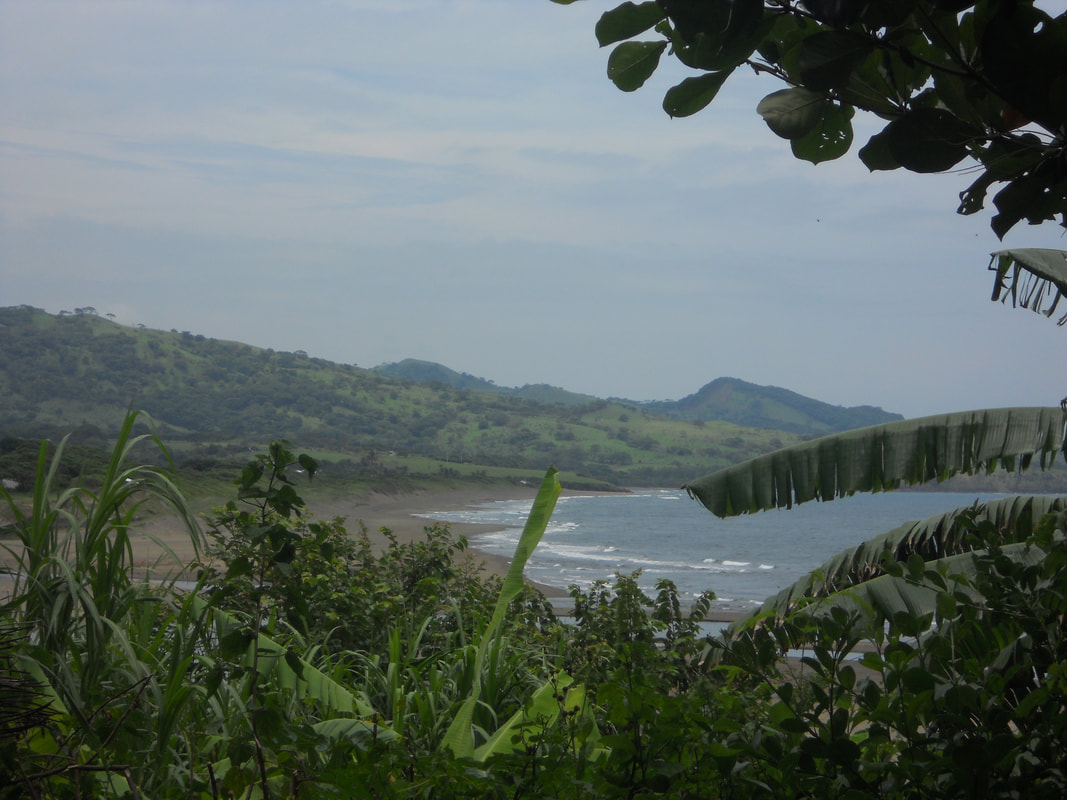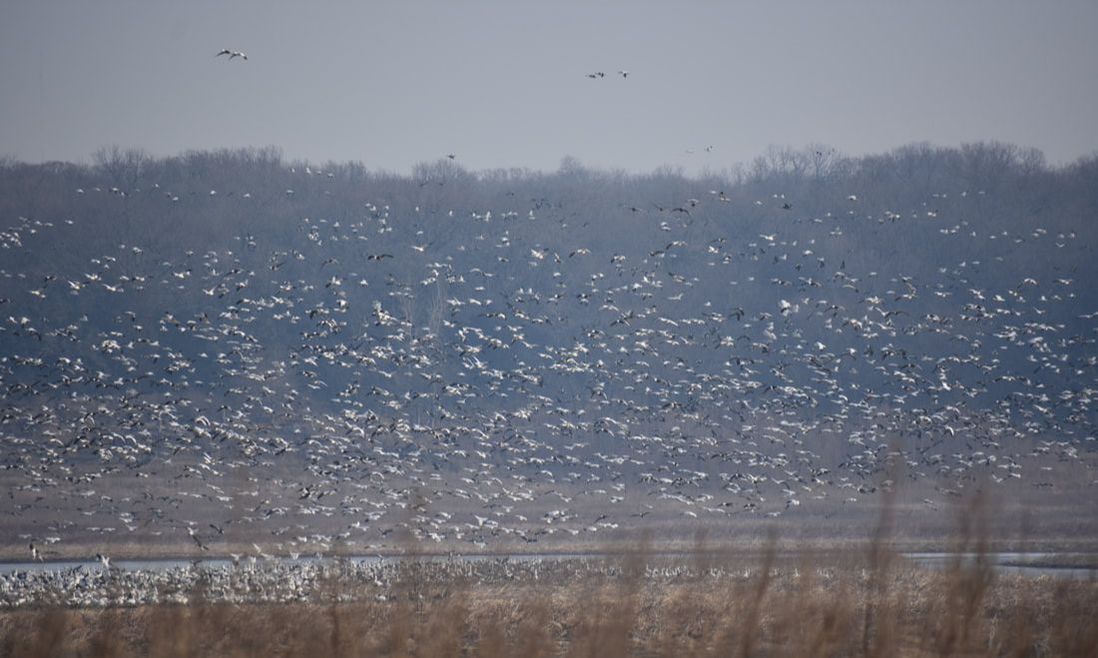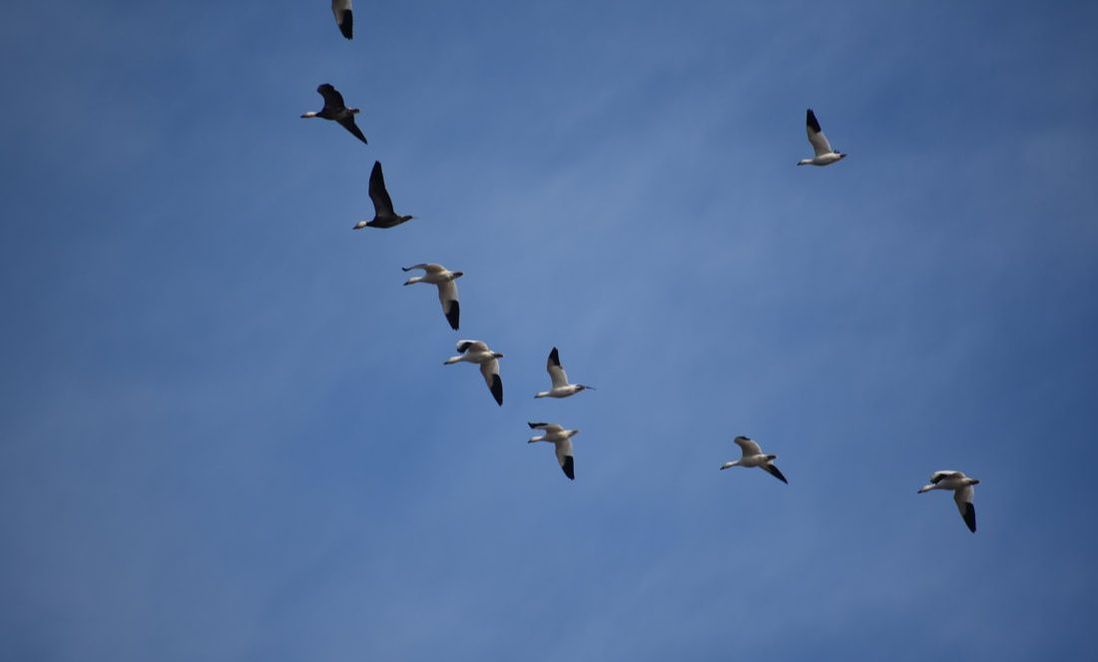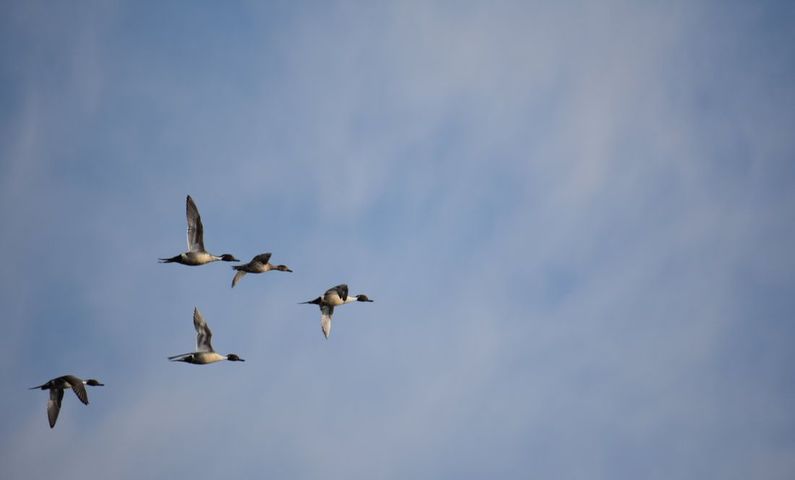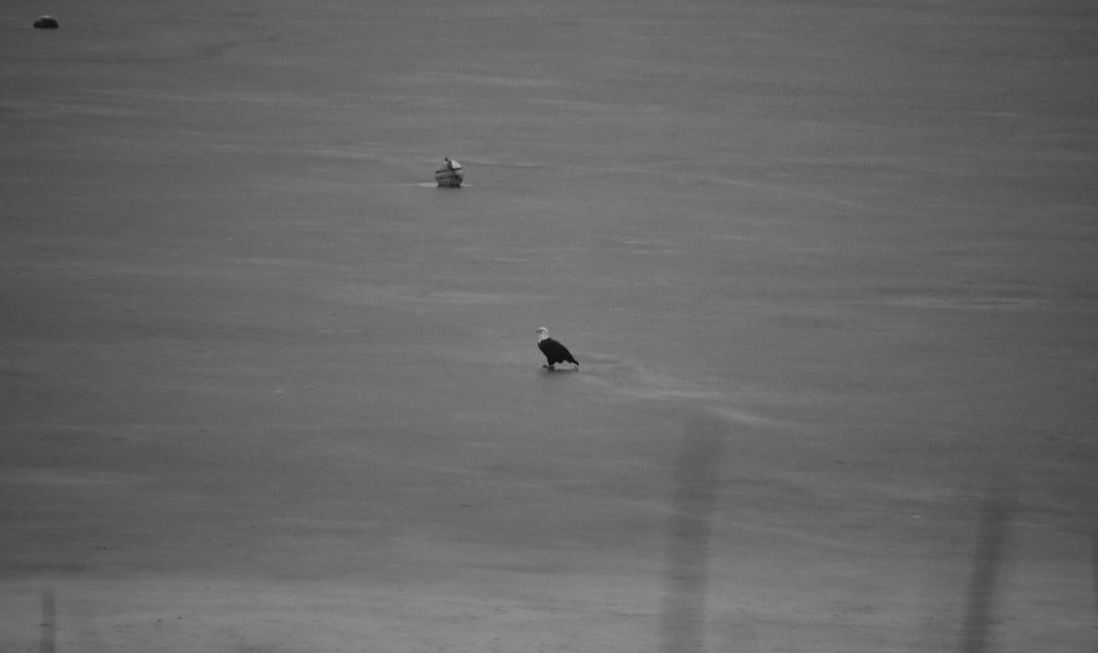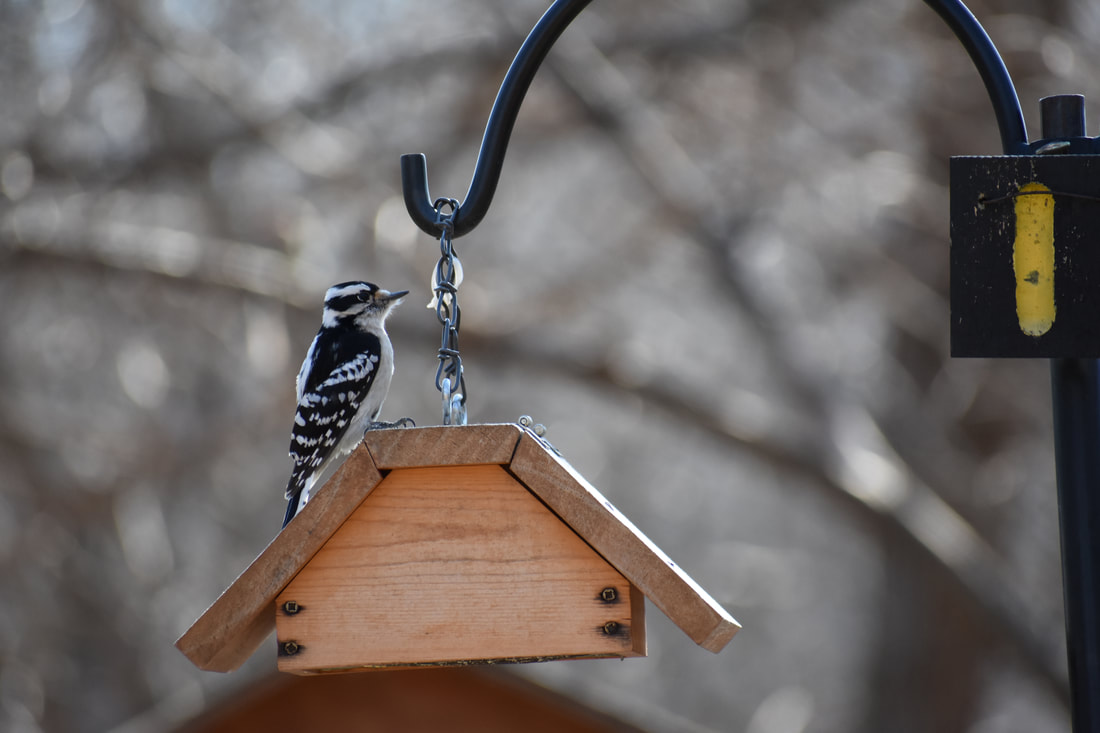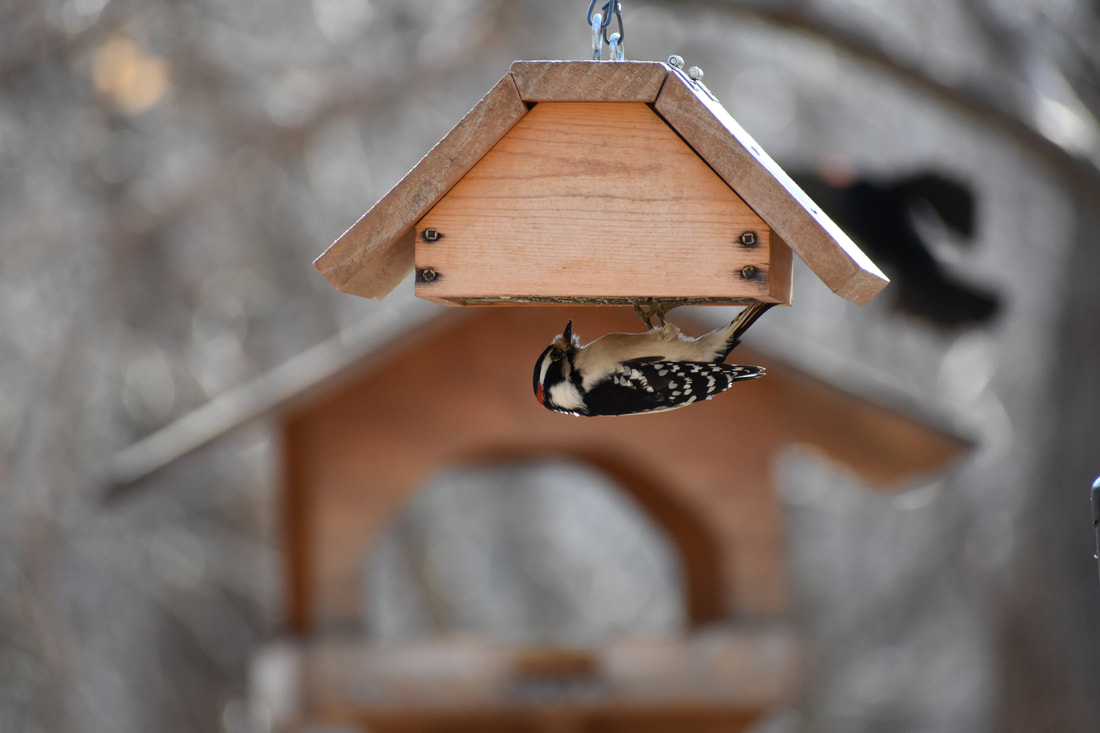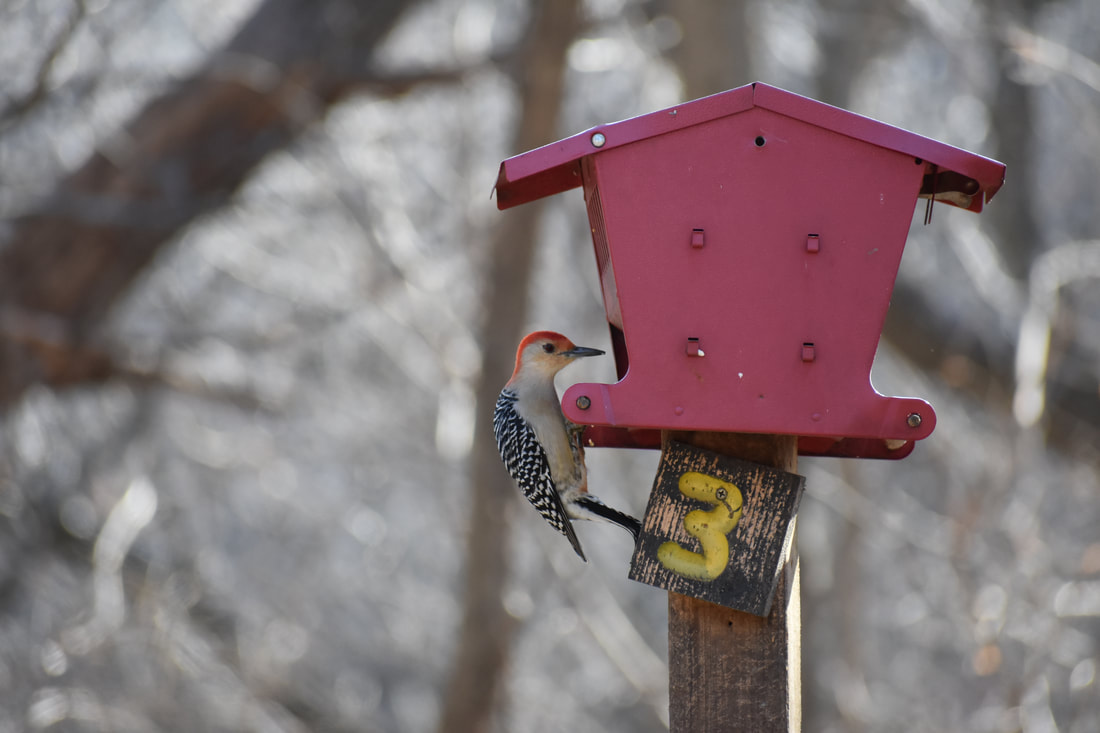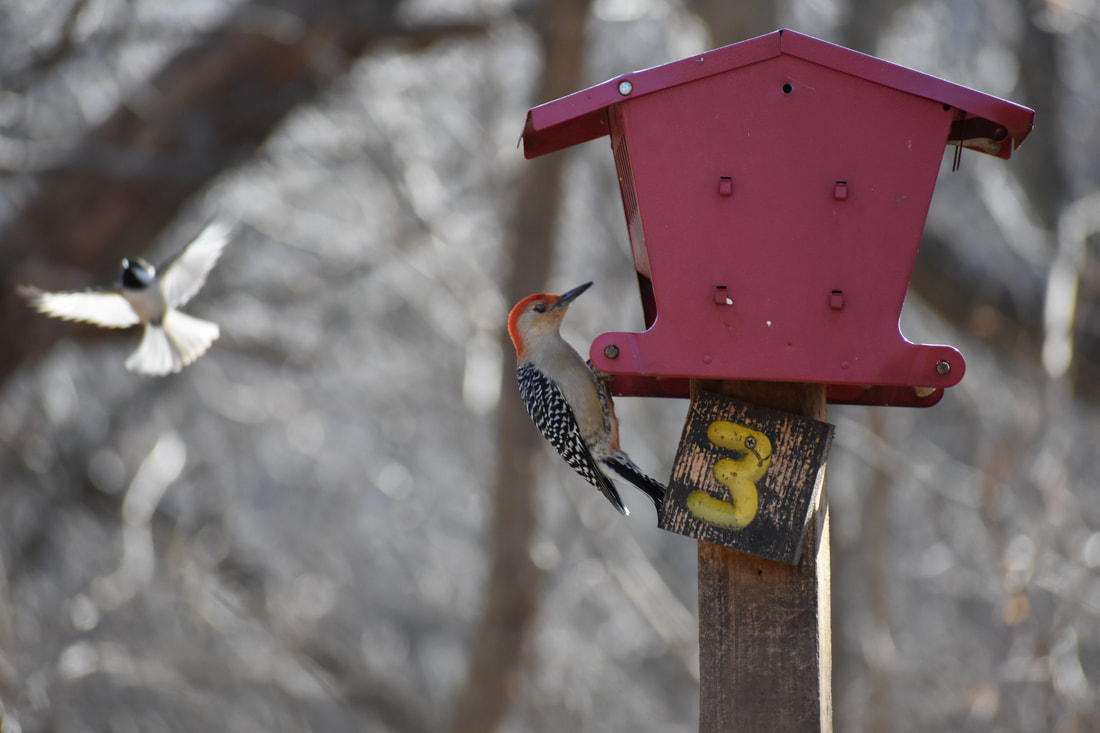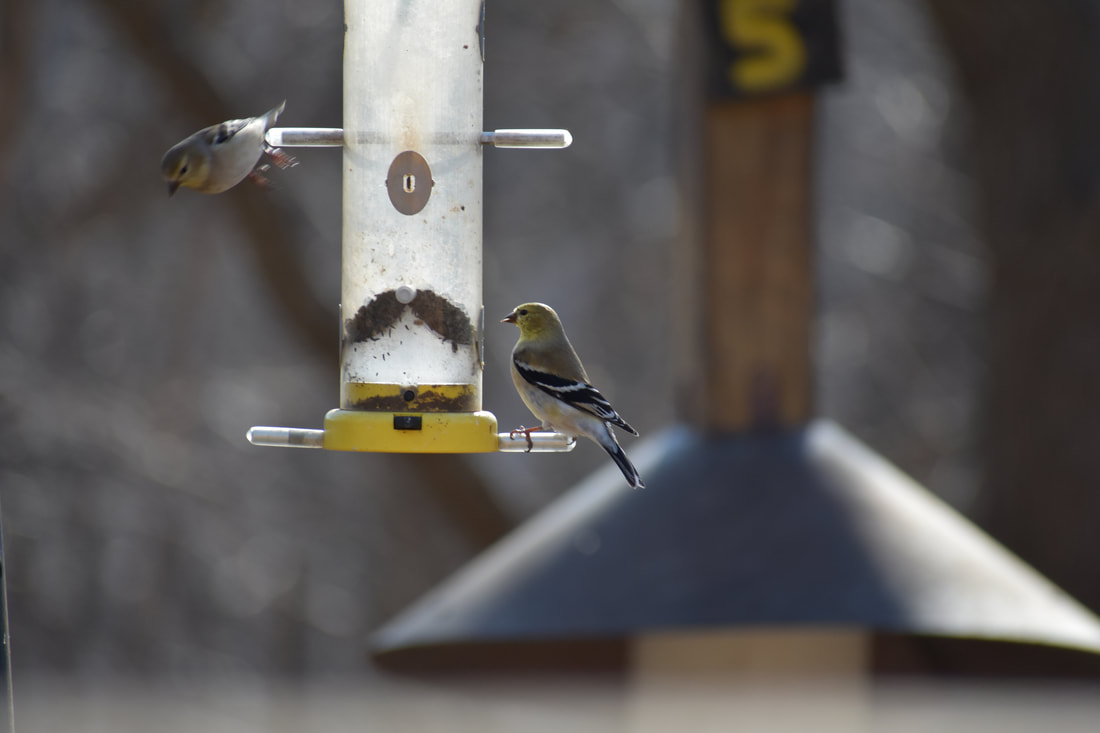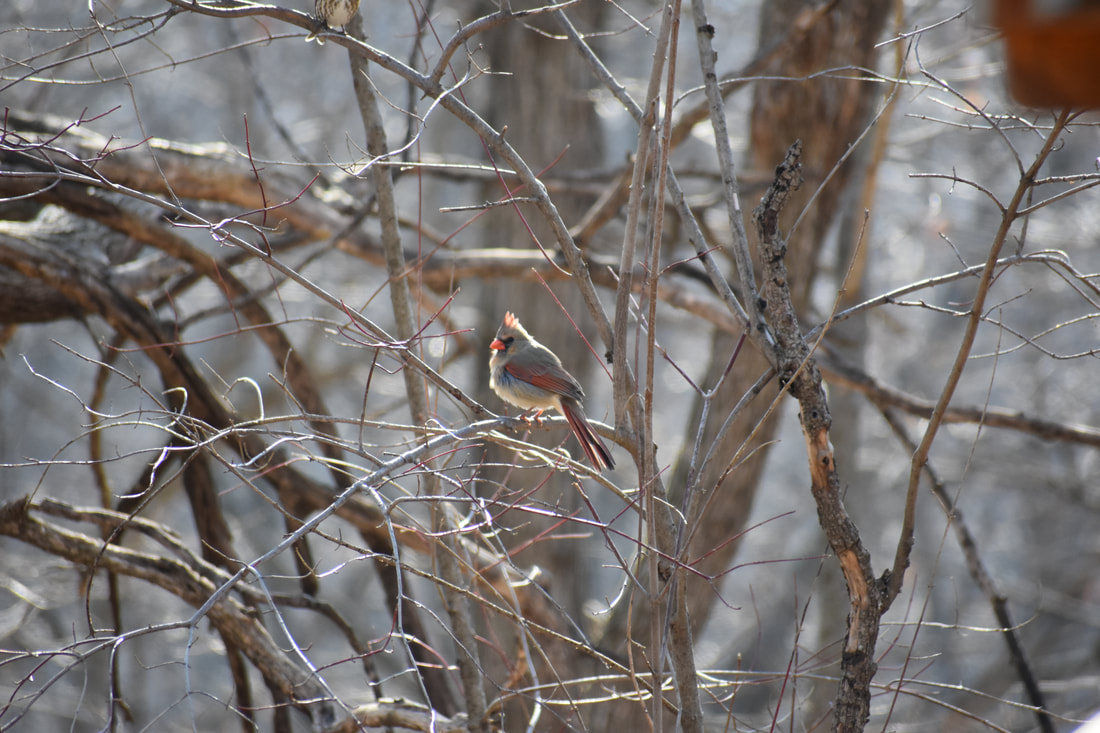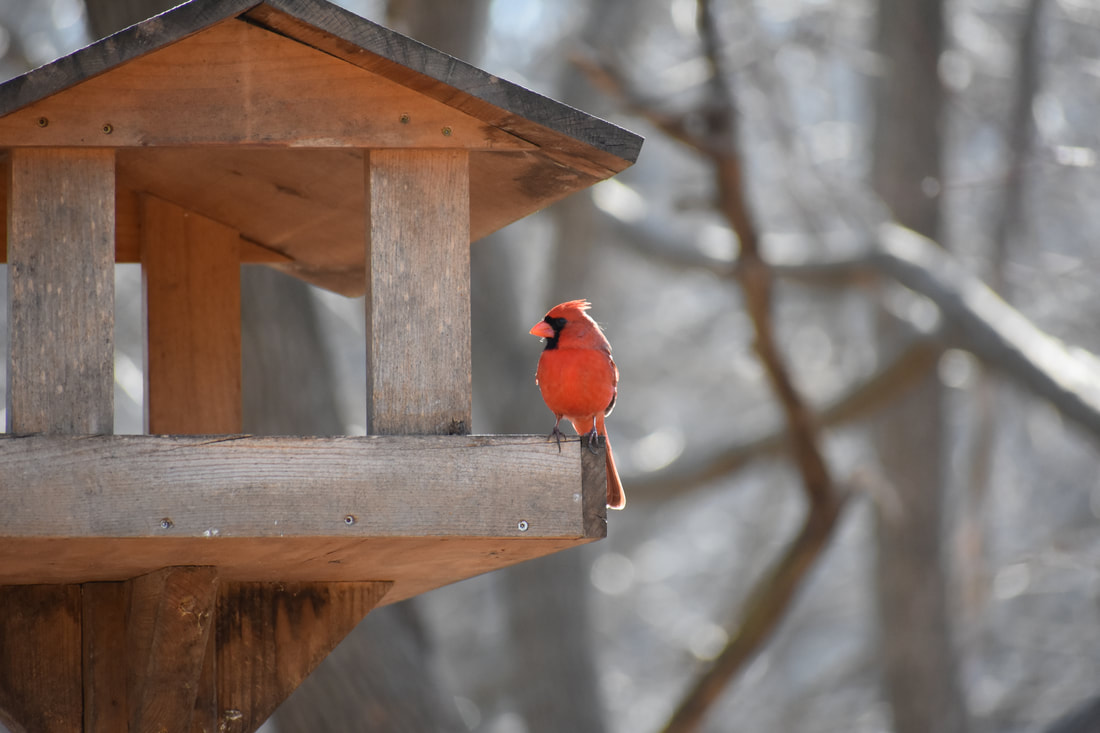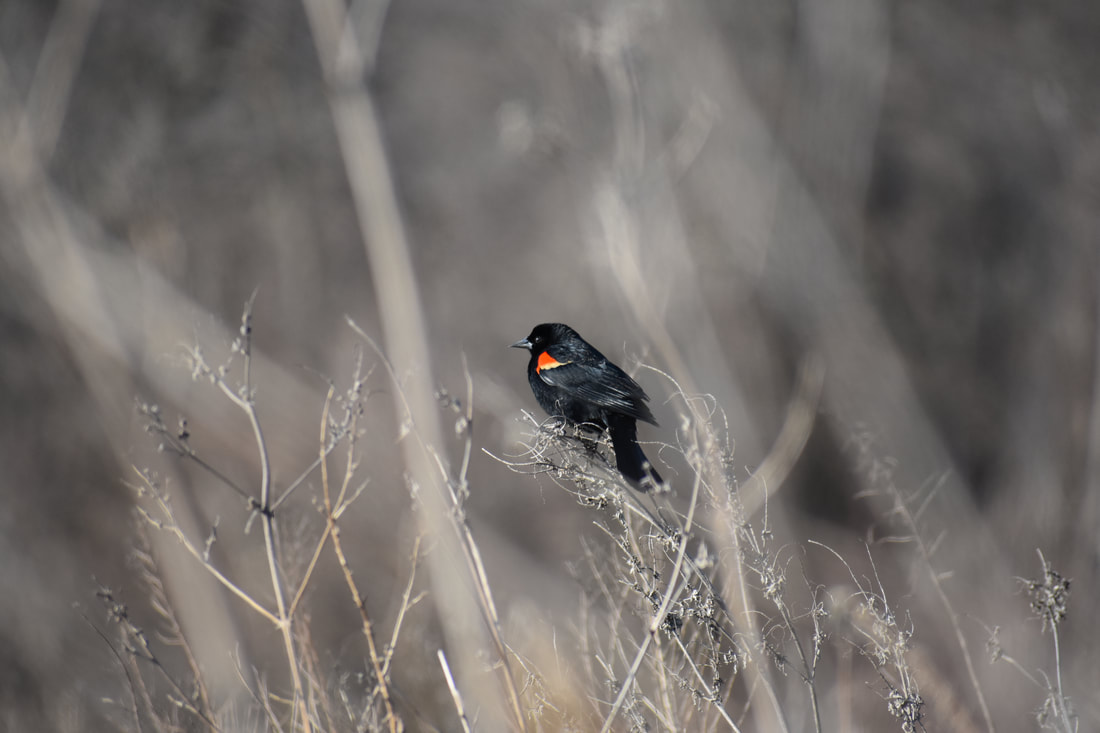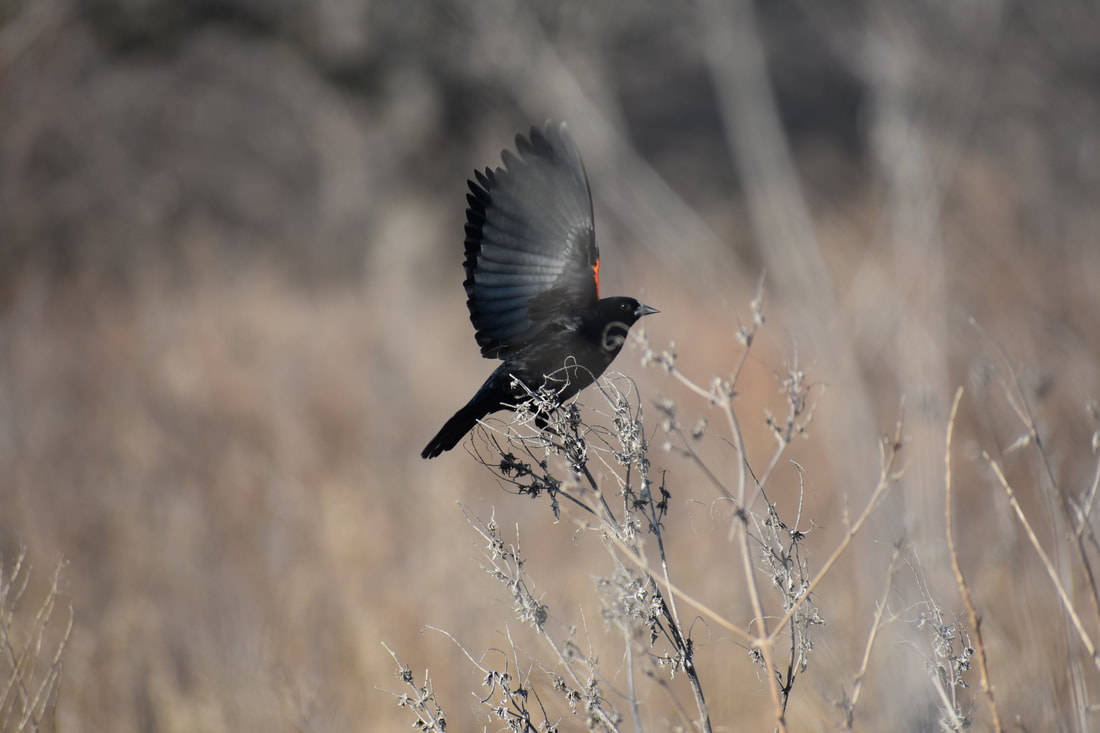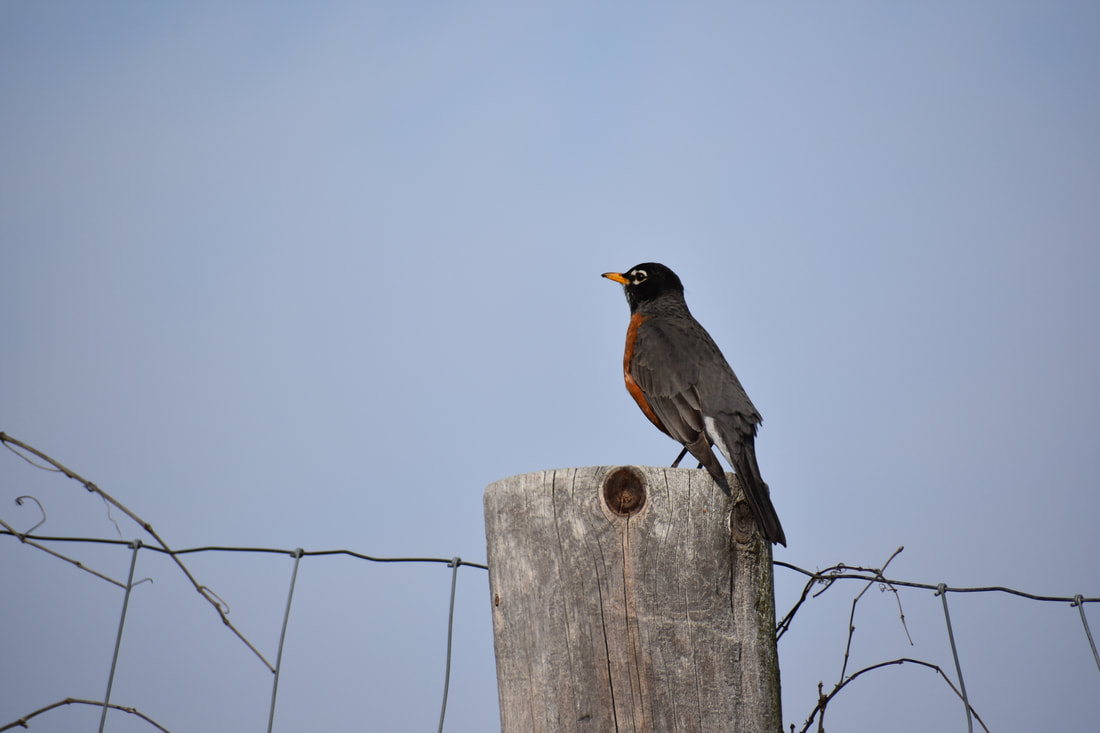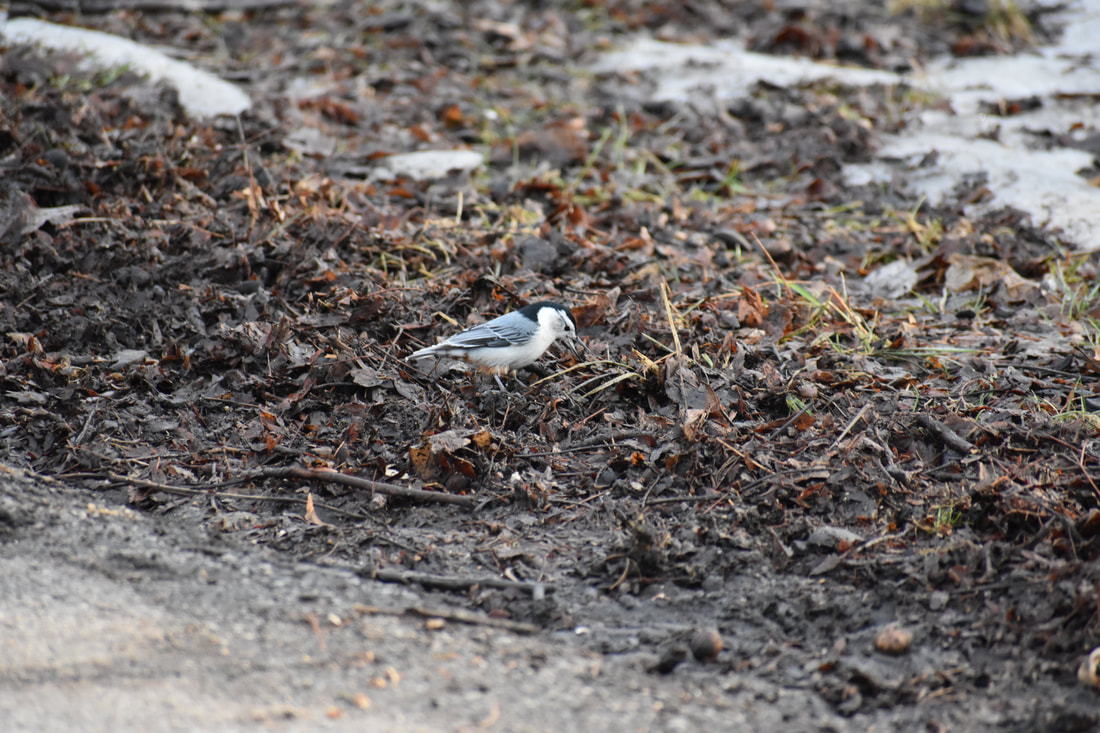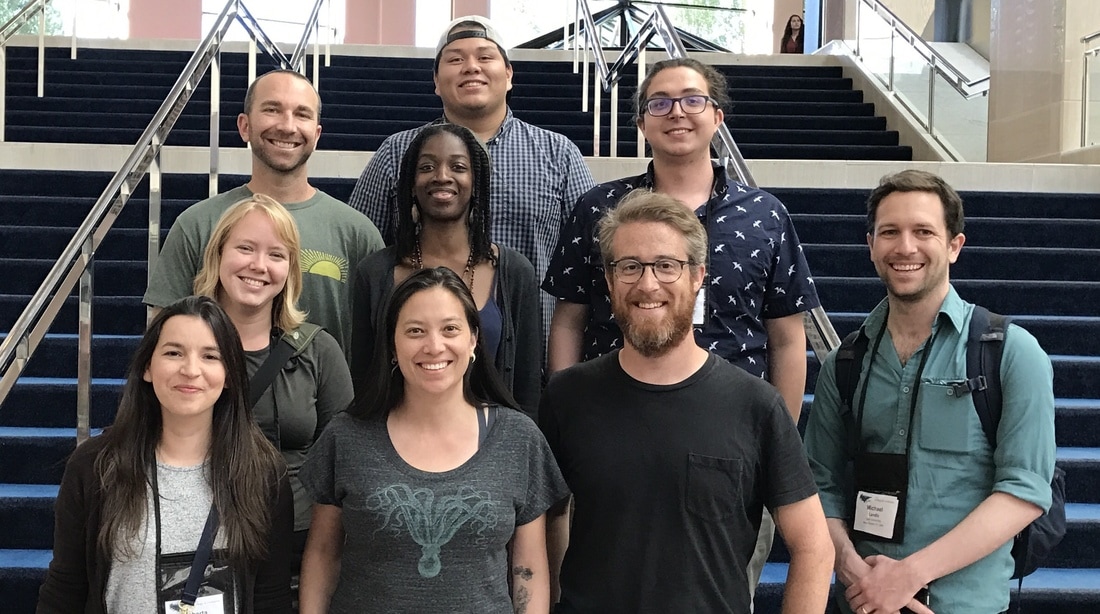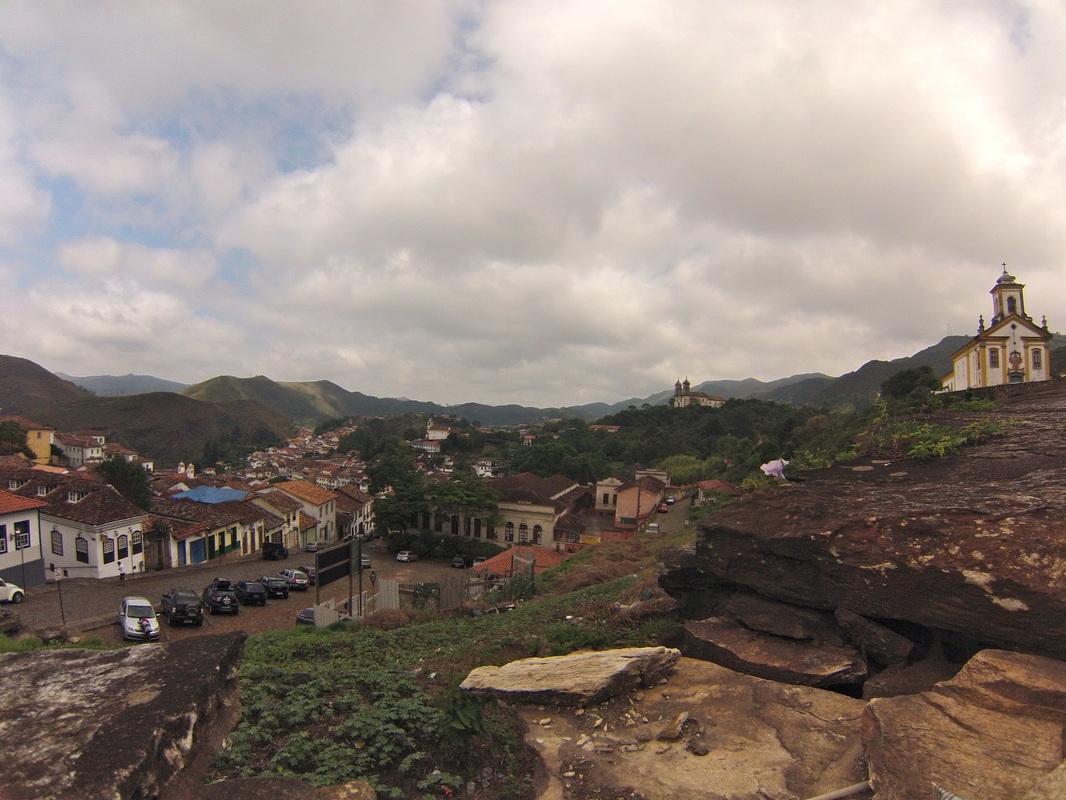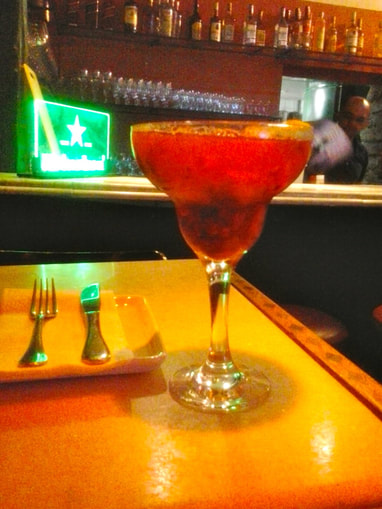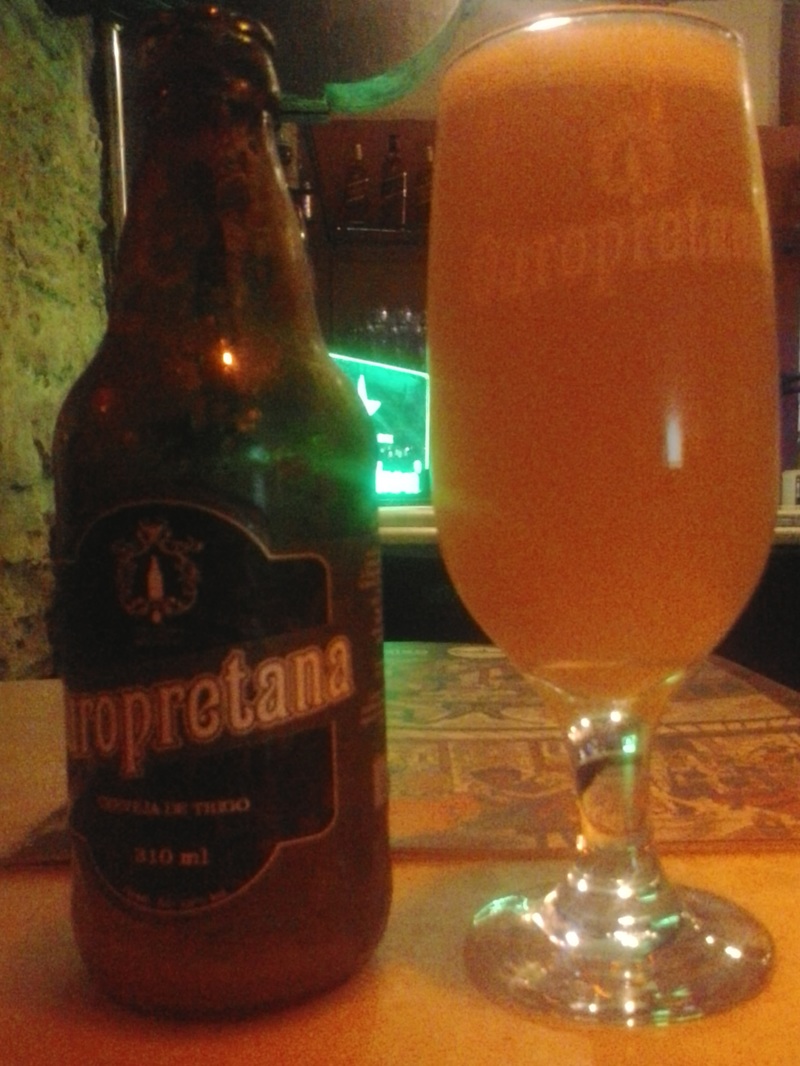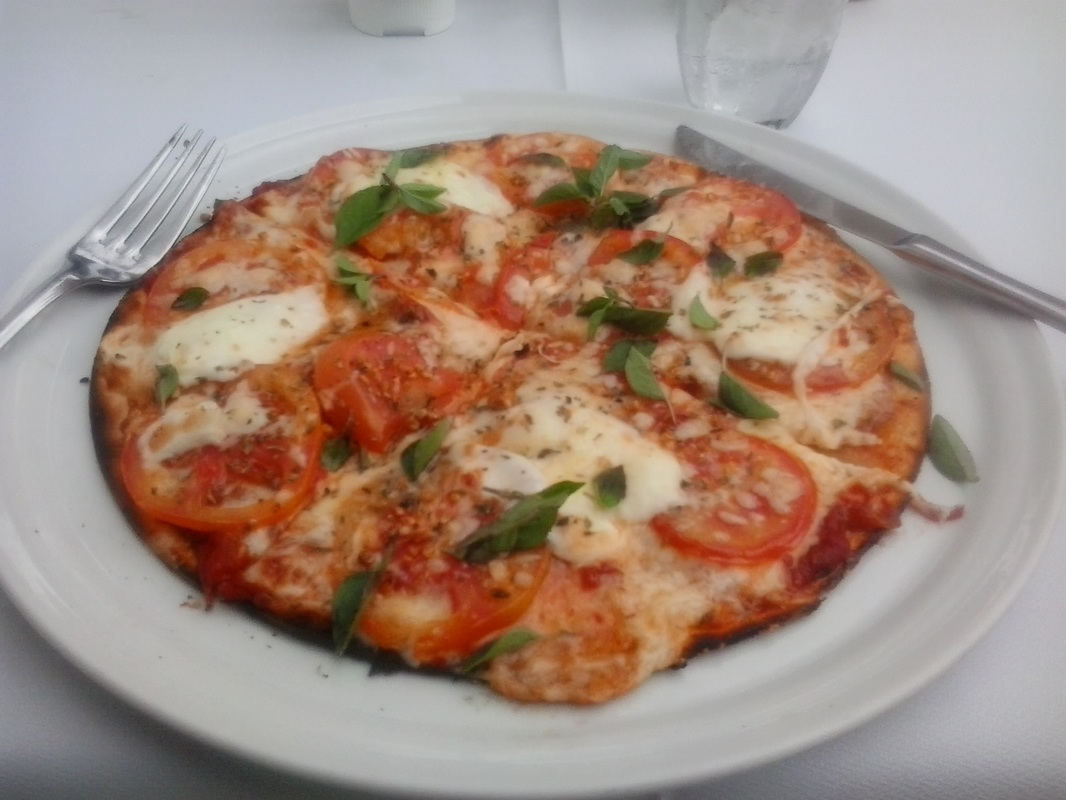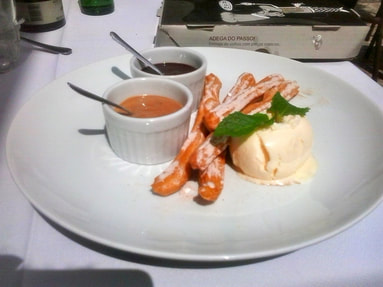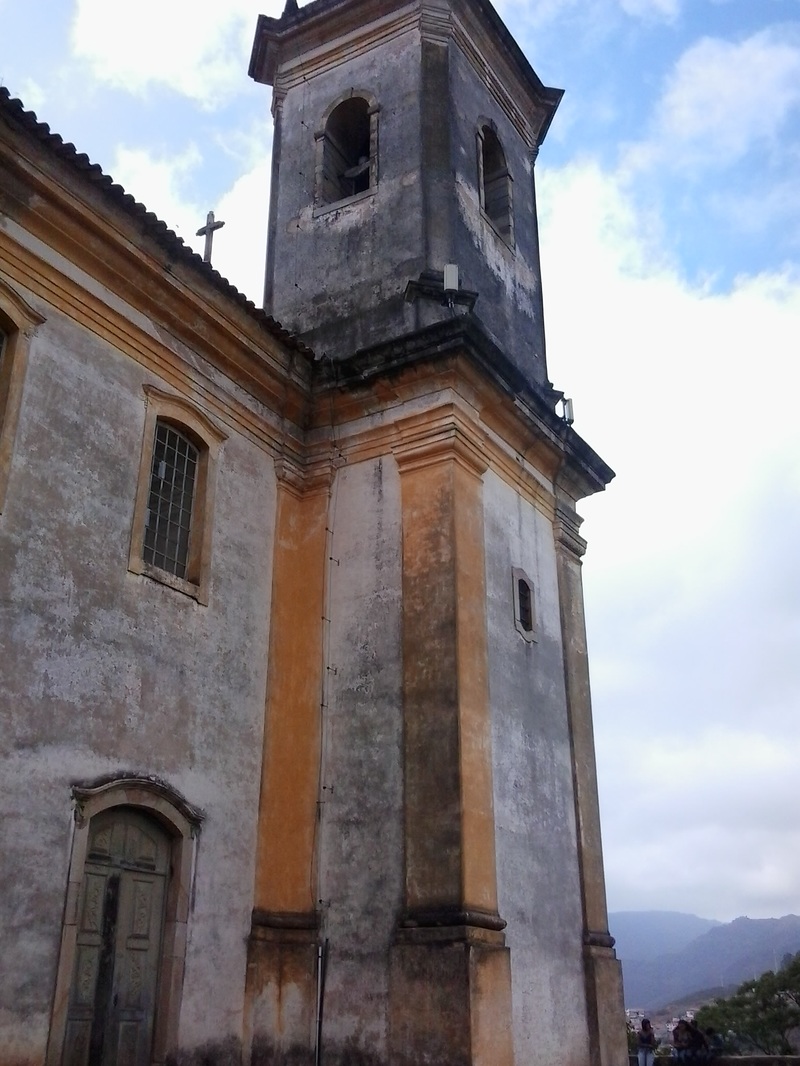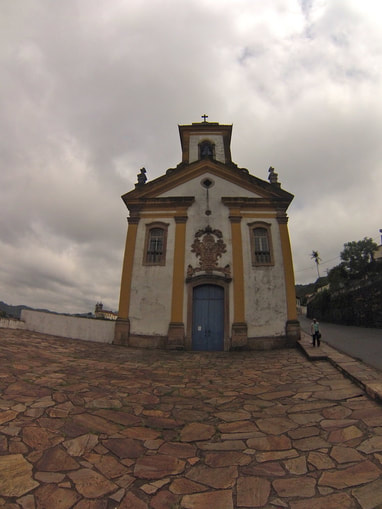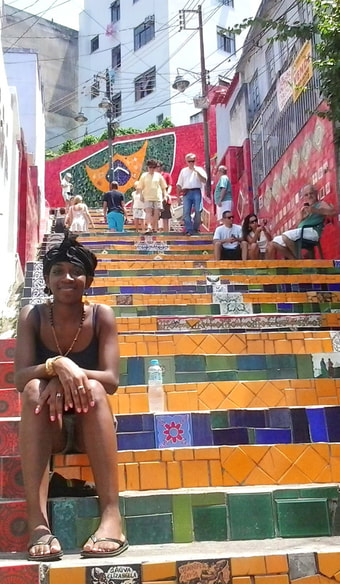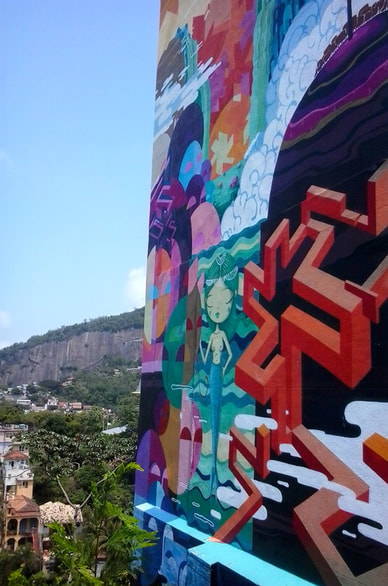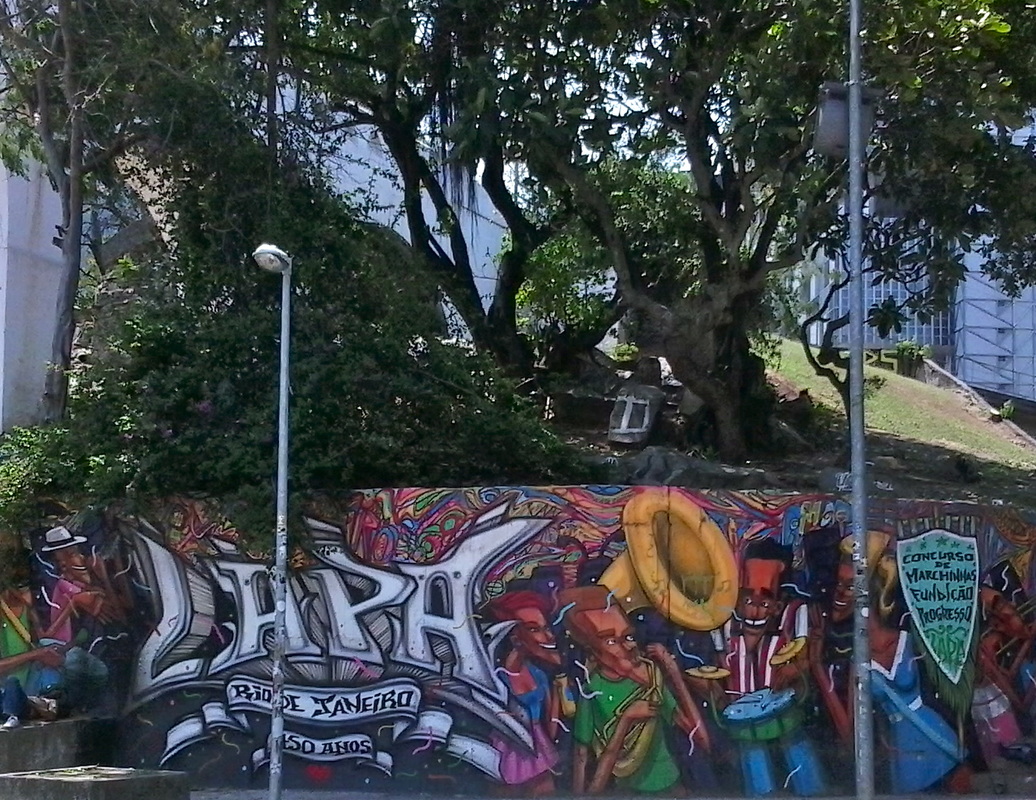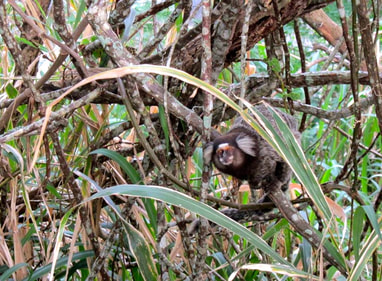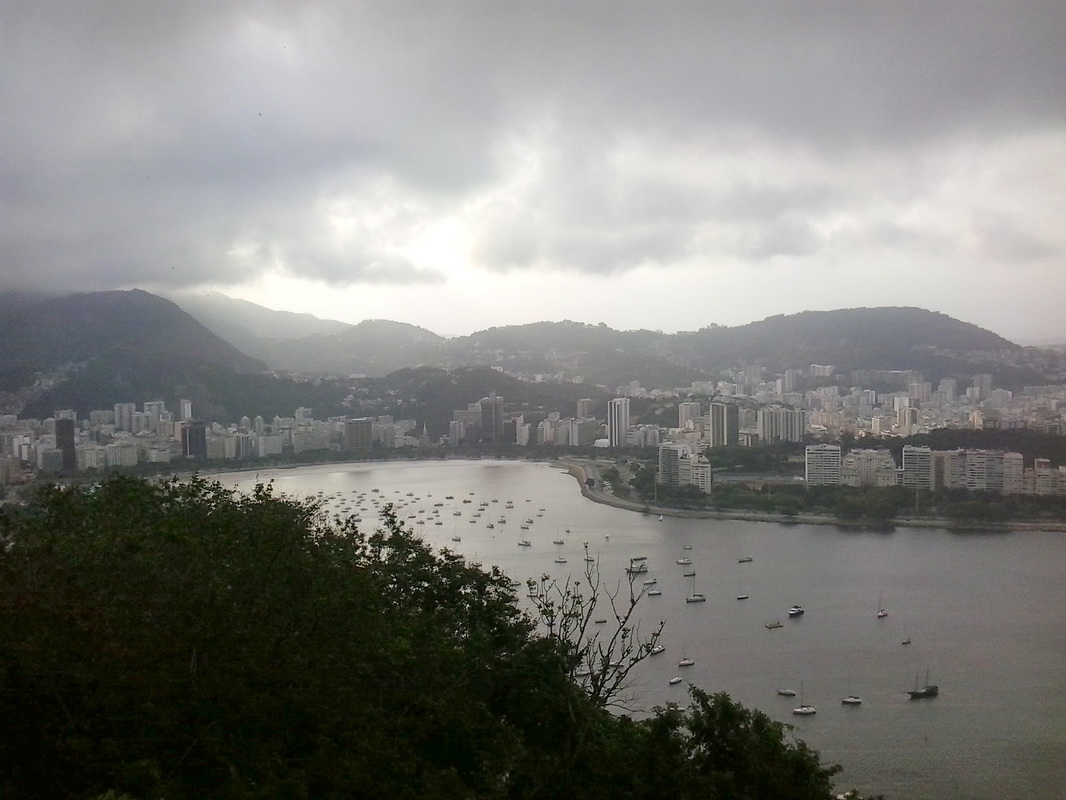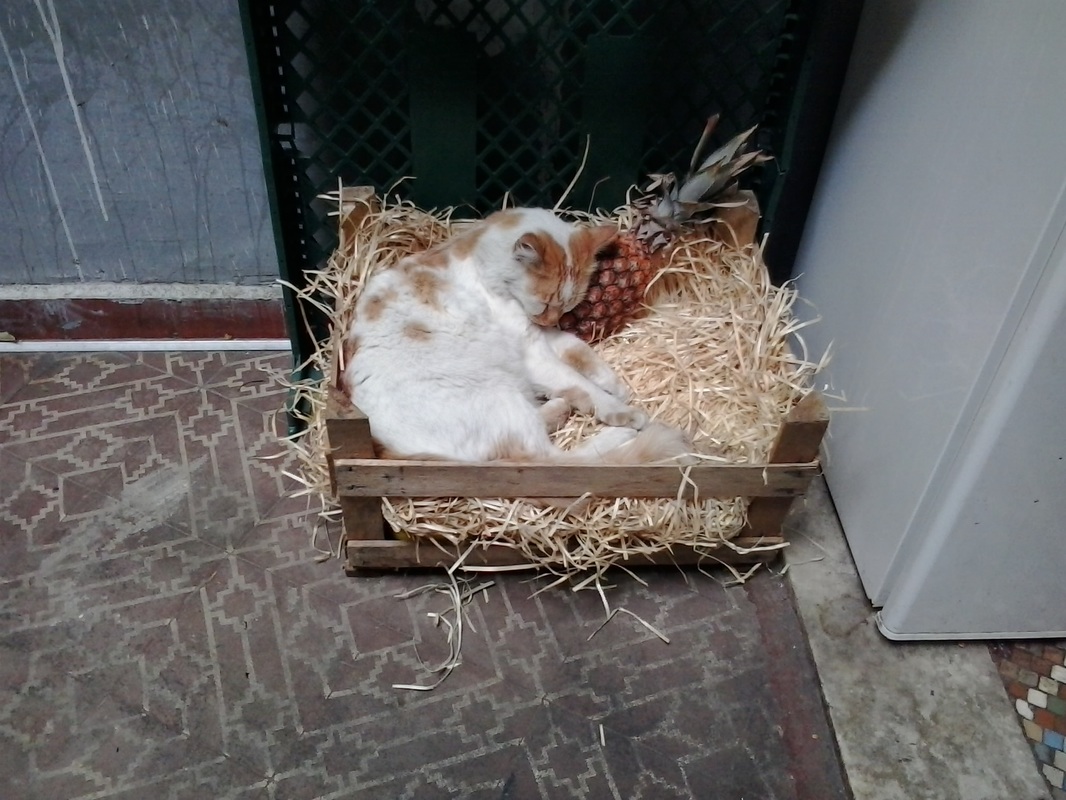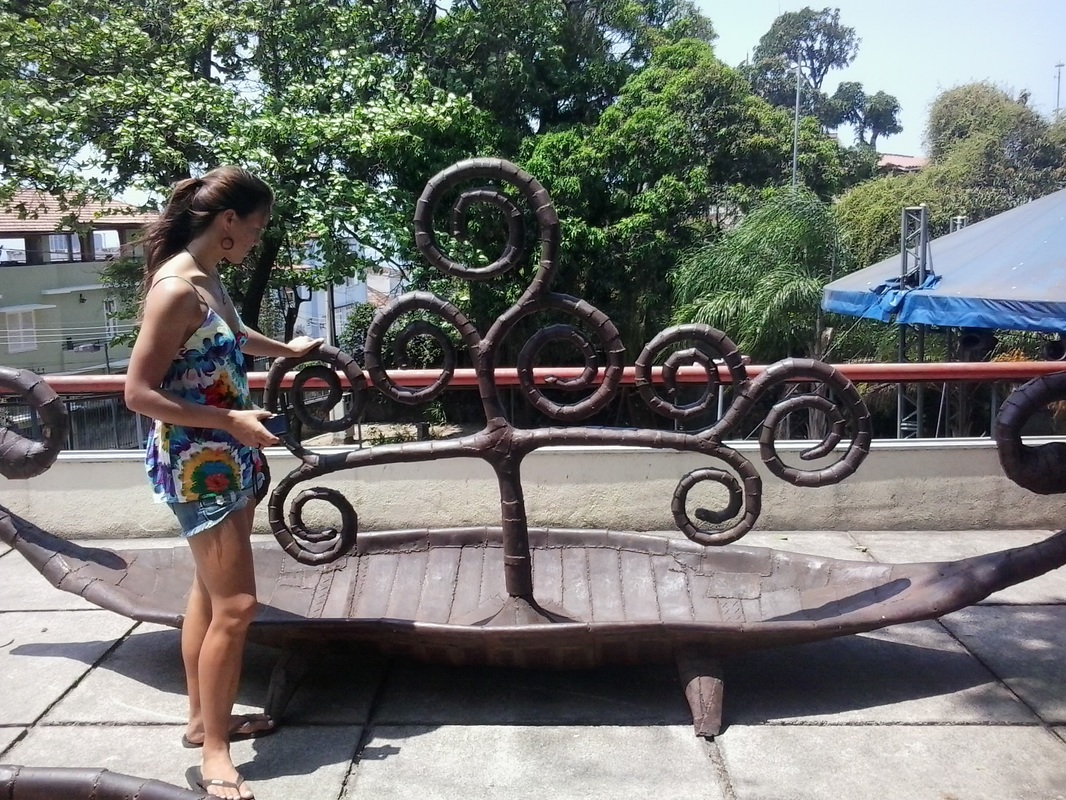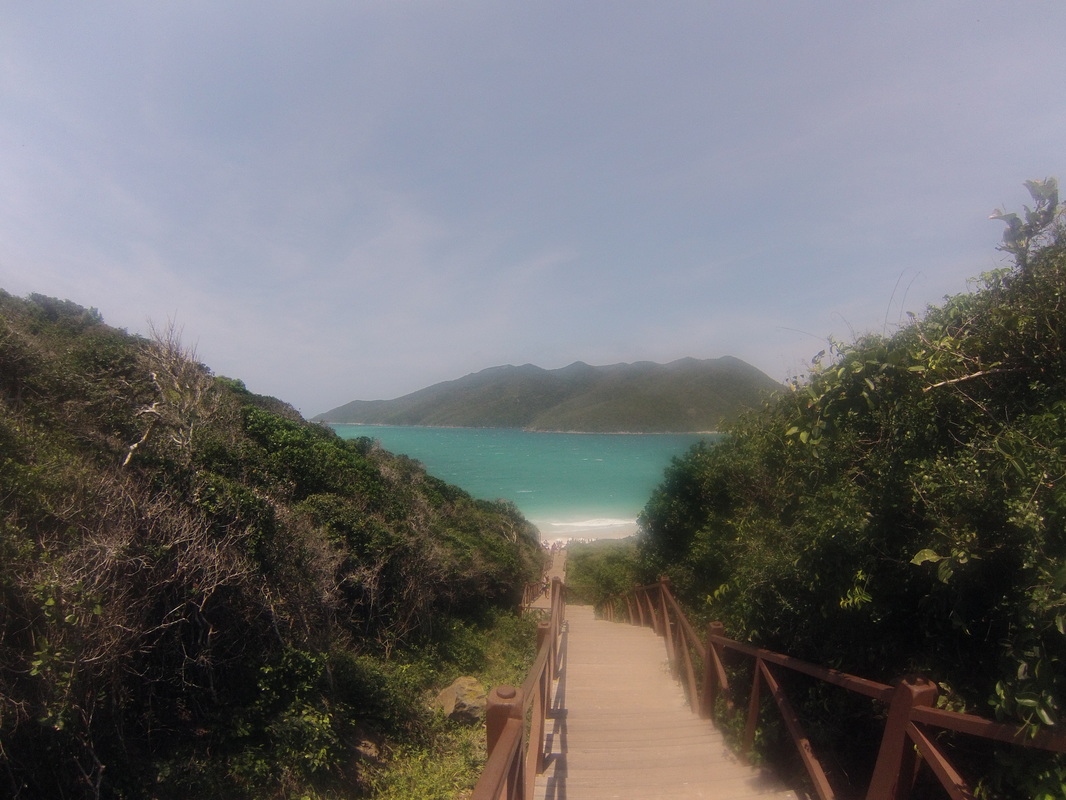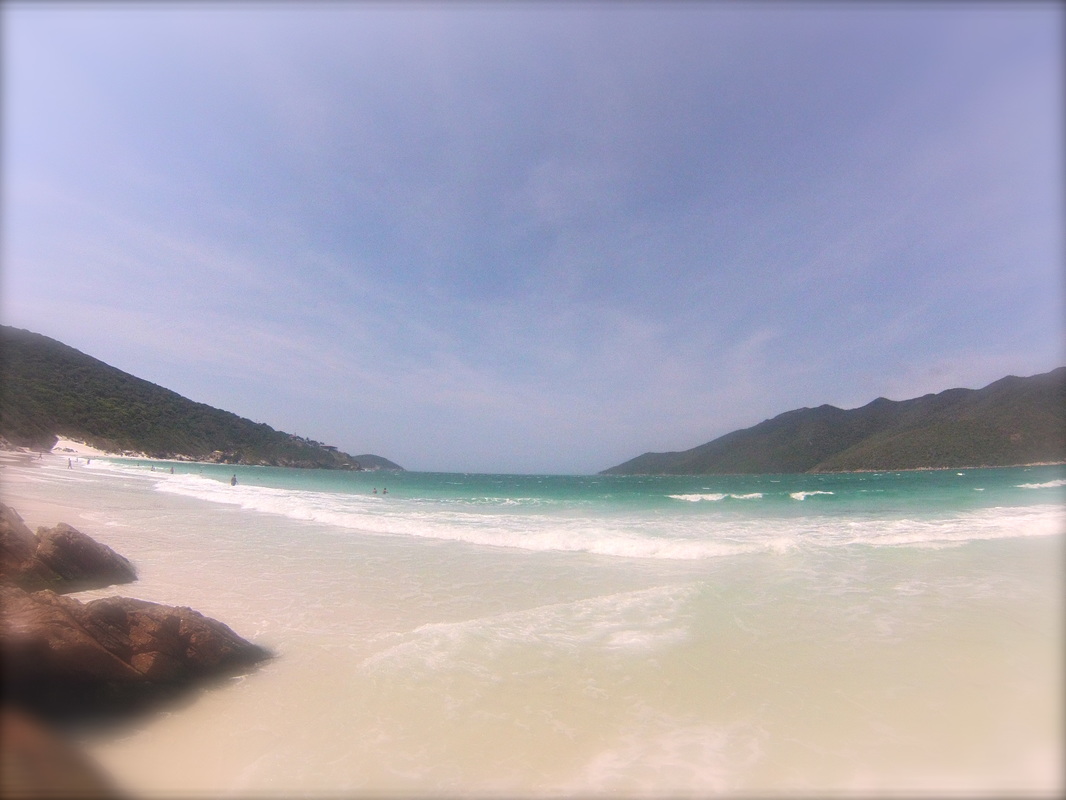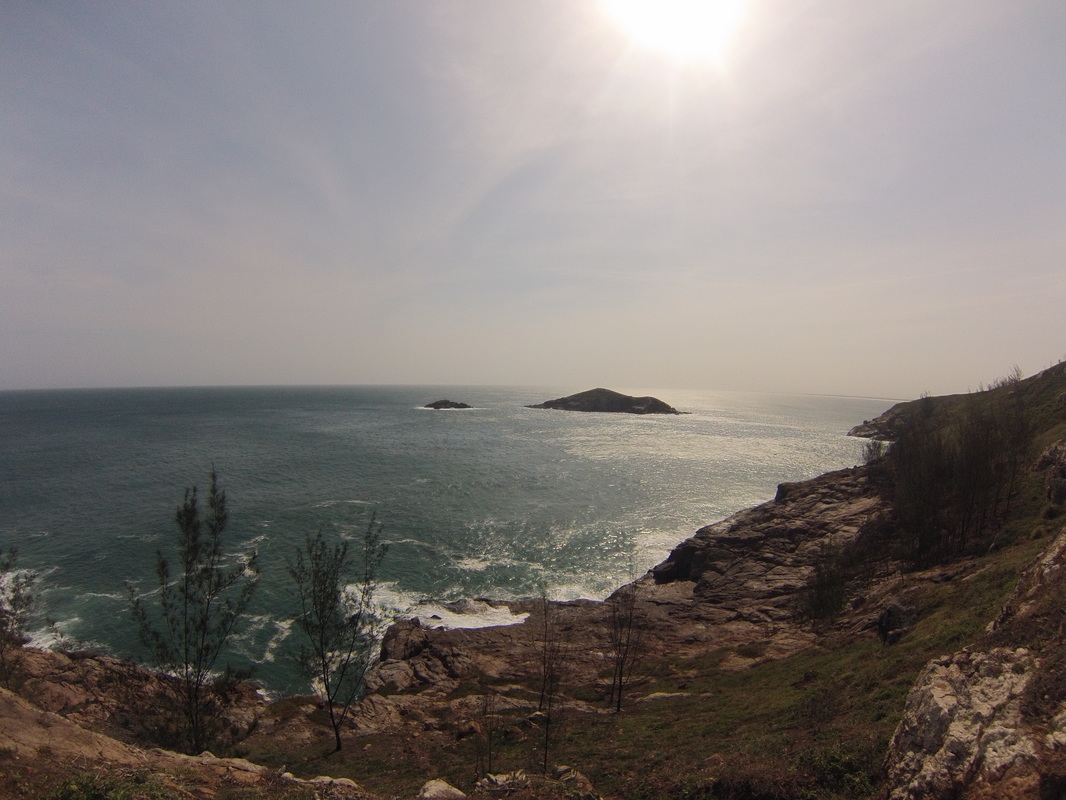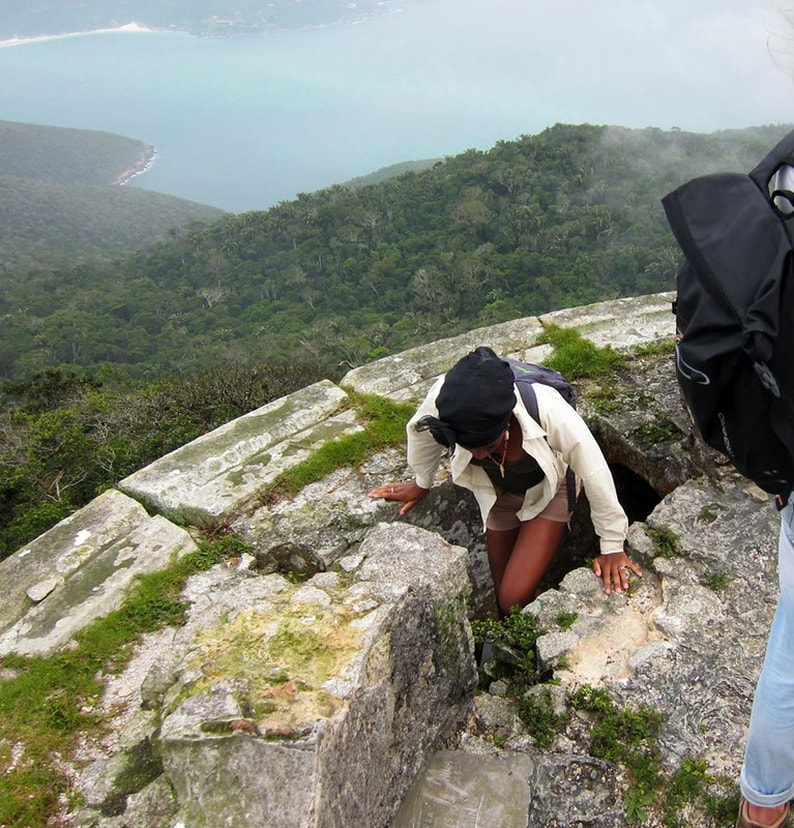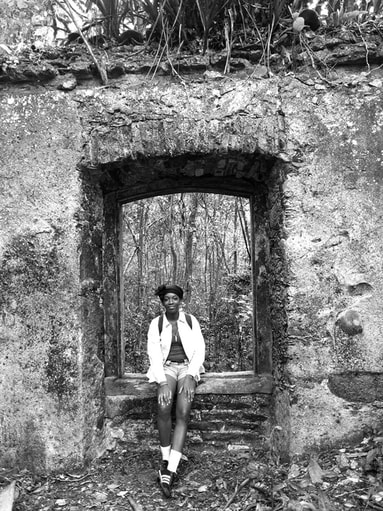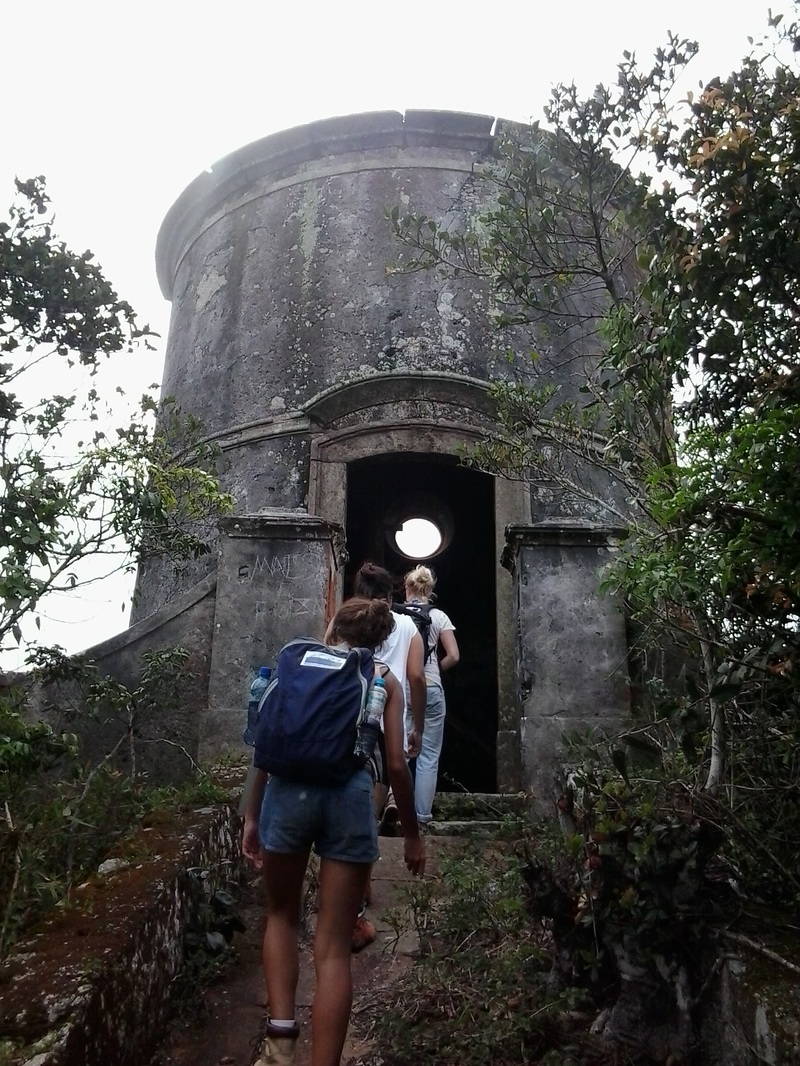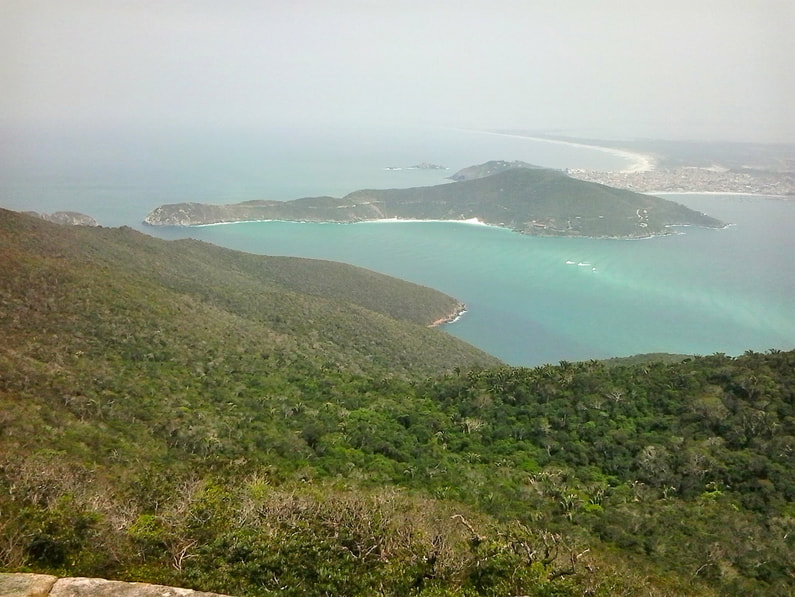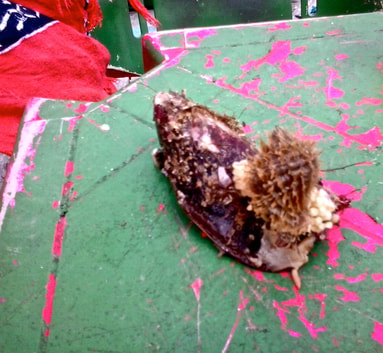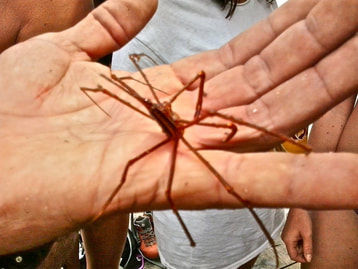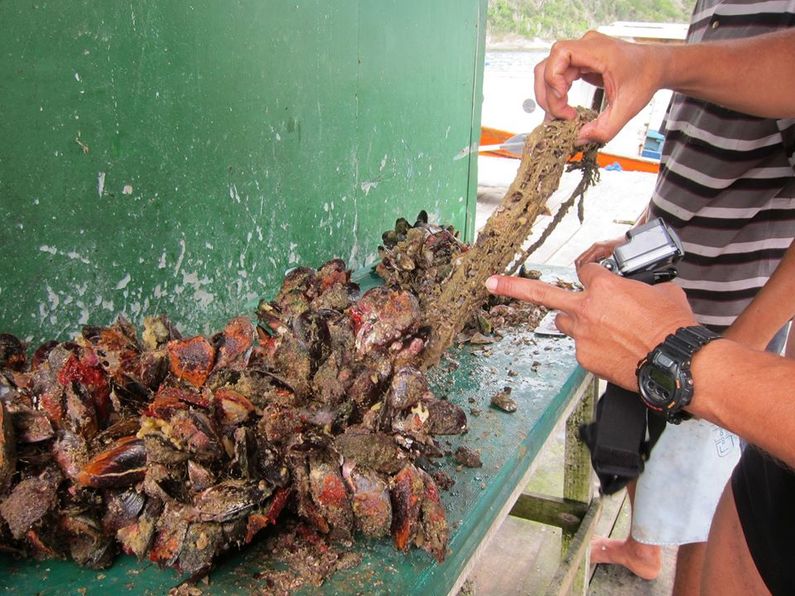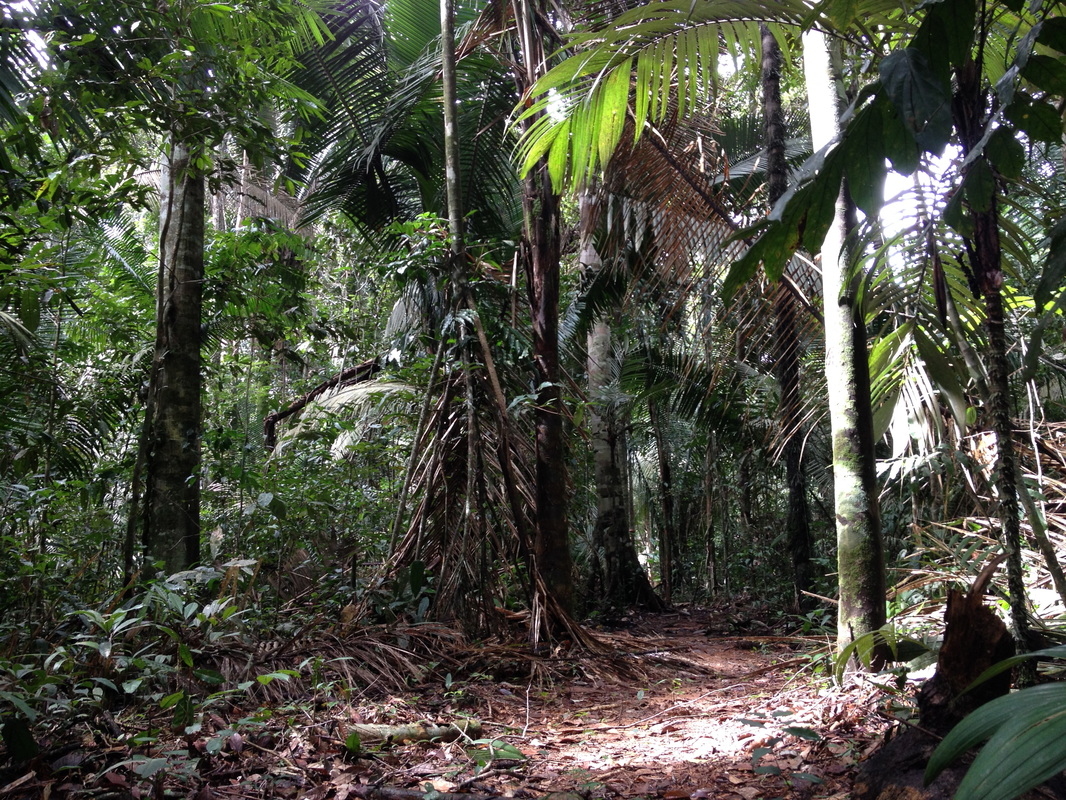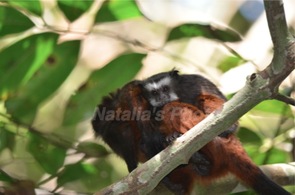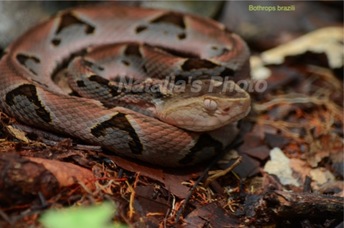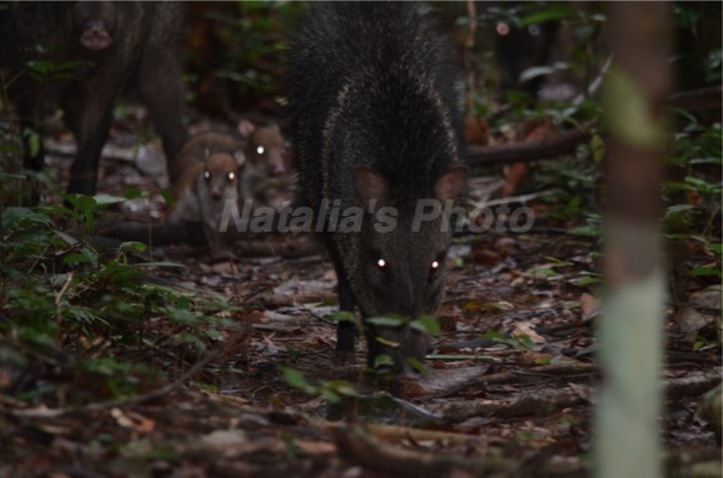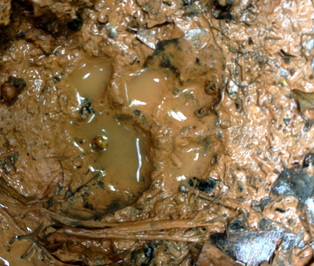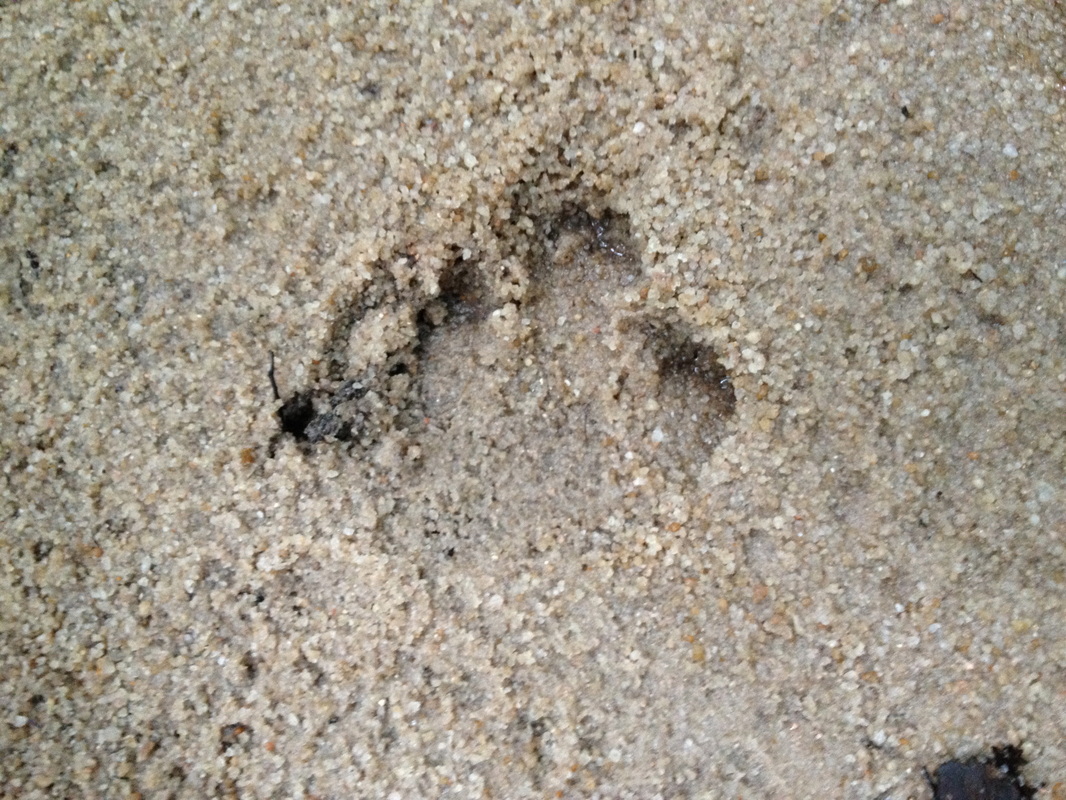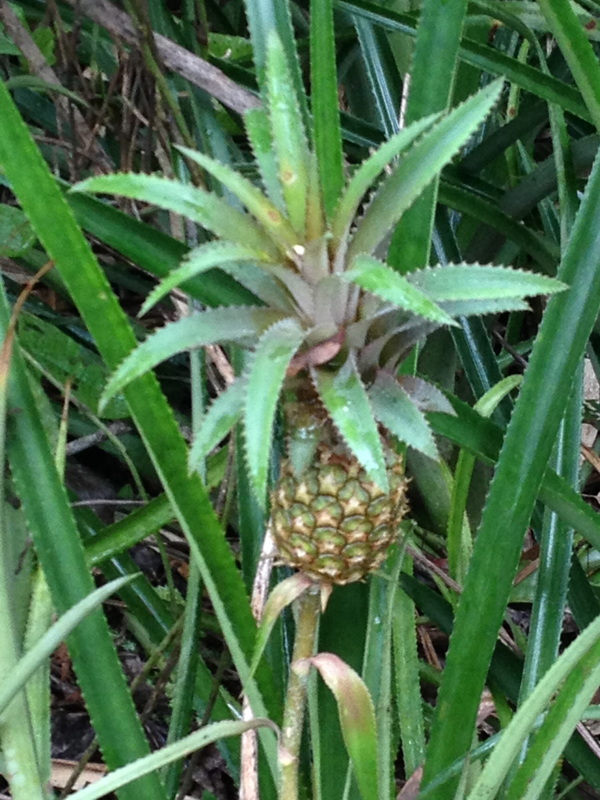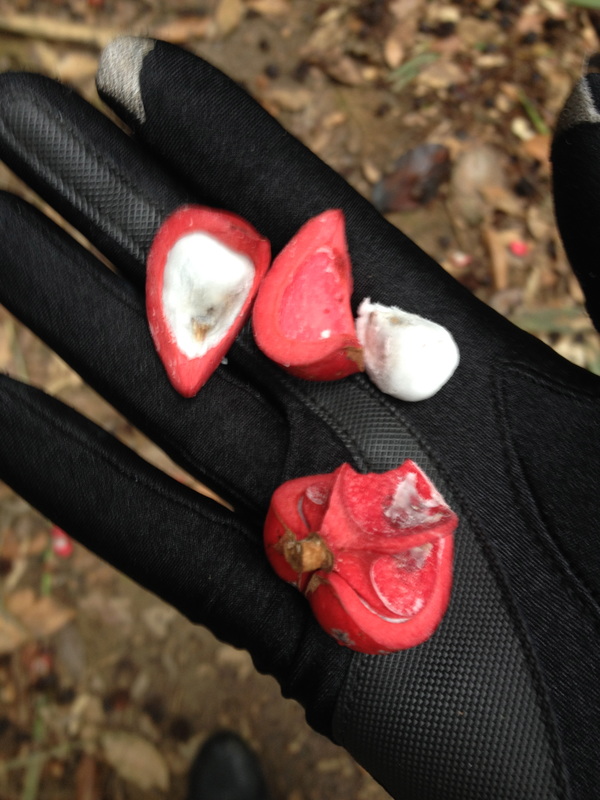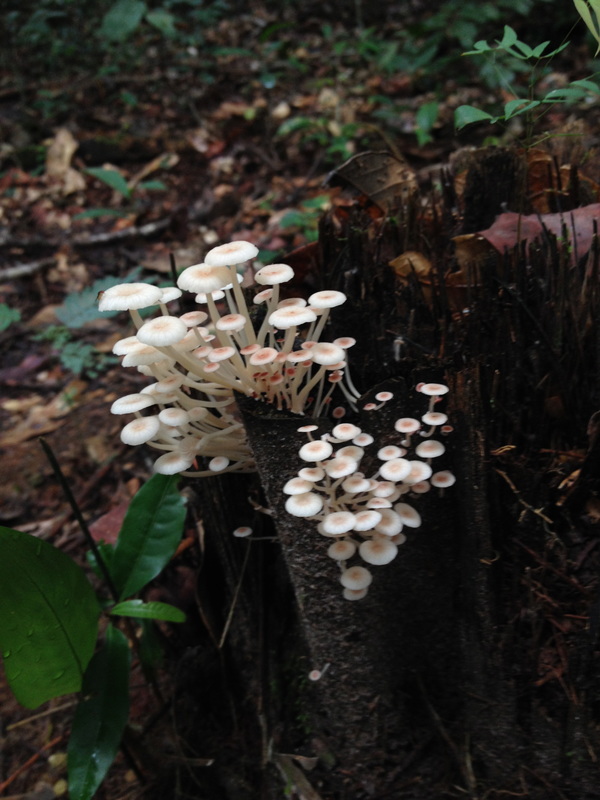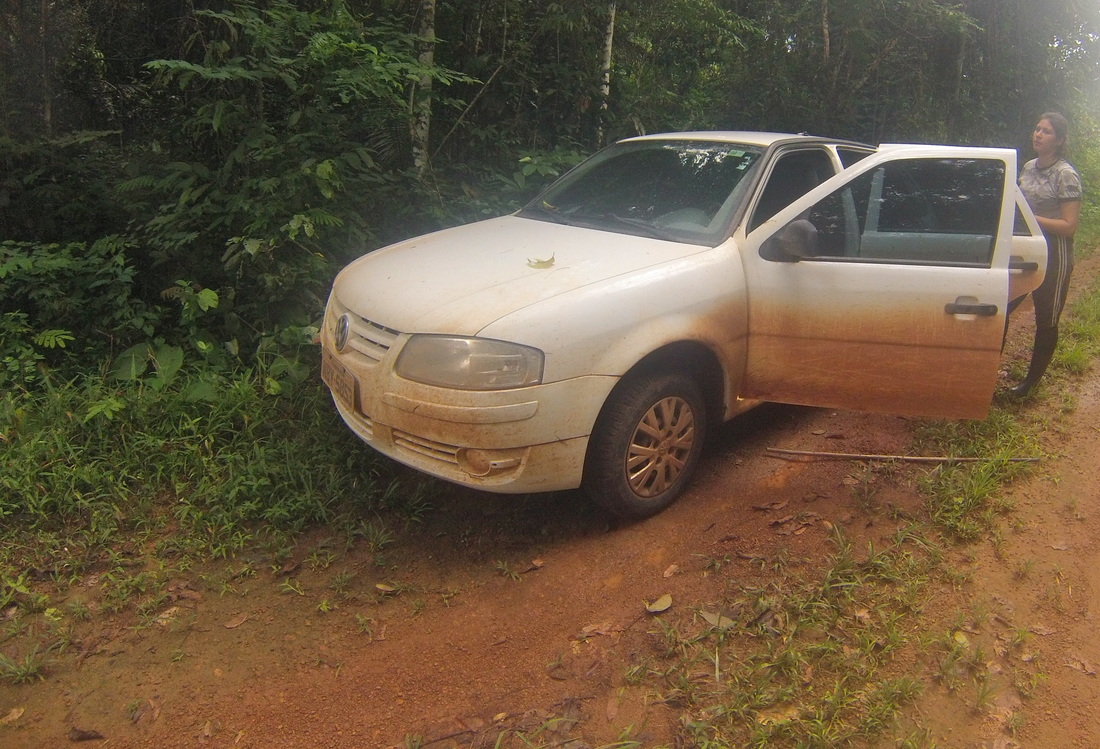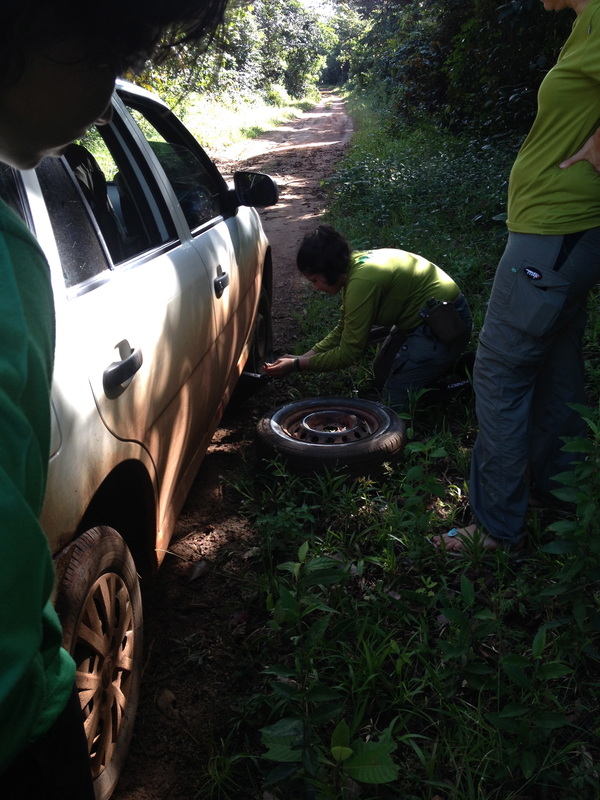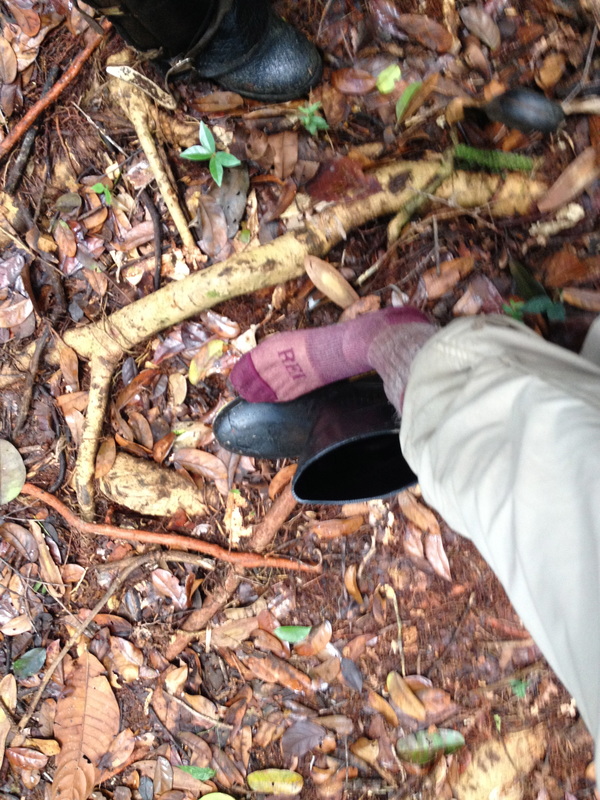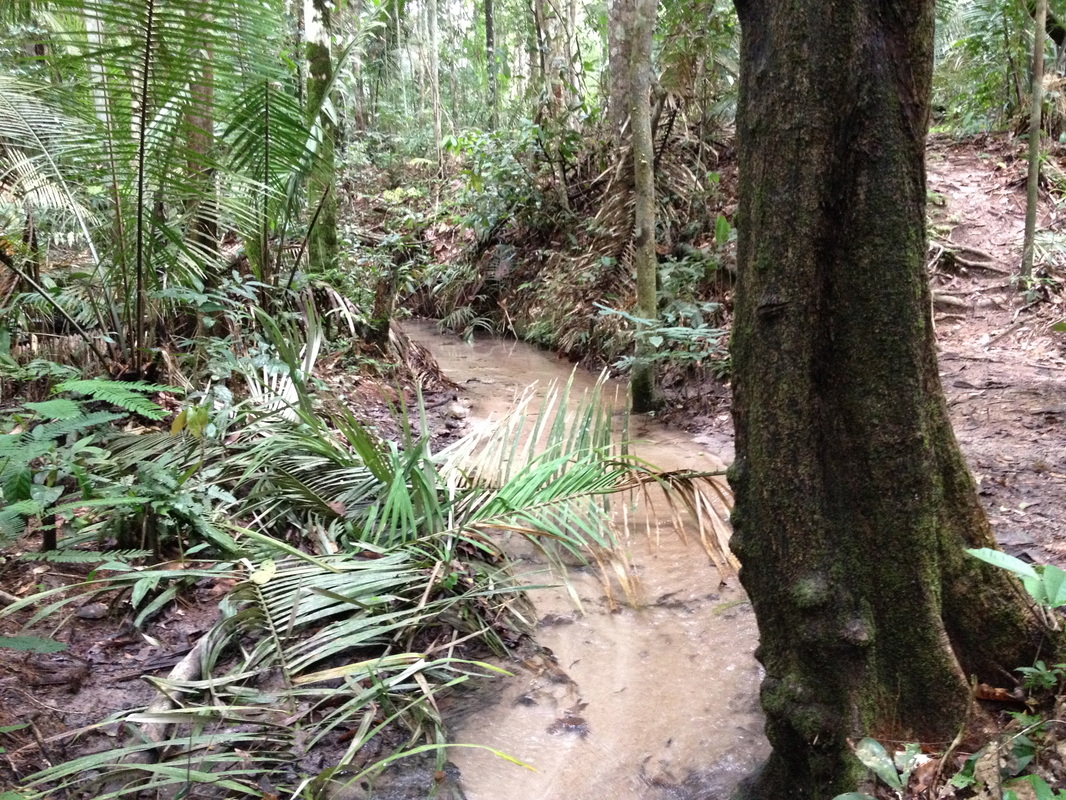|
I'll start out with a trailer featuring some of the best footage I was able to capture on this trip. Excuse the cheesy iMovie format! For more wildlife photos from this trip, check out the Photo Gallery. Back in August of 2018 I had the trip of a lifetime. I went on a week-long safari in Kenya. I don’t even know how to express the beauty I beheld. I took advantage of the fact that I would be in Nairobi for a primate conference and decided to hang out for a week afterward with some cool primatologists! I always thought that if I ever made it to Africa, it would be as a scientist. And, I was basically right. While I wasn’t doing research on the two occasions I went to the continent, I was participating in professional development as a workshop participant (Cameroon) or presenting research (Kenya).
By that point, I had given my talk at the conference and done all the networking I was capable of. I met some cool new people, and reconnected with some colleagues, best of all my advisor Jessica from graduate school. I’m going to gloss over the conference as it wasn’t nearly as awesome as everything else I got to do. But the closing banquet was pretty awesome, with all kinds of local food, entertainment and dancing. I won’t lie, I was really excited for work to be over and to start looking for animals. I had already seen Blue monkeys on the grounds of the UN but no pictures are allowed. I was itching to try my new camera lens which I had bought specifically for this occasion.
Obviously, my trip to Kenya was an incredible, life-changing dream come true. I probably have not articulated the pure happiness that I felt in every moment I was privileged to spend there. Even those first days in dirty travel clothes. I was ecstatic even when I was frustrated, tired, hungry, lost. I was welcomed so fully, I rarely felt like just a tourist. On more than one occasion a local said “welcome home” after learning I was actually American. And when I left, it felt like leaving home. Kenya, I'm homesick.
0 Comments
This Saturday, I’m going to Kenya. It is quite literally a dream come true. I am so excited to see all of the cultural and natural beauty that I experienced through magazines and TV up close and personal. Going to a primate conference in Nairobi is not how I ever imagined getting there, but it works for me! In anticipation of this trip, I started thinking about my first trip to Africa, to Cameroon back in 2014. What an incredible experience. I was there for a professional development workshop (see my research page) but got so much more out of it. The airport in Yaoundé was a little different than any other. I had to show my luggage receipt in order to get my checked bag (good thing I didn’t lose it!). There were also several money changers at the door, ready to exchange Central African Francs (cfa) for foreign currency (perhaps at a better rate than formal financial institutions). On the way home to the US, there were people administering polio vaccines at security – I’d never seen that at the airport before! But like all airports, it was filled with lots of people trying to get to their next destination. I was supposed to meet the workshop TAs, the driver and the rest of the students arriving that day. Luckily, one of the TAs was a colleague from UCLA (where I was attending grad school at the time). He recognized me, while everyone else was not quite expecting a black foreigner to be participating in the course (local students were participating but not arriving at the airport), and he teased me for already being mistaken for a Cameroonian. I didn’t really mind, and it set the tone for the rest of the trip. Everywhere I went from then on, I was taken for a local. It was interesting having people approach me and start conversing in French and being confused when my ability to communicate was limited to “ça va?”, “bon, ça va?”! On a few occasions, when I didn’t admit to my foreign posing quickly enough, some subsequently tried a few local dialects until a meekly whispered “English?” at them. But people were mostly great and were intrigued to learn I was American. They’d ask me questions about my background and comment on how I could certainly be Cameroonian, and speculated on which ethnic group my features might correspond to. I loved being so fully embraced by a culture to the point of being claimed. Only one person ever implied that it foolish for me not to know where in the motherland I came from, and I didn’t have the energy, patience or will to disrupt all the other good vibes I was getting to explain to him why such was the case. Outside of this, and despite the occasional extortion at checkpoints by local police while traveling between cities and rarely some (understandable) impatience on the part of vendors dealing with confused foreigners – the trip was extremely pleasant for me.
From Limbe, we passed through the coastal city of Douala (the financial capital and Cameroon’s largest city) on our way to Ebo Forest. We didn’t spend more than one night in this bustling city but it was clearly a business center and the streets were crowded with vendors selling everything from food to clothing to electronics. It was a good last opportunity to pick up any needed supplies before heading to the wilderness.
By far, my favorite part of the trip was the time spent in Ebo Forest. To get there, we drove from Douala to a remote village on the edge of the forest. From there, we trekked in 18km (that’s roughly 11 miles), with river crossings, to the camp site where researchers are stationed for field work. That is the farthest I’ve ever gone in one day with a crap load of gear. Luckily, the real heavy stuff was carried by hired porters, local villagers who are in the best shape I’ve ever seen humans in. They carried the heaviest stuff and still beat us there by a few hours. And this research site is the real deal. There is no fancy research station with electricity and running water. This was legit camping with tents, mosquito nets, a dugout latrine, bathing in a river and surviving in a perpetual state of dampness. I freaking loved it. I won’t lie, I did miss the indoor plumbing, but it was so worth going without it to see this incredible forest. True wilderness. A place that not many people get to see. We spent a wonderful 5 days there. AND we saw chimpanzees! I mean, up close! They were incredible and beautiful and terrifying. Our amazing guide found a huge group, with young juveniles. But they were not happy with our presence and let us know it. It probably didn’t help that we startled the first one we saw when one of our group slipped and fell. The noise got his attention, and he dropped like a flash from the tree he’d been napping in and ran off to the left where the rest of the group was chilling. The cacophony of their alarm calls and warnings was impressive and I admit that while totally stoked to see such an imposing animal, I was simultaneously terrified! So I hung back a bit as we followed them a ways until they crossed a valley we couldn’t navigate. It was AMAZING. It happened so fast, I don’t think anyone got photos… On one of the day hikes, I hurt my knee after slipping on a wet rock. I had to sit out the last day of hikes as a result trapped in a graciously lent knee brace from another participant. I was bummed, but I spent the day taking in the beauty around the base camp, and for only that reason do I have any photos in Ebo at all. I was so absorbed, I had forgotten to take any during the hikes. The next day, we had to trek the 11 miles back out to the village. And that was quite painful. And everyone was so supportive in helping me through it, including one of the porters who very gently wrapped my knee, which helped tremendously. And I healed, so it was certainly worth the pain. Highilight Reel - A few short clips from Ebo Forest with super dramatic music
Though a mostly wonderful experience, I felt quite a bit of tourist’s guilt while in Cameroon. I could feel my privilege as I saw the poverty present in many of the places we visited. While I could appreciate the beauty in the country, I wasn’t blind to its struggles. Of course, I’ve seen poverty before, here in the US, in Mexico, in Brazil. But in Cameroon, it was unlike anything I had seen before. Maybe the poor are better hidden from tourists in the other places, their more advanced infrastructure providing a mask. I don’t know. But it always makes me think about how our privileges color our perceptions of the world and what can be done. For example:
I don’t want to end the blog on a sad note, though I felt it was necessary to share that. I loved the workshop and the field trips. I loved meeting all the people involved. I was so happy to finally have made it to the continent of Africa. Cameroon, though imperfect like everywhere else, is a beautiful country. From the beaches to the forests, in its languages, in its music and dance, in its clothing, in its food and for me most of all in its wildlife.
Yesterday, in anticipation of an upcoming return trip to Los Angeles for my hooding ceremony, I reflected on the nearly 7 years that I lived there while working on my PhD. I remembered my first trip abroad after moving there, to the International Primatological Conference in Cancun, Mexico in 2012. My trip to Mexico came soon after a major change in my life. I moved across the country, from western New York to Los Angeles, in September of 2011 to start a PhD at UCLA. I knew absolutely no one there. I barely knew my advisors who would hold so much influence over my life and career. It is a dangerous thing to jump into such an important relationship with your eyes closed, but that is exactly what I did. Drive and tunnel vision made me do crazy things, and those crazy things would have consequences…but that’s not what this blog is about. Less than a year after moving, I got on a plane to Mexico for the first time. I can recall so vividly my first impression walking out of the airport in Cancun that night. How the heat and humidity hit my skin and made me swoon. How the palm trees waved in the breeze. The smell of the Caribbean sea. It was heavenly and I was instantly enamored.
The natural landscape was beautiful: Isla de los Monos, Salto de Eyipantla, the cloud forests, the wildlife. I got to see the ruins of Tulum, see octopuses while snorkeling. But what struck me most on this trip was the amazing group of people I met from Mexico, Venezuela, Brazil, Puerto Rico and all over Latin America. Everyone was so open, communicative and collaborative. We had dinners together and went out for drinks at the end of the days. Catemaco was a small town, but so beautiful and charming. The food was SO good, fresh from the fishermans' boats docked at the shore. The tequila so smooth, and so cheap. And the people, everywhere, were so warm. From the course organizers, the other students, the hotel staff, the people we met on the street, EVERYONE was so open. The group got on so well that some of us stayed our last night at a local student’s home in the city of Veracruz. He opened his home to us, and his family embraced us, even leaving us with souvenirs for our journeys home. Again, the food was amazing! I still think the best thing I’ve ever eaten is a carne asada taco (or 5) from a street vendor in Veracruz. If I ever get the chance to return, I hope I find that man and his cart - eat 100 tacos, and bless him for his gift to the world.
Since moving to Iowa in mid-January, I've been out birding twice. That may not seem like very much, but in the six and a half years I lived in LA, I only went out birding about five times. Here in Polk County, Iowa, there is a really cool area that I've visited with some beautiful birds: Saylorville reservoir. The Audubon Society considers Saylorville an Important Bird Area, a place that several key bird species rely on, including as a stopping point on long migration routes. For example, in late February I saw hundreds and hundreds of Snow geese at Jester Park, located on the northwest shore of the reservoir. Just two weeks later, the majority of the geese had already moved on to continue toward their breeding grounds in the tundra. There are several other waterfowl species (ducks, geese and swans) that visit this area including Canada geese, Ross's geese, White-fronted geese, Northern Pintail, Mallards, Canvasback, Redheads, Common Goldeneye, Bufflehead and Common Merganser. One of the coolest birds I saw was bald eagles. This was a "life bird" for me which means that it was the first time I had seen and identified it in the wild. What was really awesome about this was not only had I never seen a bald eagle before, there were dozens of them at Saylorville reservoir the first time I went. I never expected such an iconic bird of prey to gather in such numbers like that and it was amazing to see. Jester park has a nice feature called a bird blind. This structure allows you to get a closer view of some smaller species of birds than they would normally allow. The blind sits behind a group of bird feeders that draws in a lot of different species. I've included images of some of the species I saw below. It's also possible to bird wherever you are. I saw a lot of beauties like the ones pictured below just driving down the road, walking down the sidewalk or looking out at my backyard. So whenever you go outside, look up, look around and look down. There is nature where you are!
My alma mater included me in a recent update on their awesome Zoology program!
Find the full article by Eileen Crandall here!: http://magazine.oswego.edu/2017/08/28/wild-attraction/ Super excited to announce I will be starting an NSF Postdoctoral Fellowship with Tracy Heath at Iowa State University this January. Can't wait to be a part of this incredible lab!! (I better finish my dissertation 😜 )
After leaving the state of Rio de Janeiro, I went on to see a little of the state of Minas Gerais. I first visited Ouro Preto (Black Gold) and I really liked this historic town. It is mostly known for having preserved much of the physical colonial history of Brazil. I arrived on October 23 after 12 hours or so of traveling from Arraial do Cabo. I checked in with family and friends since I was doing this leg of the trip solo. I then took a nice hot shower and went out to find food. On the flight from Rio to Belo Horizonte, the Azul airlines magazine had a short piece on Ouro Preto as a destination. So, I took a copy with me and decided to check out some of the places they recommended. The first was Escadabaixo (translated as something like "downstairs"), which is a really cool pub with an awesome atmosphere. There are 3 major sections to this place: the ground floor that features live music, and the lower floor that has a bar area and a second outdoor patio area.
My first night I did not sleep well só I ended up starting my next day around 1PM. When I finally was showered and decent looking, I again went in search of food. I decided to try another suggestion from the magazine and went to a pizzaria (I know, also not very Brazilian) called O Passo Pizza Jazz. As you may guess from the name, this place had Pizza and other Italian fare and Jazz playing on the radio. What I did not know before I arrived is that this place was a little more upscale. Unfortunately for me I showed up in my favorite most comfortable jeans that I've basically ripped the entire right knee out of, a basic tank top and my favorite most comfortable pull over knit sweater that is unraveling at one of the wrists. I also chose to wear flip flops out of laziness, putting on socks was just too much. I didn't notice right away either how out of place I was until I realized all the other patrons staring at me as if I didn't belong there...I don't know for sure why they were staring but I'm going to give this clearly well-off crowd the benefit of the doubt and chalk it up to my overly comfy clothes and my hippie jewelry made of plant materials and discarded animal parts. Maybe it was just because I was eating alone.
The next day I decided to get up early and do some exploring. I walked around a lot of the downtown and surrounding area which all pretty much looked the same: cobblestone streets, hills, classic architecture. The churches were huge, imposing and decadent. I thought I would be impressed, but they kind of made me sad in a way – só much effort and resources put into só many buildings instead of the surrounding communities who looked to them for comfort. I guess I was thinking too much instead of being wrapped up in the art of it – I didn't even remember to take pictures as a result. All that exploring made me hungry, but this time I wanted to try regional food só I went to a restaurant serving traditional foods from Minas Gerais. I walked around until I found a place called “Restaurante Chafariz.” I have no idea what that means, I think it's someone's name. Anyway, the staff was really nice and attentive...and bored. I was the only person there! I assumed they were probably more busy for dinner and the food looked good só I decided to stay anyway. I tried okra, potato soup, rice and beans (of course), collard greens, a jam-packed farofa (a flour-like condiment made from yucca) among other things. In general the food was pretty decent but I was underwhelmed. It was too salty for me and I was expecting to be wowed by mineiro food. I decided I'd try again when I got to the next city Belo Horizonte. Besides the food though, the ambiance was a little strange. The music sounded like medieval monks chanting hymns, it was dark and every inch of the walls was covered in framed photos of all kinds of things. There were old candelabras and mirrors and statues everywhere. As another couple who came in to check out the restaurant while I was eating (and decided not to stay) it was like eating in church. After eating I thought I should start souvenir shopping. I checked out the soapstone market and few small giftshops and got some nice pieces. Soapstone crafts are extremely common in Ouro Preto as the rock is abundant in the area. I also stopped by some street vendors (traveling hippies selling jewelry) and spent over an hour talking with them. One was Brazilian, the other from Argentina. I met a poet also. These people were só nice and carefree, loving as much as I exchanging a human experience with a complete stranger. I won't say exactly what I bought because I want to keep my gifts for folks a surprise. After my brief shopping spree, I went back to my hostel to rest. All the walking in the sun pretty muched drained my energy. But then I got a phone call from one of my advisors about a grant that he wanted me to collaborate on. I was like “Sure!' until he said it was due midnight the next day. So I ordered a pizza for dinner and spent the rest of that night and much of the next day (my last day in Ouro Preto) working on writing the grant. I had reserved that day actually to do work anyway, só it wasn't sooo bad. But I still had to finish my presentation that I was going to give at the university in Belo Horizonte. So it was a very very long busy day of writing and powerpoint.
To explain, I visited BH to talk with a bat researcher there about possibly collaborating on a project as part of a post-doc. I know...I've had a lot of trouble this trip getting work done in Brazil, but that's why I decided to start talks with people early and in person, to really get a sense of what I could expect in terms of productivity. I was meeting with Valeria Cunha Tavares, a well-reputed bat researcher from the Federal University of Minas Gerais. As part of the visit, I was giving a talk about the first chapter of my dissertation. It went very well and the discussion/questions afterward were all very encouraging. It even made me miss working on monkeys! I met some really cool students, post-docs and professors who seemed genuinely interested in the work.
The last couple of days I spent planning with Valeria our prospective future work together. I was very encouraged and excited about the prospect of working with bat evolution and about the partnership in general. Unlike much of my recent experience with research in Brazil, I felt confident that progress would be made. I also felt like a true researcher, finally given the chance to discuss science and to communicate my abilities to contribute to it. And so we talked and talked about the possibilities and what they would involve and overall it was a very fruitful visit. But it didn't leave much time for exploring BH (hence the lack of pictures! Sorry!), so I will just have to make another trip there! I had enough of sitting around in Manaus, I've decided to see more of Brazil! This blog is about my recent trip to the state of Rio de Janeiro. From October 17 – 22 I had the pleasure of hanging out with fellow 2015 Fulbrighter Whitney in the state of Rio de Janeiro. You may remember Whitney from my birthday blog about the waterfalls of Presidente Figueiredo. We spent the majority of the weekend (17th and 18th) in the capital Rio since I had never been and Whitney wanted to check out a film festival (Reel Rock) that turned out to be pretty awesome, especially if you like wilderness and adventure films. I got to see the neighborhood of Lapa and Downtown, and the famous Selaron tile steps, and I hiked Morro da Urca (one of the cities very large hills). We also visited an outdoor museum of sorts, with all kinds of sculptures made from different mediums. But what I loved most about the city was all the graffiti and the juxtaposition of classic architecture with modern-style buildings. I was also amazed by how hilly the landscape was right up against the coast. But I still don't have a fully formed opinion of Rio after spending so little time there. I saw awesome common marmosets (Callithrix jacchus) on the way to Morro da Urca! The third species I've seen from the family of monkeys I studied (Callitrichidae)! There were great panoramic views of the city. I decided to skip the usual tourist spots like Pão de Açucar (Sugar Loaf). I generally don't have the energy to jockey with a bunch of fellow tourists for good spots to take selfies. We had planned to hit the beaches on our second day but the weather turned and it was cold and rainy so we checked out the Northeastern market instead. This market basically celebrated the culture and products of Northeastern Brazil and feature regional music at the various stages within the fairgrounds (this place was huge). We had an awesome lunch there that came with enough meat that served us for 3 separate meals. We got to Arraial do Cabo, where Whitney is doing her Fulbright later that night. I showered, ate and crashed. The next day I accompanied Whitney and Linda as they went to do science at the beach. I'm not completely sure what they were doing, but they were professionals, fully decked out in wetsuits and ready to collect data. I had planned to occupy myself snorkeling around the rocky shores but my snorkel had a pretty significant leak (it was missing the stopper at one end) so instead I just walked the shore and waded around in the water – typical beach goer stuff. But it was much colder in Arraial than in Manaus where it had been consistently reaching over 100ºF, and unlike my friends all I had was a bikini and a surfer's top. I wasn't prepared – I was freezing and I had only brought my summer clothes. I survived on the gracious loans of windbreakers. The next day I hiked to Prainhas on Whitney's recommendation. This smaller beach is on a more secluded part of the peninsula where Arraial do Cabo is located. The walk is about 40 minutes to an hour each way. Although you can easily go there by car, I figured it would be nice to see the scenery (and it would definitely be cheaper than a cab). On the way there and back I explored some really cool (though quite steep!) trails that offered beautiful views of the ocean and some off-shore islands. When I did arrive at the beach, I found a nice secluded cove and did some reading for a while before heading back to town. Unfortunately, although I didn't know it yet, not using sunscreen or protective clothing was a bad call. I almost never use sunscreen ever, but all that time in the sun left me burned and my skin would be peeling on my shoulders and face for the next couple of days. Use your sunscreen people. The next day was Linda's birthday. We hiked to a lighthouse on an island offshore (Ilha do Cabo Frio or Cold Cape Island). It wasn't the easiest hike I'd ever done. The trail was really steep so both the ascent and descent were pretty hard on my legs, and I had walked and hiked the day before. At one point, we also happened upon an aggressively defended hornets nets. Two of our party of ten were stung, and apparently it was very painful. But it was worth it (well, I can't really speak for those who were stung). In the end we got to see the remnants of a house and a lighthouse that were hundreds of years old and built by the Portuguese. On top of the lighthouse were even more amazing views of the ocean, of the beaches, of the other offshore islands and of the city of Arraial do Cabo. After hiking back down, we boated back toward the mainland and we ate some super fresh (and well deserved) muscles on a flutuante (floating structure) just off shore. They were so yummy! We watched the fisherman pull them out of the water, clean them up and cook them for us. There were entire ecosystems on those muscles and the lines they grew on! From flat worms (Platyhelminthes) to brittlestars and sea cucumbers (Echinodermata) to other molluscs like snails (Gastropods). It was a biologists playground that could be held in the palm of your hand. Later that same day, we had a seafood churrasco (barbecue) at a pousada (or inn) featuring delicious grilled squid and fish and seafood risotto. Heaven. I've never enjoyed someone else's birthday so much! I was honored to have been included in the festivities. But the next day, and the last day I was beat. I decided to take it easy. We had some açai on the beach and I rested up for my journey to Minas Gerais the next day. But more about that leg of the trip in another post :) I made three working trips into the Amazon forest in two different areas over the course of my Fulbright. The first forest region was in the state of Rondônia, an area called the FLONA do Jamari. I believe that stands for Floresta Nacional do Jamari (National Forest of the Jamari). The Jamari is a river tributary of the Rio Madeira which in turn feeds into the Amazon river. On this trip the goal was to assess the recovery of forest patches in areas that had once been the site of large mineral mining operations. We were conducting surveys of mammals of medium and large size in these forests that had been allowed to regrow. Remnants of the mines were still everywhere. Our job was to walk 12km of forest daily and record any animal sightings (or hearings), the number/size of the group, sex and age when possible, the distance from our trails, height above the ground, where they were spotted and to note any other interesting features of the animals. I saw some amazing creatures.
I often saw them in mixed groups with the Rondon's marmoset, Mico rondoni. This marmoset is much more shy than the similar sized tamarin and maintained much more distance from us, but was still visible and incredible to finally see. I had spent the last three years studying these and other members of the primate family Callitrichidae (marmosets and tamarins), and it was my first time seeing them in the wild!
This pit viper was curled up on the forest trail. The species is Bothrops brazili (Brazil's Lancehead). She was beautiful. And terrifying. But it is very rare to see these snakes, só don't let that stop you from visiting or working in forests! In fact, one student who studies them told me they were nearly impossible to find when people were actively looking for them! Lucky me :P We also saw two species of pecaris, animals that resemble wild pigs. The more “dangerous” species is a noisy animal that travels in large groups and are known locally as “queixada” (pronounced kay-shaw-da). I was told that they will run after researchers gnashing their teeth and biting. The only way to escape them is to climb up onto something high off the ground since they cannot themselves climb. My forest partner and I came across a particularly large group of queixada one day, which we hid out of sight from for fiften minutes until they all passed. After the experience we decided to play a trick on the other team and ran panicked to the car screaming that a group of queixada were after us. We were very convincing, perhaps inspired by the actual encounter, and they fell for it. Happily, I was never actually pursued by any forest animals.
She was by far one of the most exciting creatures I've ever seen in the wild. I was also pretty nervous to be staring into the face of such a powerful animal. But she simply looked at me and walked briskly away from me. I loved everything about that moment. Including that I had been alone when I saw her. We also spent time putting up camera traps. These cameras take pictures automatically when they sense movement. It was interesting to learn about the diverse strategies there are for placing these traps in the forest for monitoring purposes. Open areas surrounding water seemed to be a favorite spot for successfully capturing animal movement. Some models record short video in addition to taking photos which helps in behavioral studies.
The mosquitos started to come out so I started applying some repellent. I rested my right hand on the ground for a moment and felt something start to crawl over it. I reached down casually to brush it off thinking it was just another harmless bug and it turned out to be a Tucandeira (or Bullet) ant. This animal has one of the most painful stings in the animal kingdom. So much so that in the Sateré-Mawé tribe, they are used in a right of passage for young men. The young men stick their hands in mittens filled with the ants and withstand multiple bites from the ants, all the while showing no sign of experiencing pain (see the ritual here). Well...the ant bit me and I lost it. It was so painful I involuntarily shrieked and started crying. The bug repellent I'd just been using went squirting all over the road. And that was just one ant and one sting! Imagine the resolve of those young tribal members! My wrist was swollen and painful until the next day.
List of Mammal Species spotted with scientific names. Click the links to see Google images of these amazing animals to get a feel for what I saw in the forest! If you want the names of anything else, leave a comment.
Wedell's Saddle-backed Tamarin - Saguinus wedelli Rondon's marmoset - Mico rondoni Tufted Capuchin - Sapajus apella Peruvian Spider Monkey - Ateles chamek Titi Monkey - Callicebus spp. Saki Monkey - Pithecia spp. Collared Peccary - Pecari tajacu White-lipped Peccary - Tayassu pecari Collared Anteater - Tamandua tetradactyla Coati - Nasua nasua Puma - Puma concolor Jaguar - Panthera onca Brazilian Tapir - Tapirus terrestris |
J.C. BucknerAssistant Professor, University of Texas at Arlington Archives
June 2020
Categories |
Illuminating the Diversification of Evolutionary Radiations
Adventure Log
stories of current and past fieldwork and explorations of nature.
Proudly powered by Weebly
